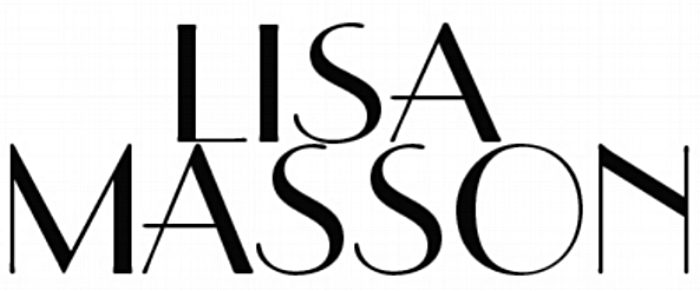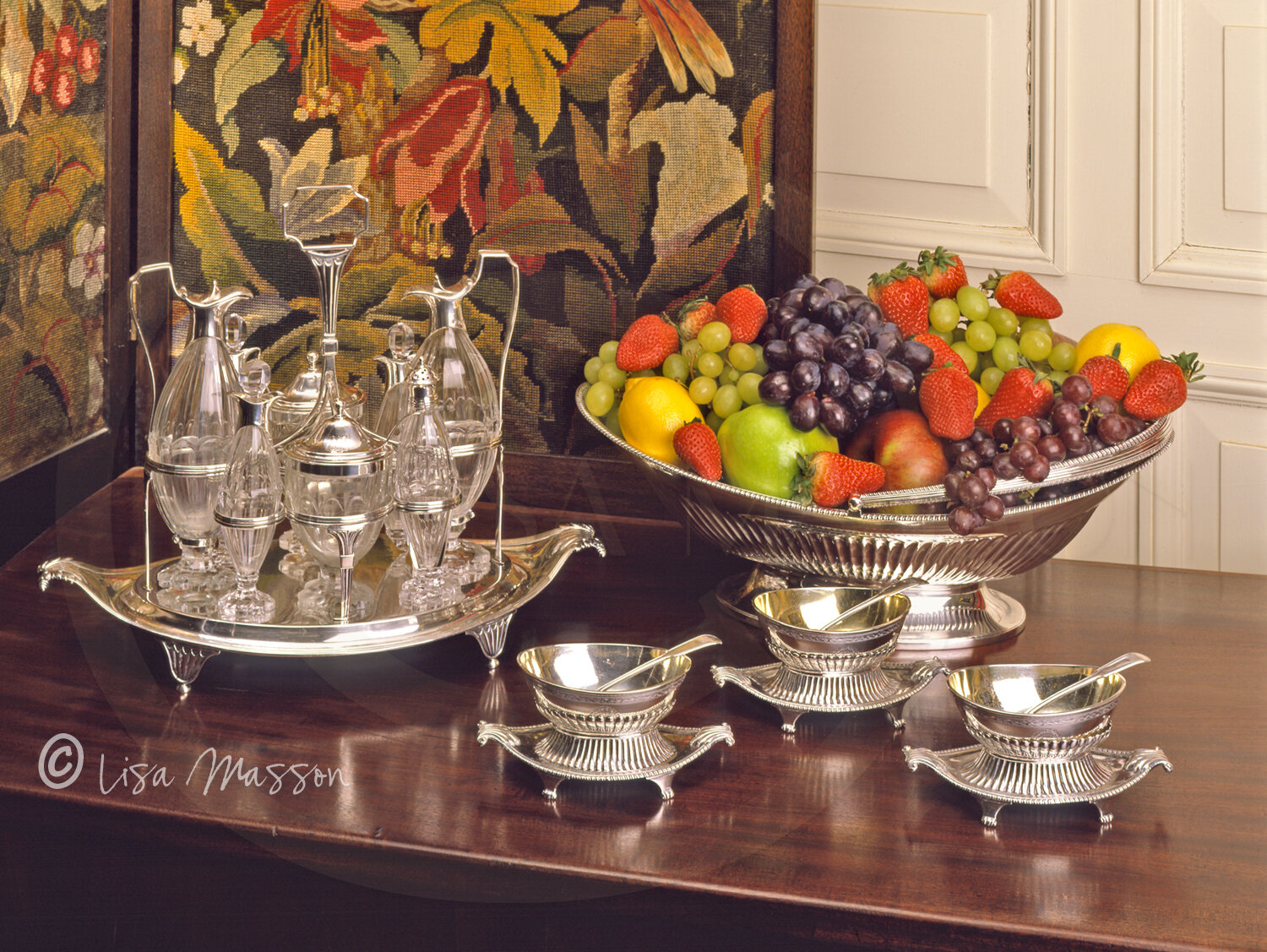
The silver fruit bowl, cruet stand, and salt cellars are the work of London silversmith Paul Storr circa 1798. A great-great-aunt executed the silk and wool needlework of flowers, fruits, and leaves.
Originally photographed for Southern Accents Magazine, in Maryland., text by Susan Stiles Dowell.
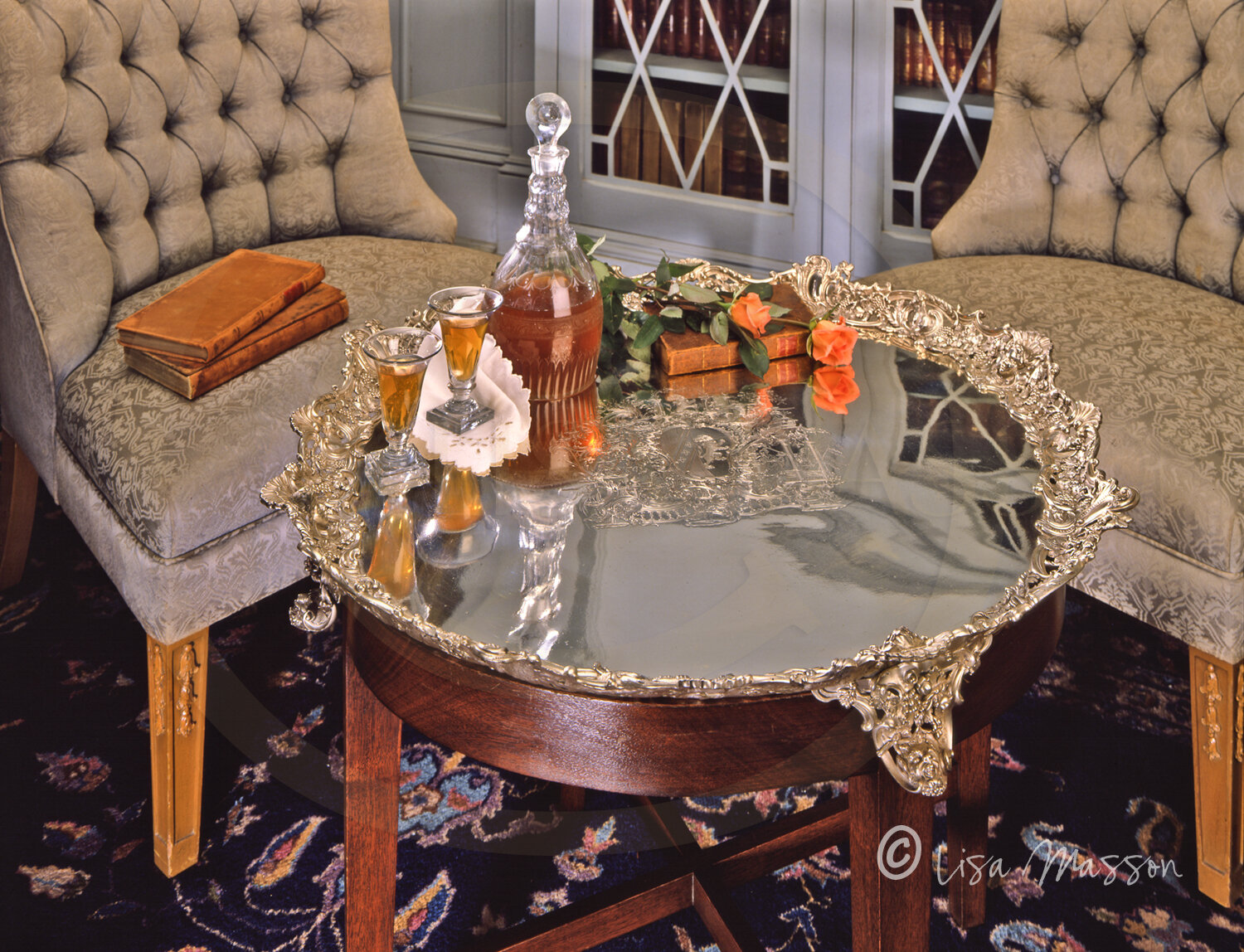
A large George lll silver waiter, engraved with family armorials, was made in London circa 1754. Handsomely wrought female heads adorn the pierced grapevine border. Family legend recounts how a newborn son was proffered on this three-foot tray as a birthday present to his twenty-one-year old father in 1800.
Originally photographed for Southern Accents Magazine, in Maryland., text by Susan Stiles Dowell.

A large George lll silver waiter, engraved with family armorials, was made in London circa 1754. Handsomely wrought female heads adorn the pierced grapevine border. Family legend recounts how a newborn son was proffered on this three-foot tray as a birthday present to his twenty-one-year old father in 1800.
Originally photographed for Southern Accents Magazine, in Maryland., text by Susan Stiles Dowell.
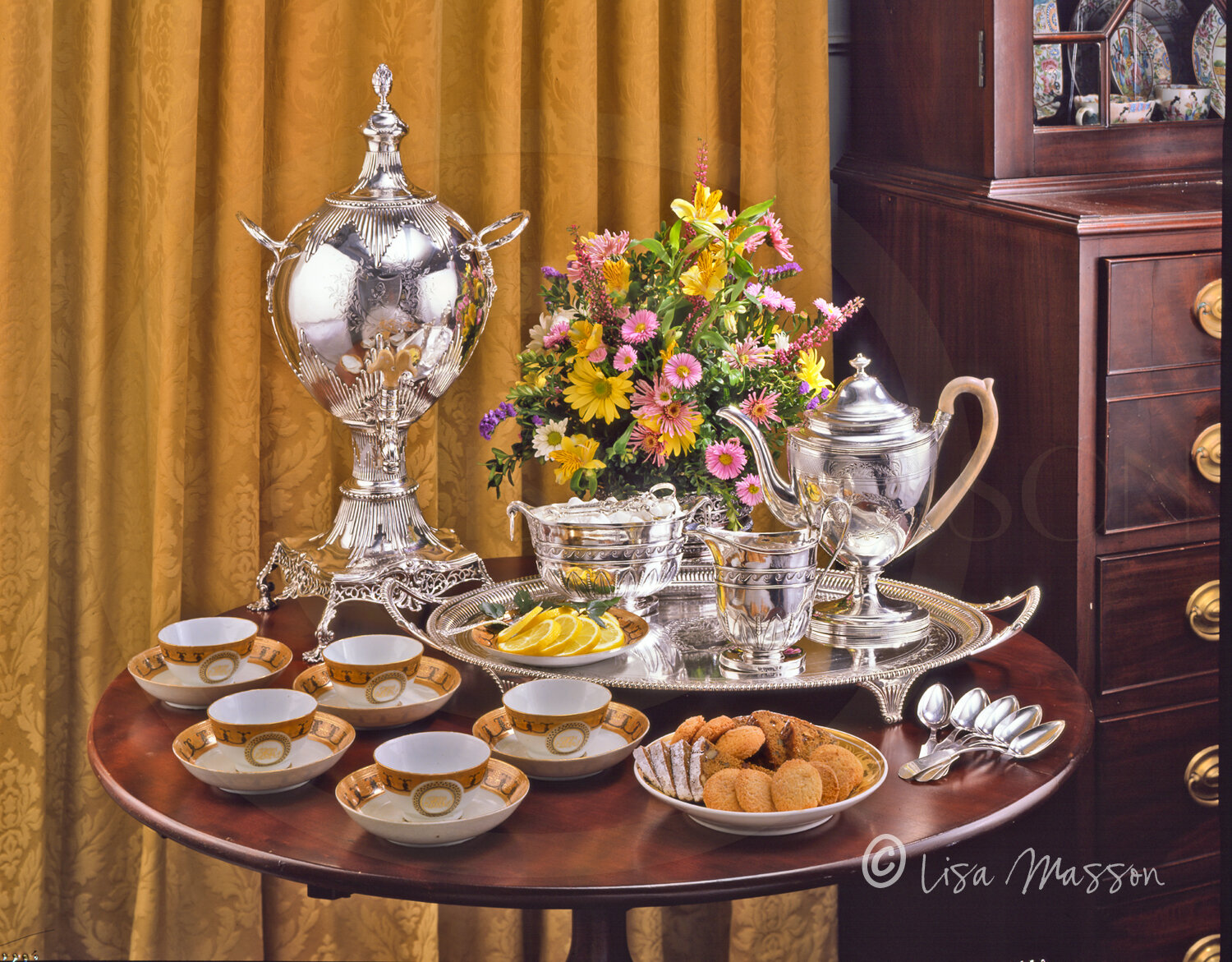
A hot water urn made in London circa 1770 by Charles Wright complements a tea service from the family of Francis Scott Key that was used at his wedding. The teapot, engraved with the crest and motto of the Key family, was made in London in 1799 by Robert and David Hennell, The circa 1796 cream pitcher and sugar bowl are the work of English silversmith John Schofield. The early 19th-Century export porcelain came from a Pittsburgh ancestress.
Originally photographed for Southern Accents Magazine, in Maryland., text by Susan Stiles Dowell.
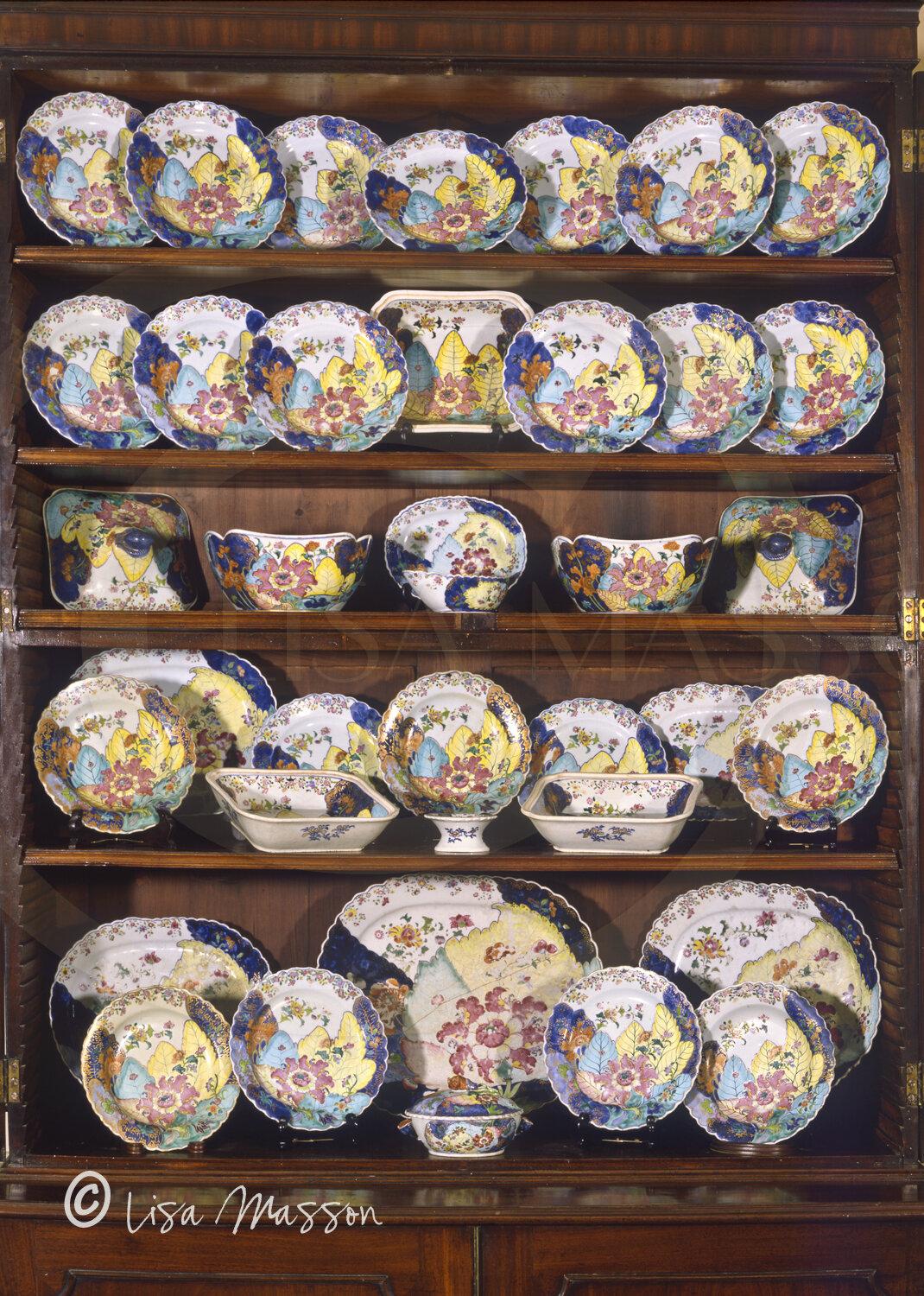
Named for the large lobed leaves in the background, tobacco leaf export china, made in China circa 1760, also displays a characteristic red peony-type flower in the foreground. The owners’ set, inherited from the wife’s mother and aunt, includes covered vegetable dishes, platters and small compotes.
Originally photographed for Southern Accents Magazine, in Maryland., text by Susan Stiles Dowell.
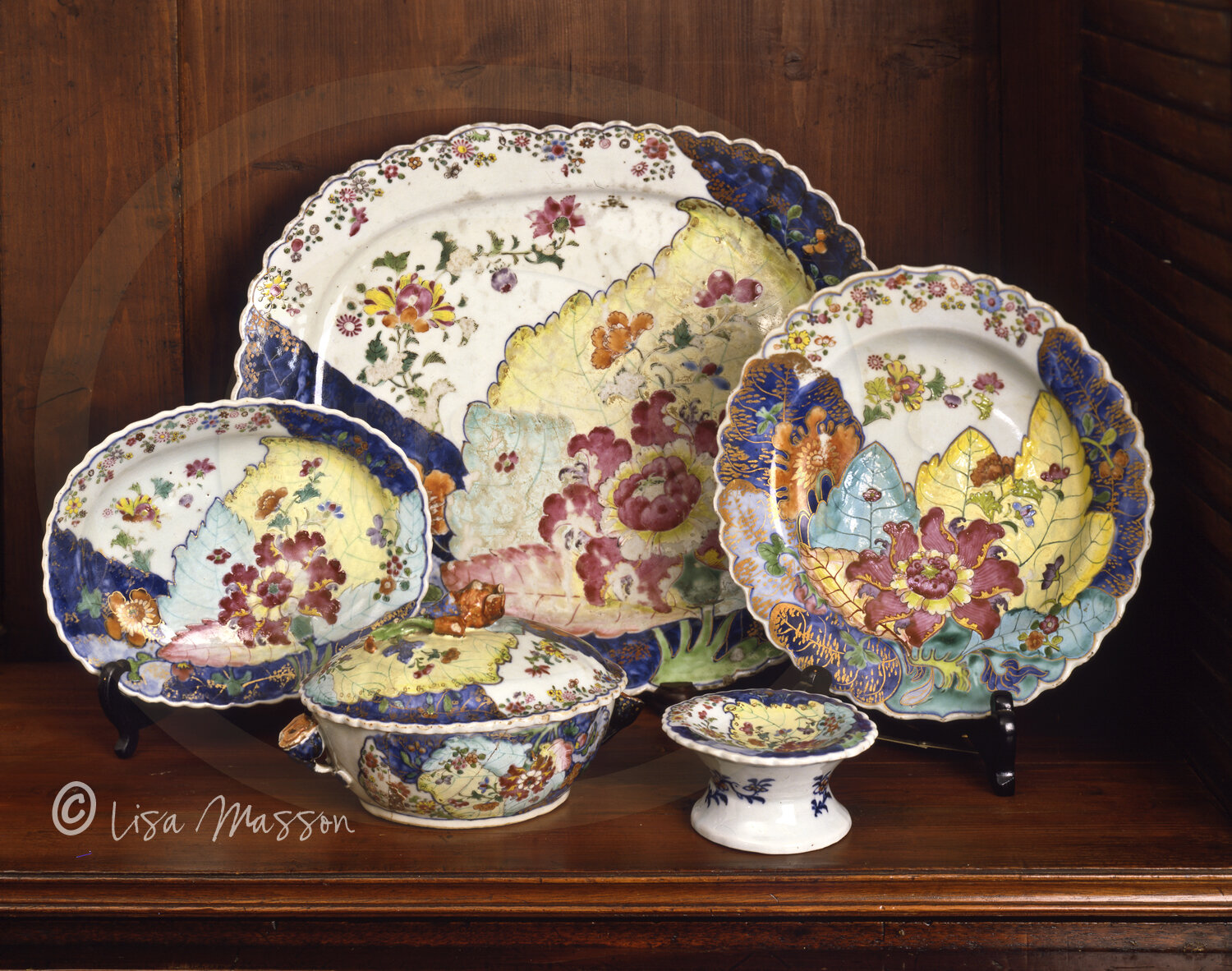
Named for the large lobed leaves in the background, tobacco leaf export china, made in China circa 1760, also displays a characteristic red peony-type flower in the foreground. The owners’ set, inherited from the wife’s mother and aunt, includes covered vegetable dishes, platters and small compotes.
Originally photographed for Southern Accents Magazine, in Maryland., text by Susan Stiles Dowell.
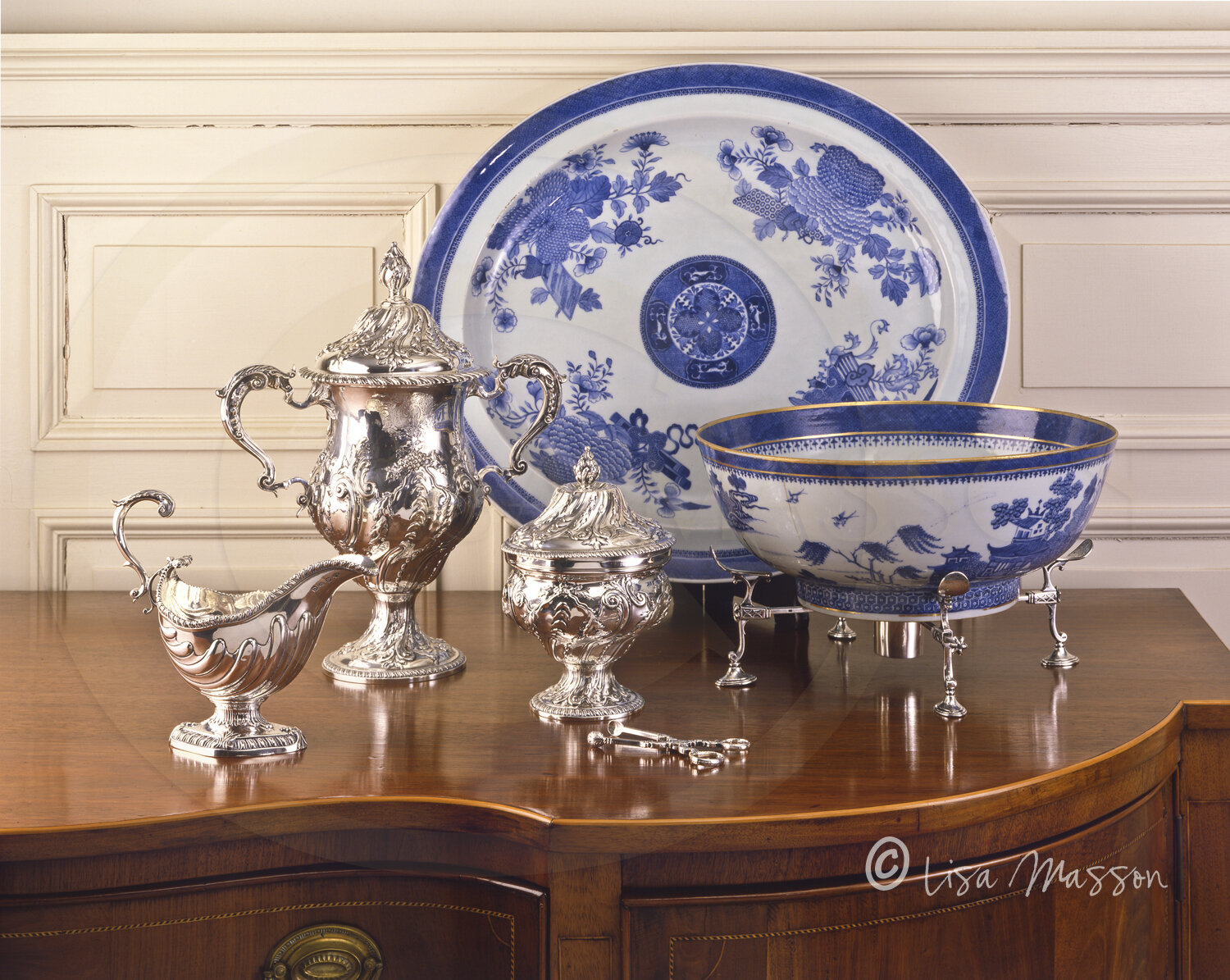
A grouping of silver made in London during the reign of George lll indicates a family preference for English silver that persisted through the Revolution. Daniel Smith and Robert Sharp made the rococo sauceboat, two handled covered cup, sugar bowl, and scissor like sugar tongs circa 1768. The Chinese export charger is blue Fitzhugh. The dish cross beneath the Naking punch bowl includes its original lamp and dates to about 1796.
Originally photographed for Southern Accents Magazine, in Maryland., text by Susan Stiles Dowell.
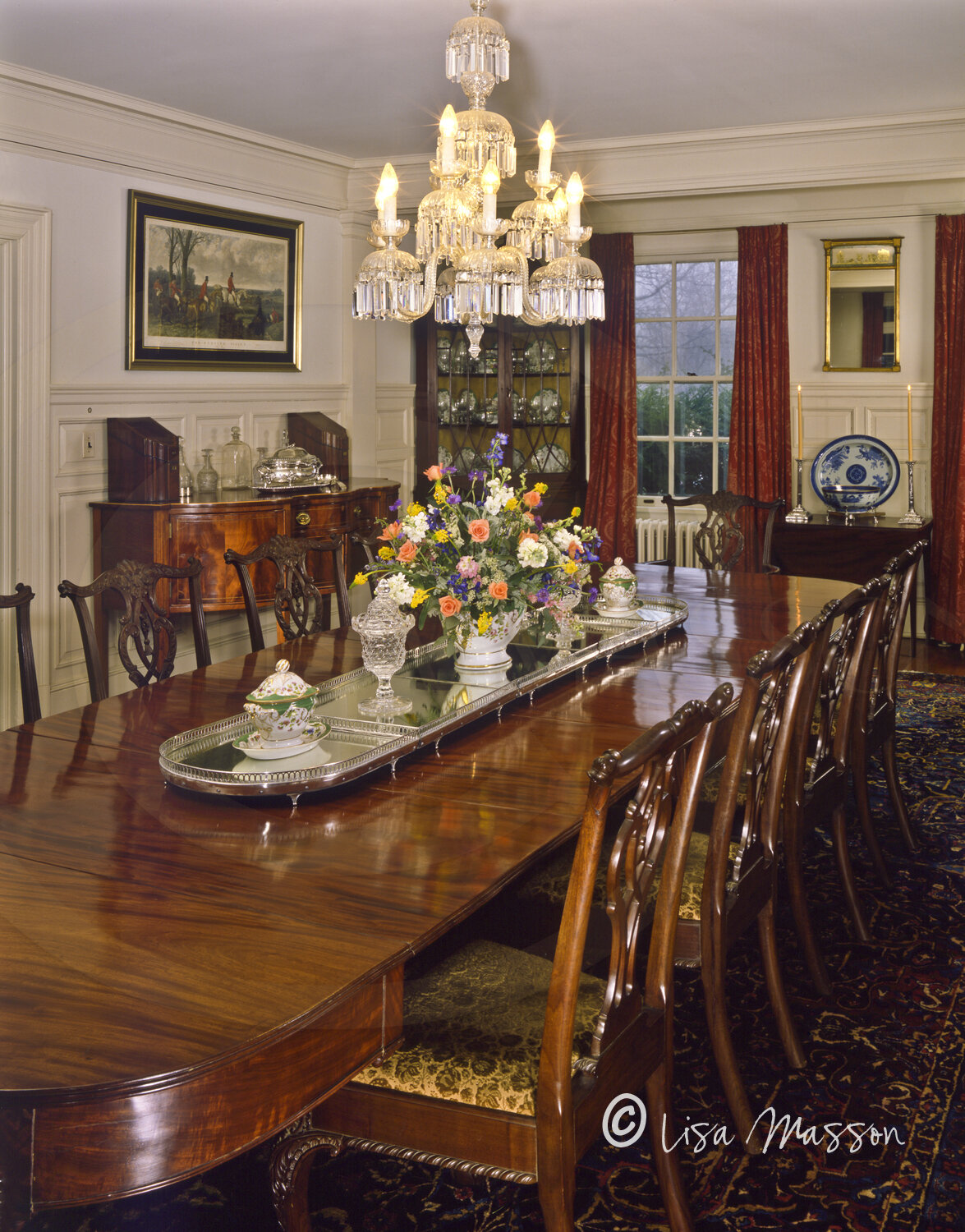
Dining Room with generations of heirlooms.
Originally photographed for Southern Accents Magazine, in Maryland..
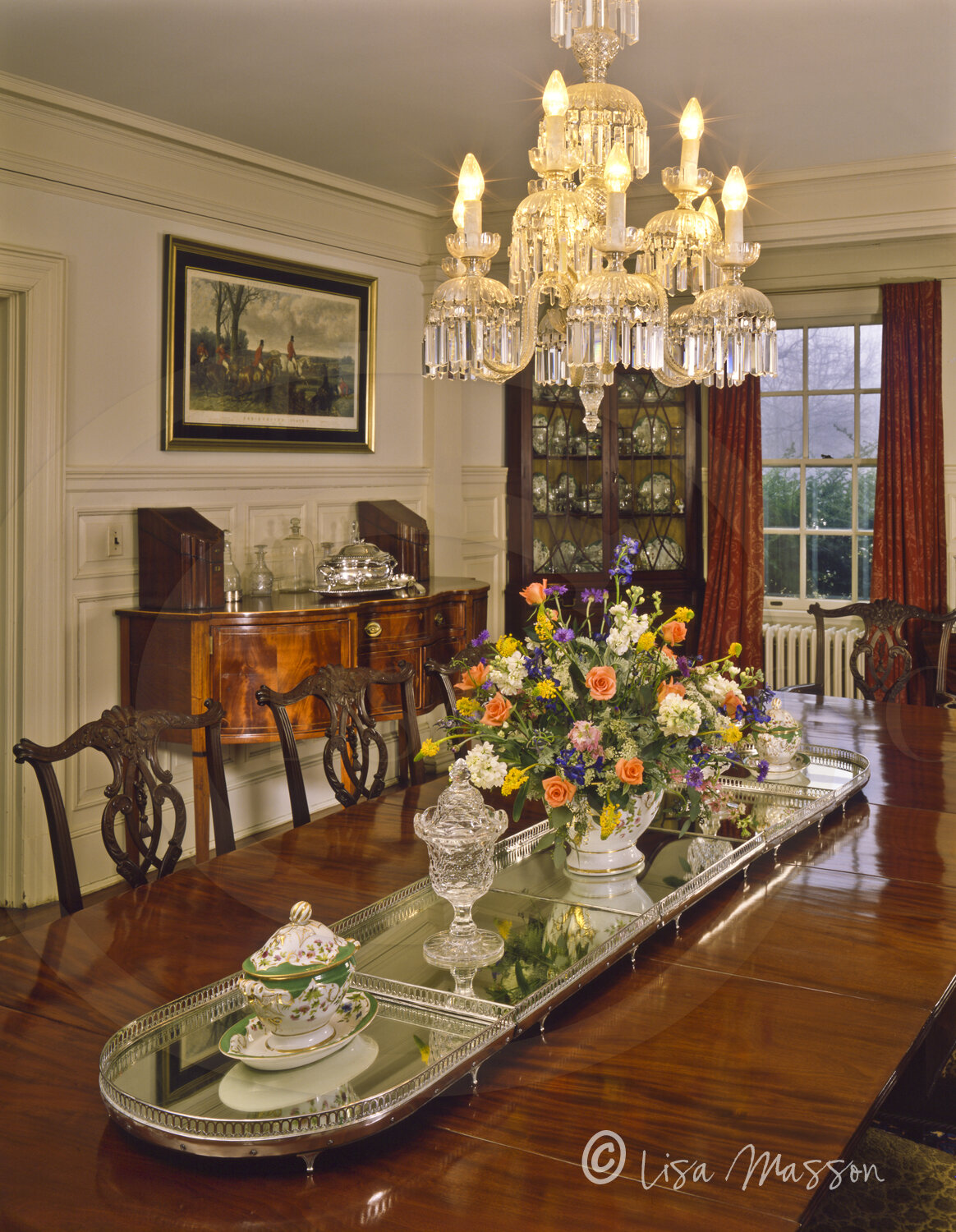
Dining room with generations of heirlooms.
Originally photographed for Southern Accents Magazine, in Maryland.
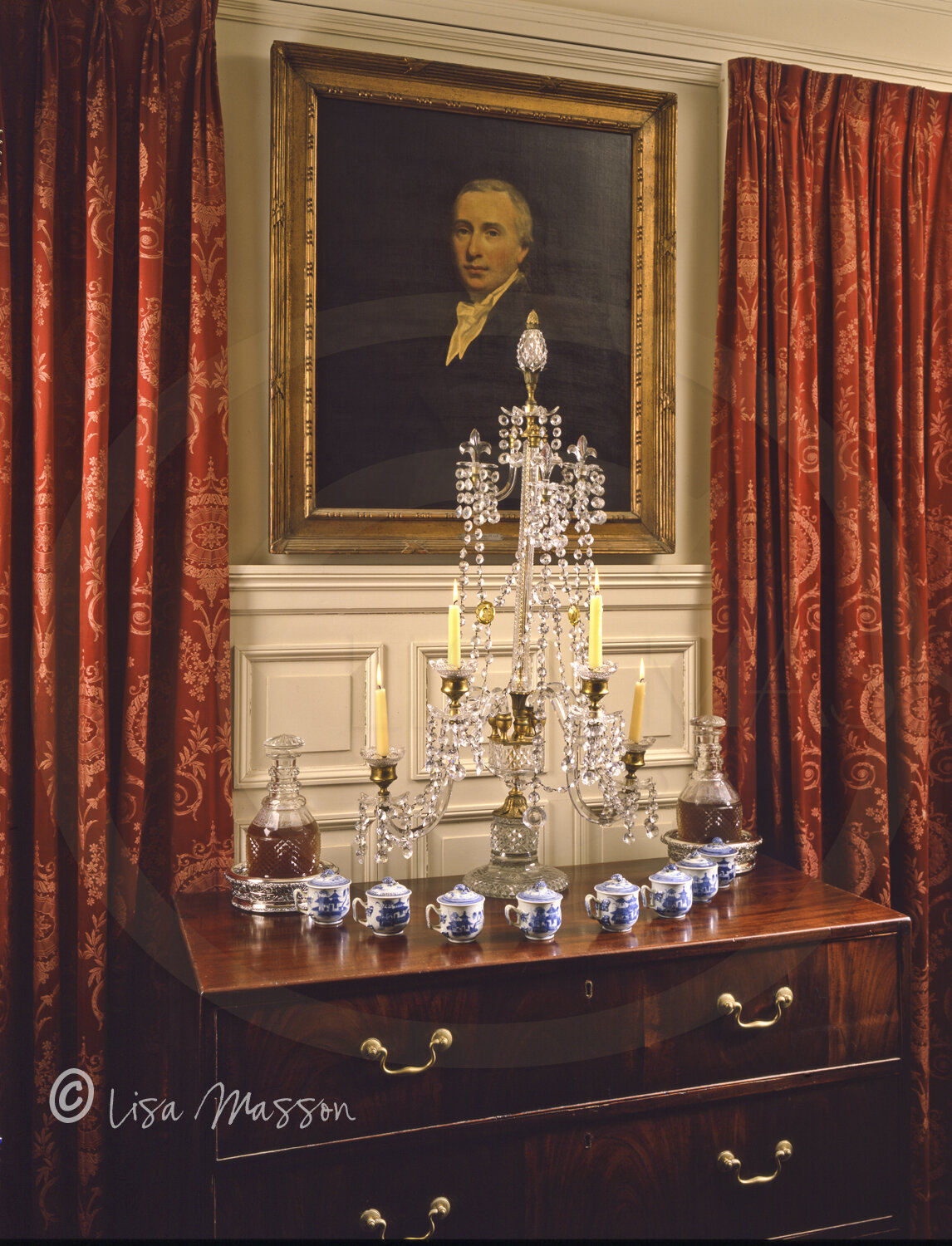
Blue Fitzhugh Chinese export covered cups.
Originally photographed for Southern Accents Magazine, in Maryland.
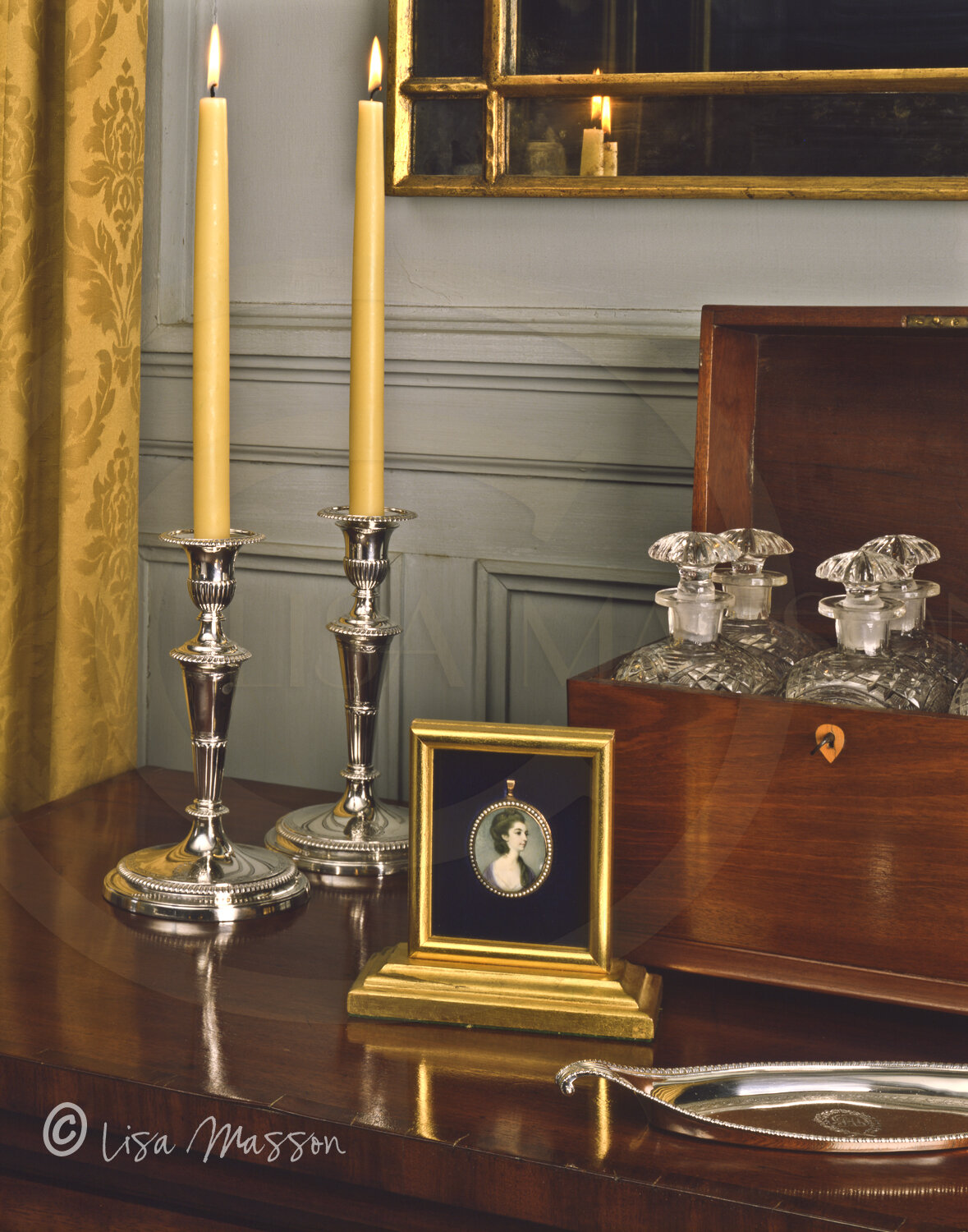
A miniature portrait on ivory surrounded by seed pearls, painted by celebrated miniaturist Richard Cosway circa 1774, depicts a bright young lady of London society who was a collateral ancestor of the owners.
Originally photographed for Southern Accents Magazine, in Maryland., text by Susan Stiles Dowell.
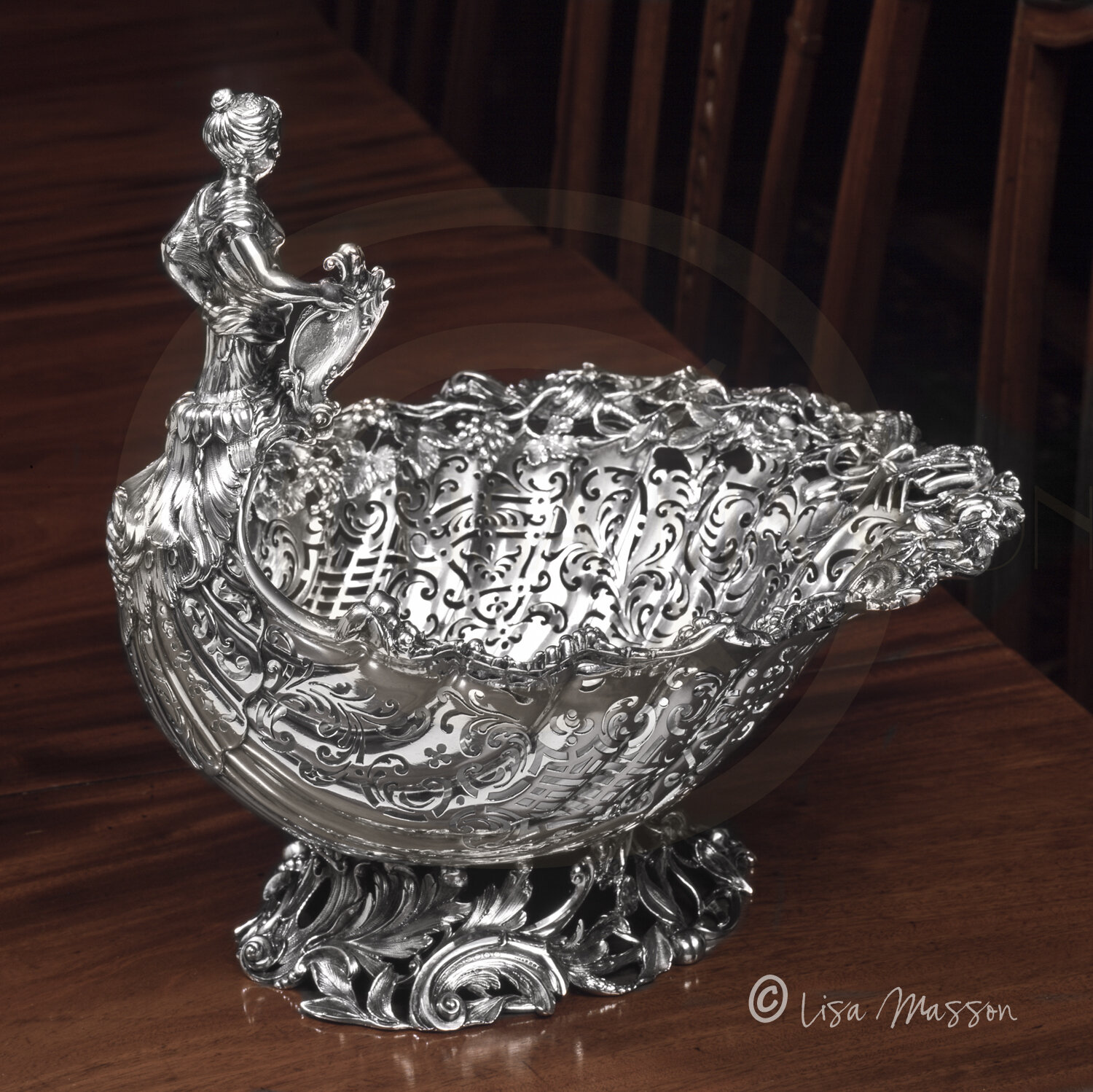
Ceres, the Roman goddess of agriculture, bears the family coat of arms on this bread basket intricately wrought with fruits and implements of the harvest. Among the wealthiest landowners in the South until the civil war, the owners’ ancestors had switched from tobacco to wheat cultivation well before the revolution. The large silver basket, made in London by John Wirgman, circa 1754, manifest both the source and magnitude of the family’s wealth.
Originally photographed for Southern Accents Magazine, in Maryland., text by Susan Stiles Dowell.
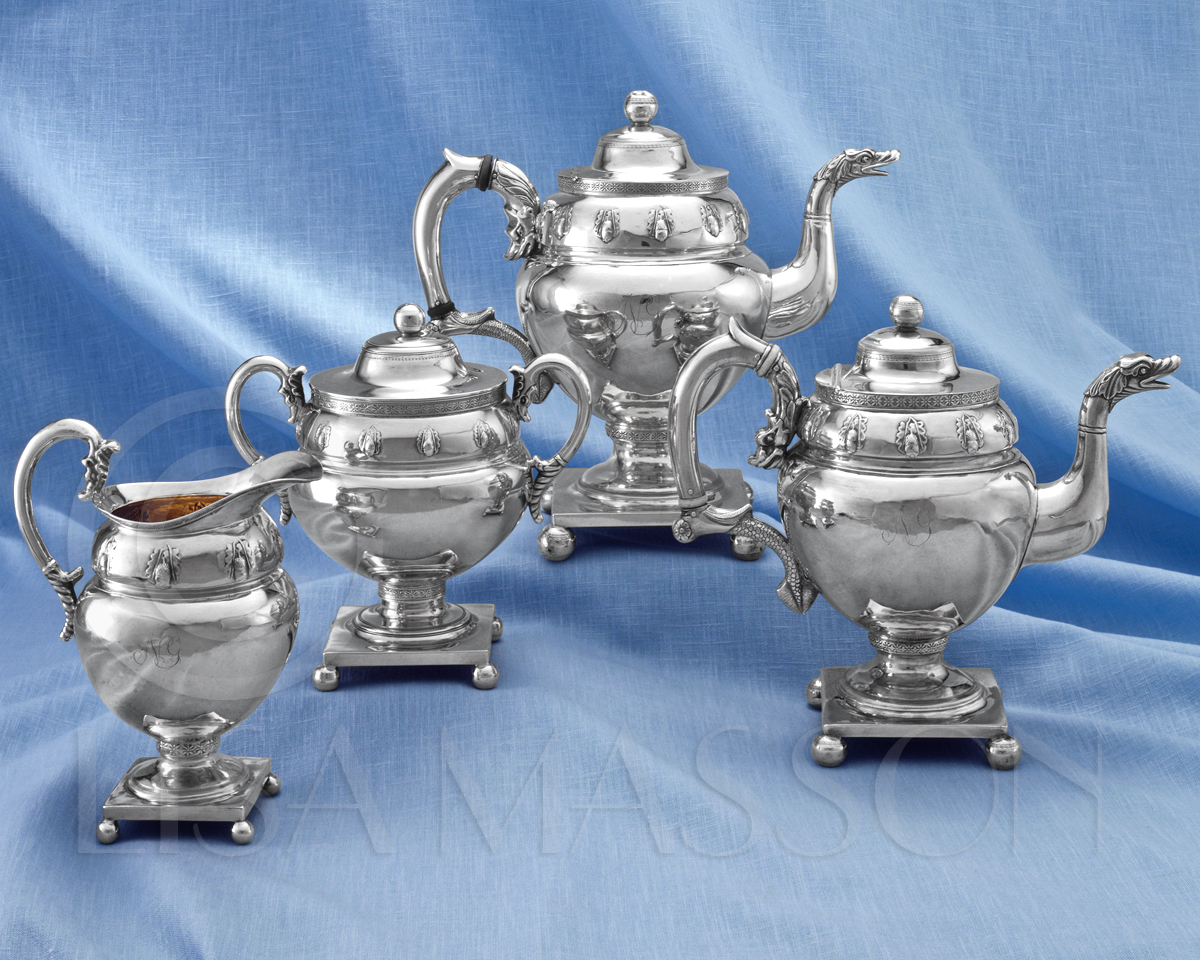
The Kirk Family acquired this 1818 Empire-Style Tea Set in the 188os for its collection. The original sugar bowl had been lost, and another was made to match the set in 18882. Dolphin handles and sea serpent spouts suggest Baltimore's maritime orientation, while the embossed acorns demonstrate an emergent interest in increased ornamentation, a development that would later lead to Kirk's repousse style.
Originally photographed for Southern Accents Magazine, at Maryland Historical Society, Baltimore, MD., text by Susan Stiles Dowell.
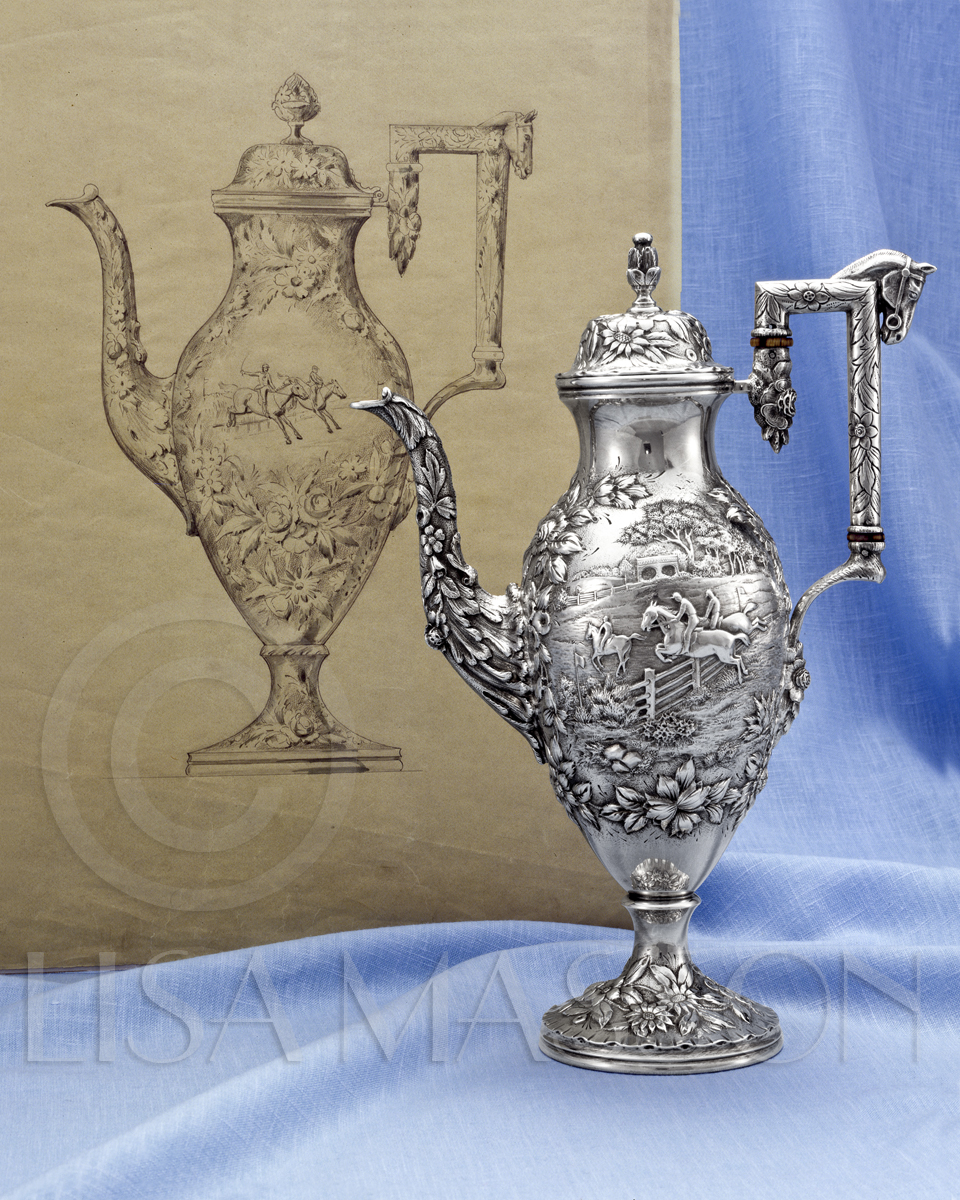
Original design drawing for this custom-made repousse coffeepot, circa 1890, survives from among the Maryland Historical Society's Kirk Archives. Design changes instituted between the inception and realization of the piece, probably used as a steeplechase trophy, are illustrated in the finial and the reversal of the jumping horses.
Originally photographed for Southern Accents Magazine, at Maryland Historical Society, Baltimore, MD., text by Susan Stiles Dowell.

The tureen, pitcher and cup are typical of Samual Kirk's repousse. The 1870 tureen with an arm-holding-sword finial exhibits a Turkish influence. The size and shape of the tall pitcher, circa 1860, are characteristic of his and, later, the firm's repousse stlye between 1830 and World War ll. The 1828 two-handled cup is one of the first know examples of use of the technique.
Originally photographed for Southern Accents Magazine, at Maryland Historical Society, Baltimore, MD., text by Susan Stiles Dowell.
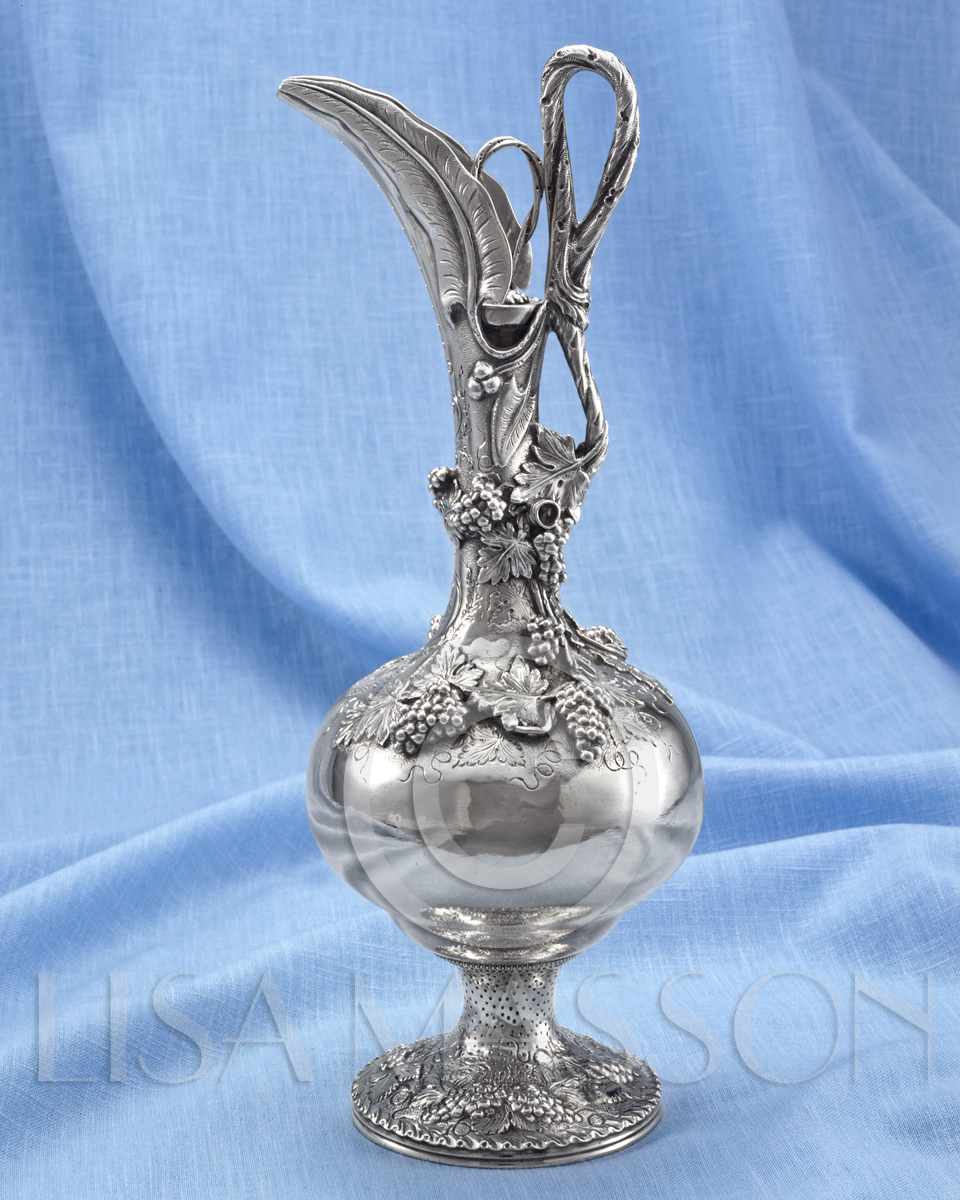
in 1855, at a time when most porcelain made in the West copied silver pieces, Samuel Kirk produced an exquisite silver copy parian porcelain ewer. The grapes and vines handworked and applied to the ewer indicate its use for wine.
Originally photographed for Southern Accents Magazine, at Maryland Historical Society, Baltimore, MD., text by Susan Stiles Dowell.
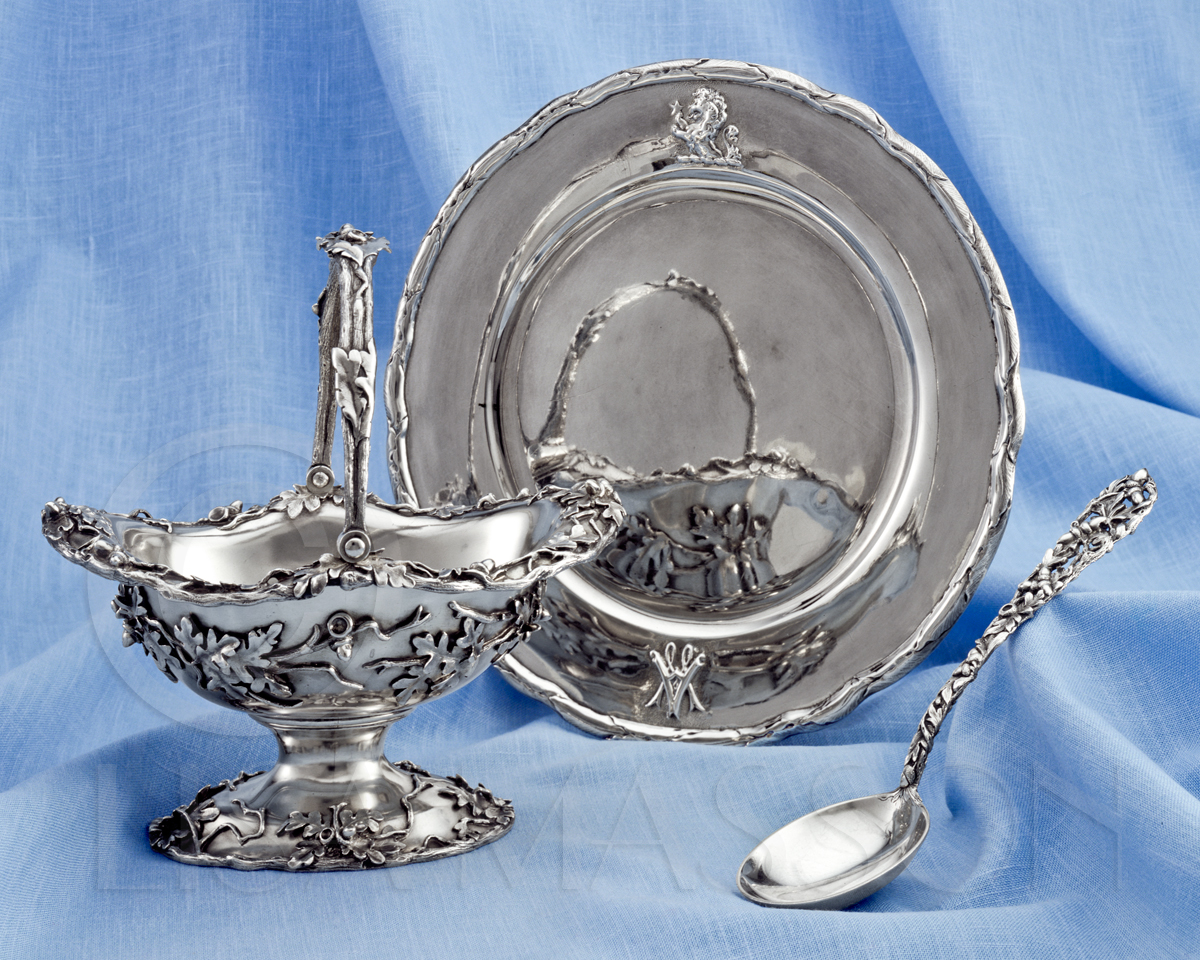
Three examples of Kirk's work, commissioned by wealthy New York clients, diverge remarkably from the repousse style commonly associated with him. A naturalistic sugar basket was made for Thomas Fortune Ryan, founder of the New York Stock Exchange: a dinner plate bearing the crest and monogram of William Vincent Astor was made in the 1860's as part of a mammoth dinner service.
Originally photographed for Southern Accents Magazine, at Maryland Historical Society, Baltimore, MD., text by Susan Stiles Dowell.
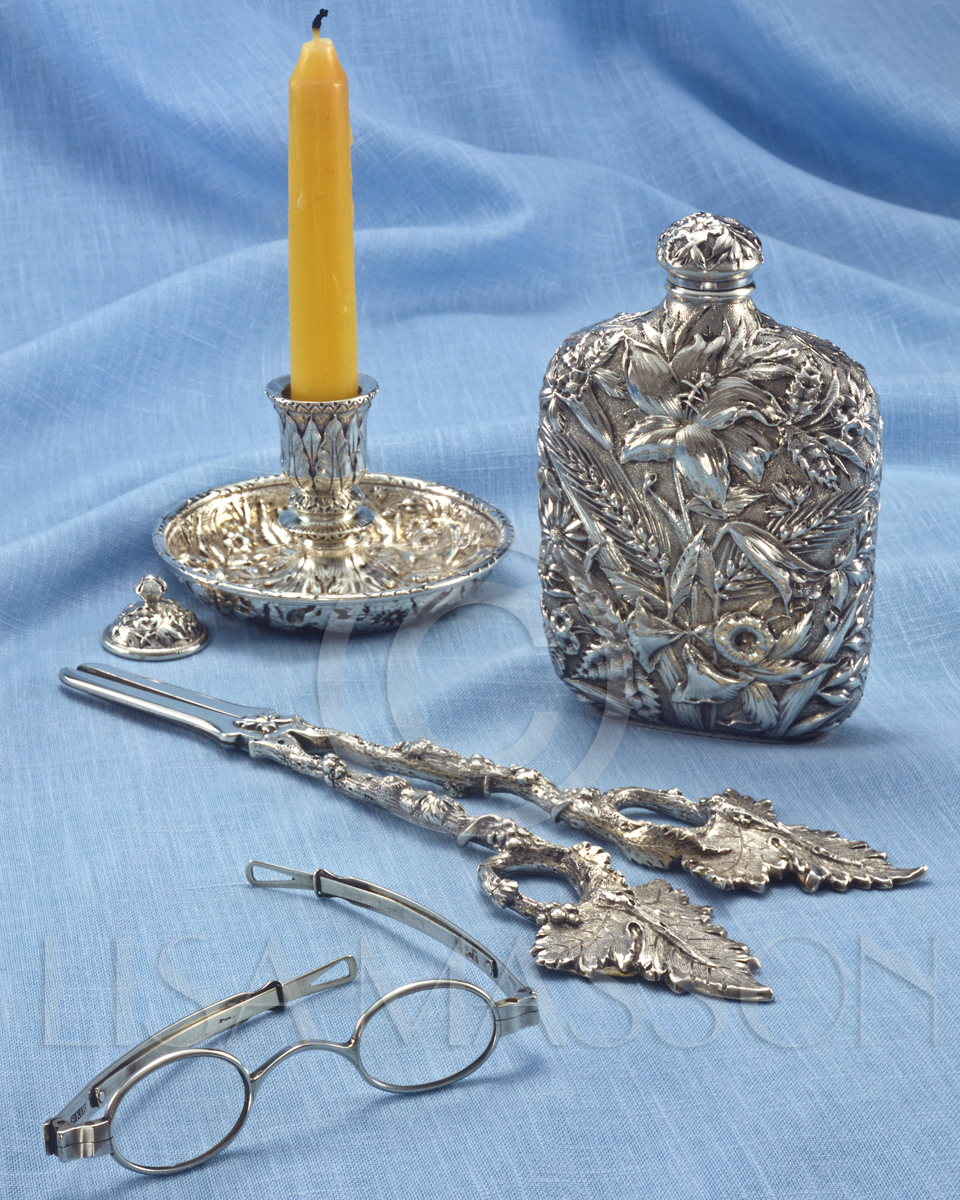
Few examples of the small items of the silversmith's trade have survived the passage of time. The silver spectacles were made around 1815 in the infancy of Kirk's Baltimore business. A pair of 1880 shears, unusual in American silver, were probably used for clipping bunches of grapes at the dessert table. the 1915 flask re-creates a design taken from botanical engravings. The traveling candlestick and snuffer, circa 1850, is one of a pair that fits together when collapsed.
Originally photographed for Southern Accents Magazine, at Maryland Historical Society, Baltimore, MD., text by Susan Stiles Dowell.

Kirk's late 19th-century interpretation of what Oriental metalwork might look like appears in a square coffee pot with tall, thin.legs, a naturalistic repousse surface, and a Chinese coolie finial.
Originally photographed for Southern Accents Magazine, at Maryland Historical Society, Baltimore, MD., text by Susan Stiles Dowell.
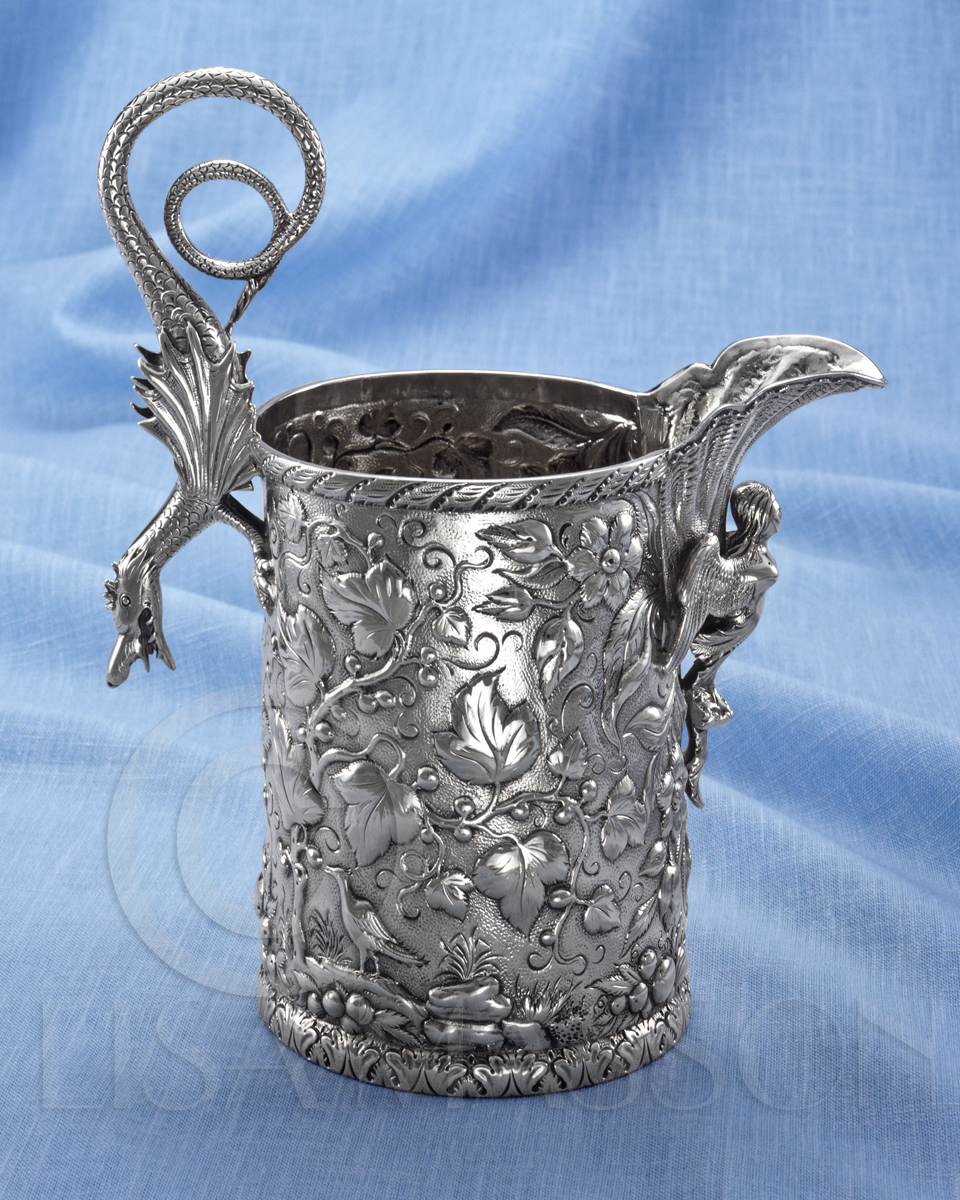
Possibly made to hold syrup, an imaginative and finely wrought pitcher, circa 1840, sports a wyvern handle and harpy figure, beneath a shell spout.
Originally photographed for Southern Accents Magazine, at Maryland Historical Society, Baltimore, MD., text by Susan Stiles Dowell.

19th century; repousse style; artisan; coffee pot with a botanical motif
Originally photographed for Southern Accents Magazine, at Maryland Historical Society, Baltimore, MD.
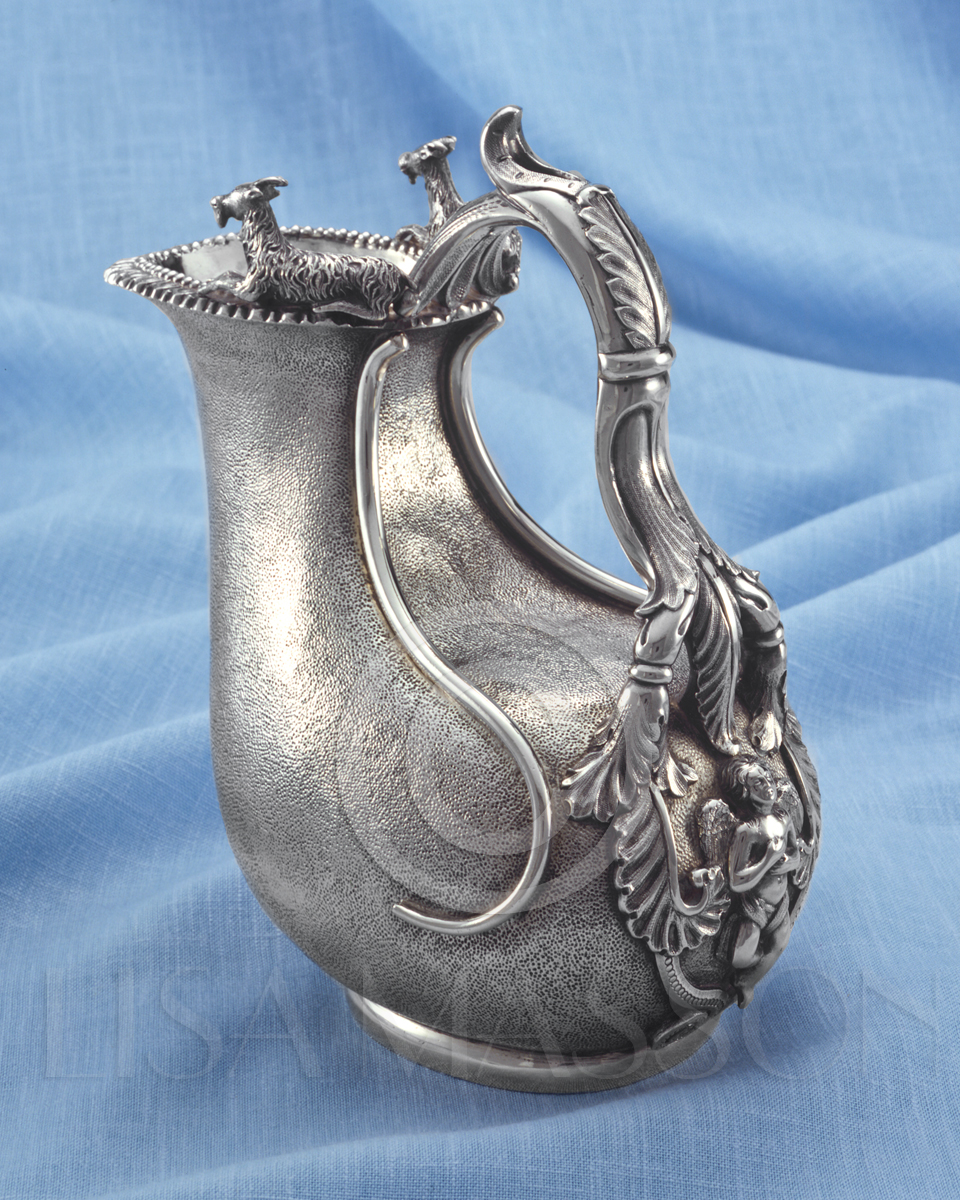
Kirk silver pitcher with goats and an angel.
Originally photographed for Southern Accents Magazine, at Maryland Historical Society, Baltimore, MD.
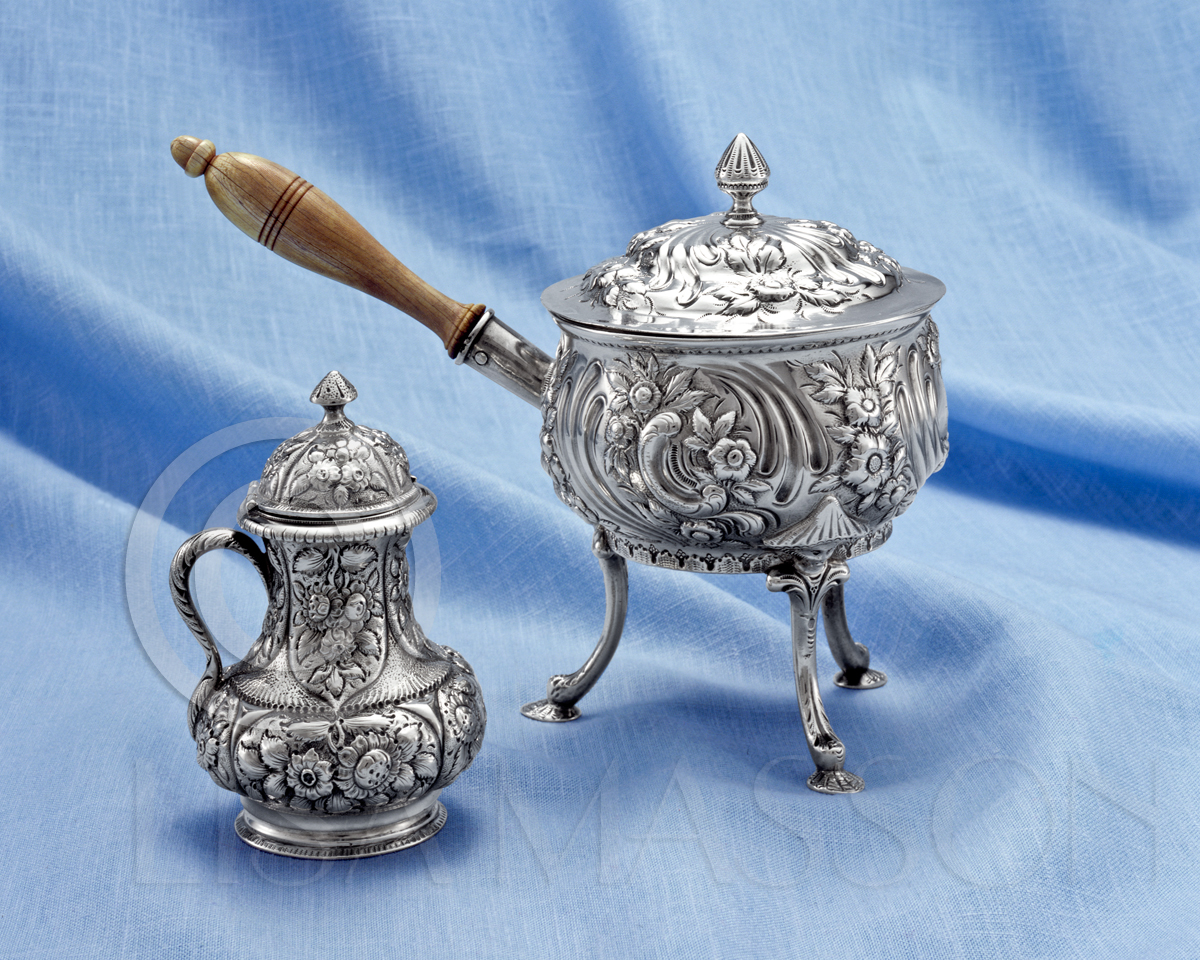
Kirk Silver Pot with wooden handle, covered urn, botanical repousse.
Originally photographed for Southern Accents Magazine, at Maryland Historical Society, Baltimore, MD.
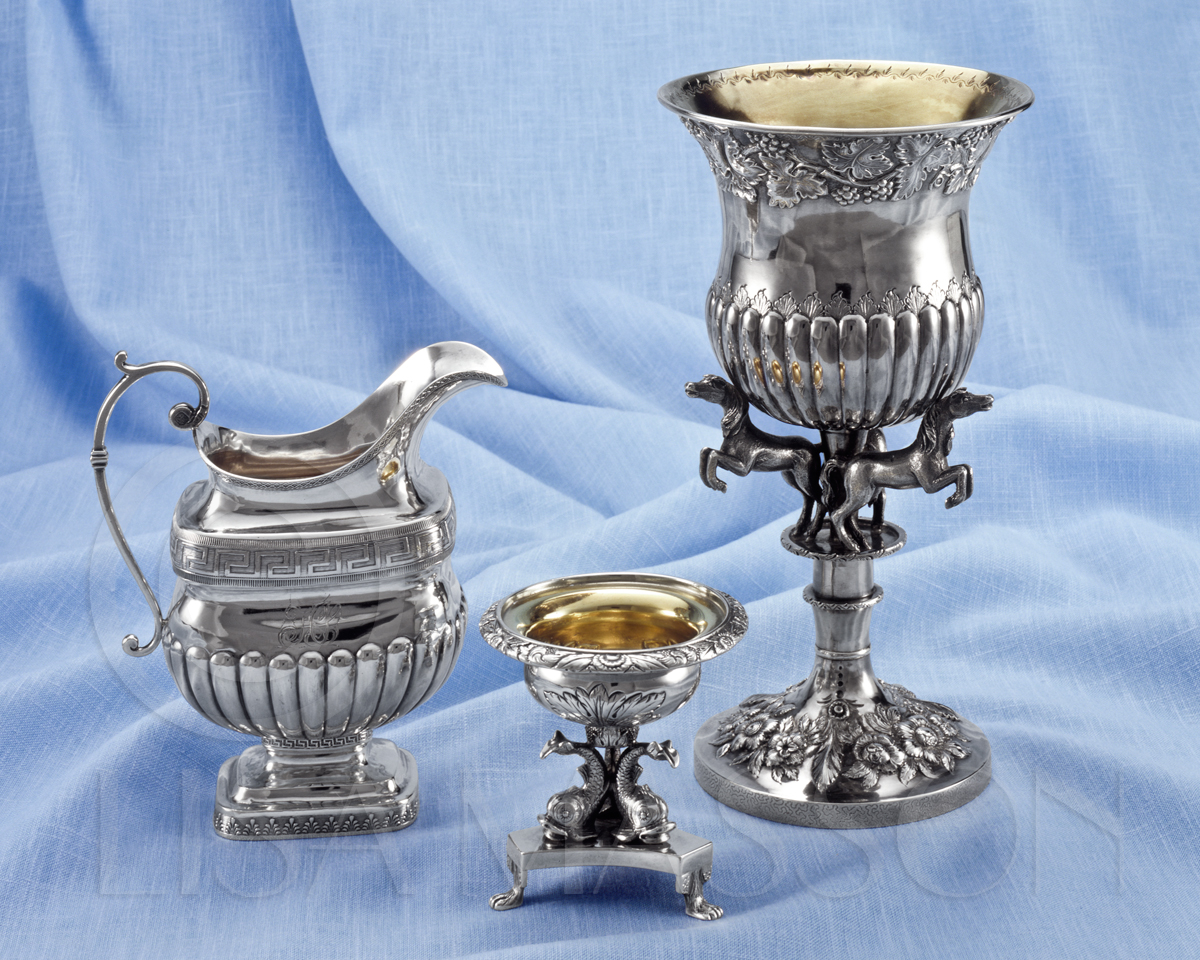
Kirk silver creamer, small bowl and wine goblet.
Kirk silver, on the left, among the earliest extant examples of Kirk’s work. made after he moved from Philadelphia to Baltimore, is an 1840 horse racing trophy
Originally photographed for Southern Accents Magazine, at Maryland Historical Society, Baltimore, MD.
This image is the “krasny kut” or “beautiful corner” that contains the Laurence A. Steinhardt icon collection. Enhanced by the vermillion setting originally discovered by Ambassador Steinhardt’s daughter in a Moscow mansion, icons completely cover the four walls from ceiling to floor. The grandeur of the Directoire furniture, in the family for five generations, adds a classic touch to the old-world scene. Among the significant treasures on the buffet are 19th-century bronzes of Czar Mikhail Theodoivich and Czar Alexei Mikhailovich, a handsome royal caviar server once presented to the czar, and a pair of French Empire urns.
Photographed for Southern Accents Magazine in Washington, DC. Text by Lucy Putnam Post.
In this important 18th-m century carved ivory icon, a central scene of the Resurrection is surrounded by the 12 feast days of the Orthodox Church. Past ambassador to Russia, Jack F. Matlock, Jt., was amazed to see this “very rare” icon outside a museum.
Photographed for Southern Accents Magazine in Washington, DC. Text by Lucy Putnam Post.

This rare icon depicting Our Lady Tichvinskaya dates from the early 1700s and is covered with a gesso, carved riza (metal surround), and gold leaf overlay.
Photographed for Southern Accents Magazine in Washington, DC. Text by Lucy Putnam Post.
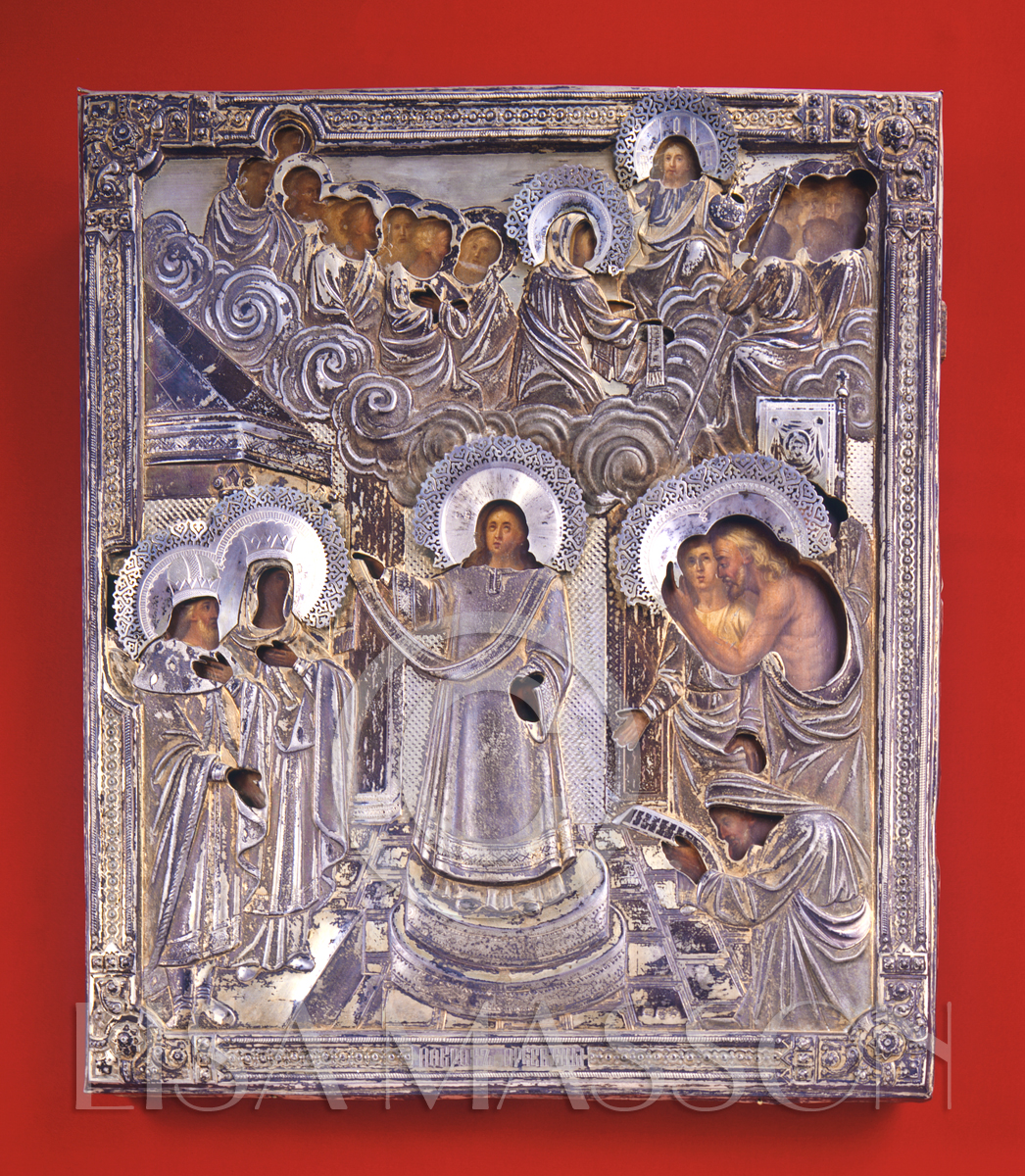
Our Lady of Intercession is a very special image to the religious devotee of the Russian Orthodox Church. This Icon with silver basma (decorative metal border) and carved, gilded frame in byzantine style depicts six feasts of the Orthodox Church
Photographed for Southern Accents Magazine in Washington, DC. Text bu Lucy Putnam Post.
The Mother of God of Smolensk centers this mid-17th-century triptych. The left wing of the triptych depicts the Resurrection, Annunciation, and the Crucifixion of Christ, while the right wing carries a painting of the Decollation of Saint John the Baptist with Christ Emmanuel.
Photographed for Southern Accents Magazine in Washington, DC. Text bu Lucy Putnam Post.
Dating back to the early 1800s and a focal point in Steinhardt icon room is this glorious image of Saint Nicholas, the Miracle Worker. the painted border simulates enamel. Christ and Mother of God float in the clouds on each side of Saint Nicholas.
Photographed for Southern Accents Magazine in Washington, DC. Text by Lucy Putnam Post.
This menological icon, or all-saints calendar is recorded to be from the 17th-century School of Stroganov. The upper border is centered by a painting of the Old Testament Trinity. The register below the border shows Christ enthroned and flanked by the Mother of God and Saint John the baptist. Lower registers depict church fathers and various saints.
Photographed for Southern Accents Magazine in Washington, DC. Text bu Lucy Putnam Post.
Photographed for Southern Accents Magazine in Washington, DC.
Dating from the early 1600s, this icon depicting the Annunciation has a silver and gilt basma with an exquisite border of pearls.
Photographed for Southern Accents Magazine in Washington, DC. Text by Lucy Putnam Post.
Russian Icon
Photographed for Southern Accents Magazine in Washington, DC
The mother of God of Kazan is depicted in the provincial 19th-century icon on the left. A Russian triptych with Saint Nicholas, the Miracle Worker, is in the center surrounded by scenes from his life; wings of the triptych show eight other life scenes, four on each wing, The extremely popular Saint Elijah is seen in the small icon on the right, circa 1900 with a silver and gilt riza.
Photographed for Southern Accents Magazine in Washington, DC. Text by Lucy Putnam Post.
Russian Icons
Photographed for Southern Accents Magazine in Washington, DC
A Russian triptych with Saint Nicholas, the Miracle Worker, is in the center surrounded by scenes from his life; wings of the triptych show eight other life scenes, four on each wing.
Photographed for Southern Accents Magazine in Washington, DC. Text by Lucy Putnam Post.
Russian Icon
Photographed for Southern Accents Magazine in Washington, DC
Photographed for Southern Accents Magazine in Washington, DC
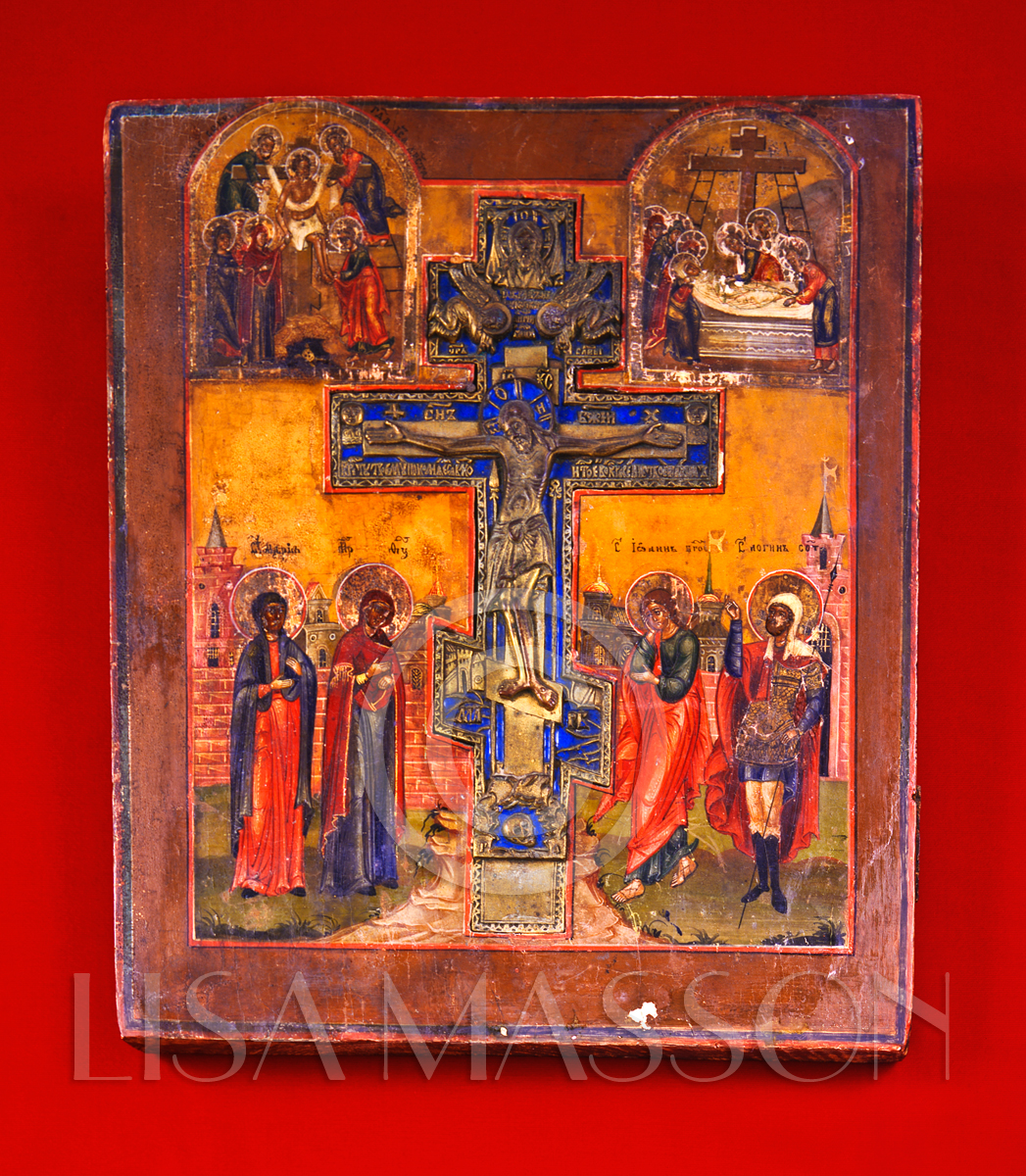
Photographed for Southern Accents Magazine in Washington, DC
Russian Icons
Photographed for Southern Accents Magazine in Washington, DC
Russian Icon
Photographed for Southern Accents Magazine in Washington, DC
Russian Icons
Photographed for Southern Accents Magazine in Washington, DC.
The extremely popular Saint Elijah is seen in this small icon, circa 1900 with a silver and gilt riza.
Photographed for Southern Accents Magazine in Washington, DC. Text by Lucy Putnam Post.
The mother of God of Kazan is depicted in the provincial 19th-century icon
Photographed for Southern Accents Magazine in Washington, DC. Text by Lucy Putnam Post.
Photographed for Southern Accents Magazine in Washington, DC
Russian Icon Mother and Child.
Photographed for Southern Accents Magazine in Washington, DC
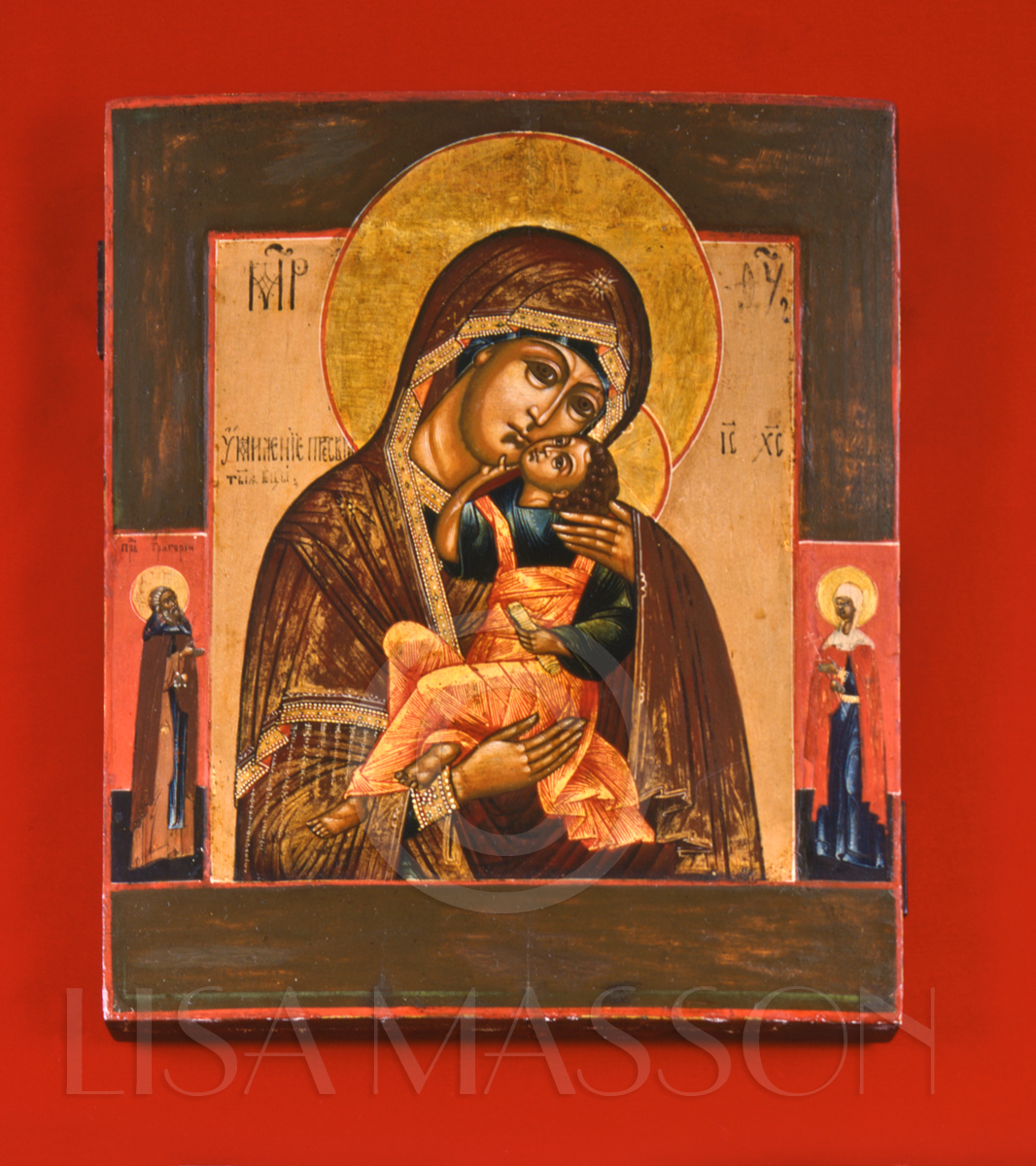
Photographed for Southern Accents Magazine in Washington, DC

A high-ranking Chinese government official gave this animal carving of Serbian jade to a young naval officer who was on temporary duty in China during the last year of World War ll. That navy officer was Lieutenant Claude Trapp, and this early 20-century carving began his lifelong enchantment with jade. Some 30 years later, Dr Trapp asked the late George Headley to to design a setting for this jade beauty with a jeweled cage of diamonds and rubies, plus a nephrite plaque.
The Trapp Jade Collection, photographed for Southern Accents Magazine in Lexington, Kentucky. Text by Lucy Putnam Post
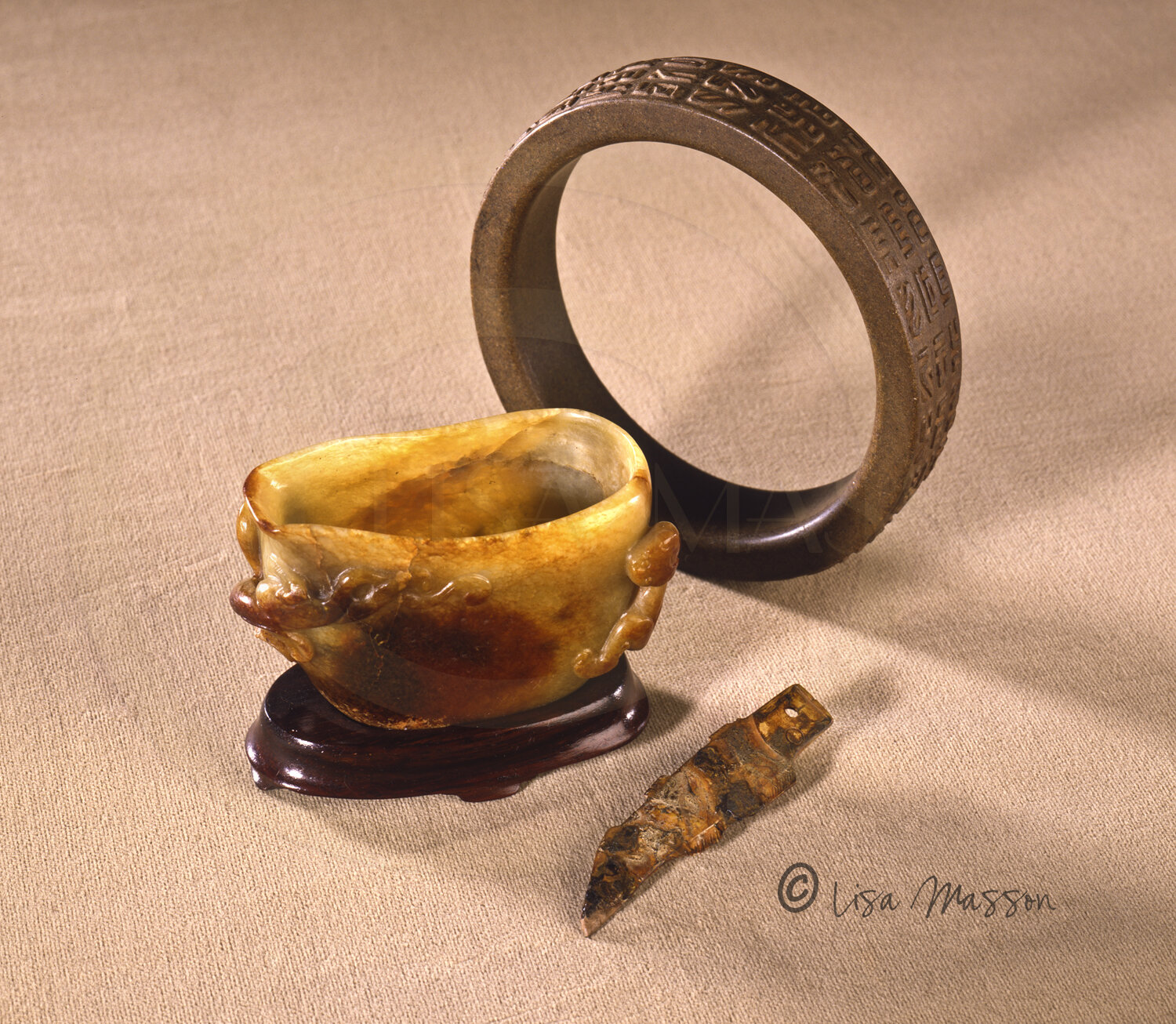
The sacrificial wine cup in the left foreground is from the Sung dynasty (A.D.960-1279). Buried in a royal tomb for centuries, the nephrite jade has discolored, a characteristic of tomb jades left in contact with the earth over a long period of time. The tiny nephrite amulet in the right foreground is carved as a fish and dates back to the Zhou dynasty (1050 B.C. to A.D. 256). Like many ancient jades, the Han dynasty bracelet-like burial piece (206 B.C. to A.D. 220) has been difficult to identify with certainty.
The Trapp Jade Collection, photographed for Southern Accents Magazine in Lexington, Kentucky. Text by Lucy Putnam Post
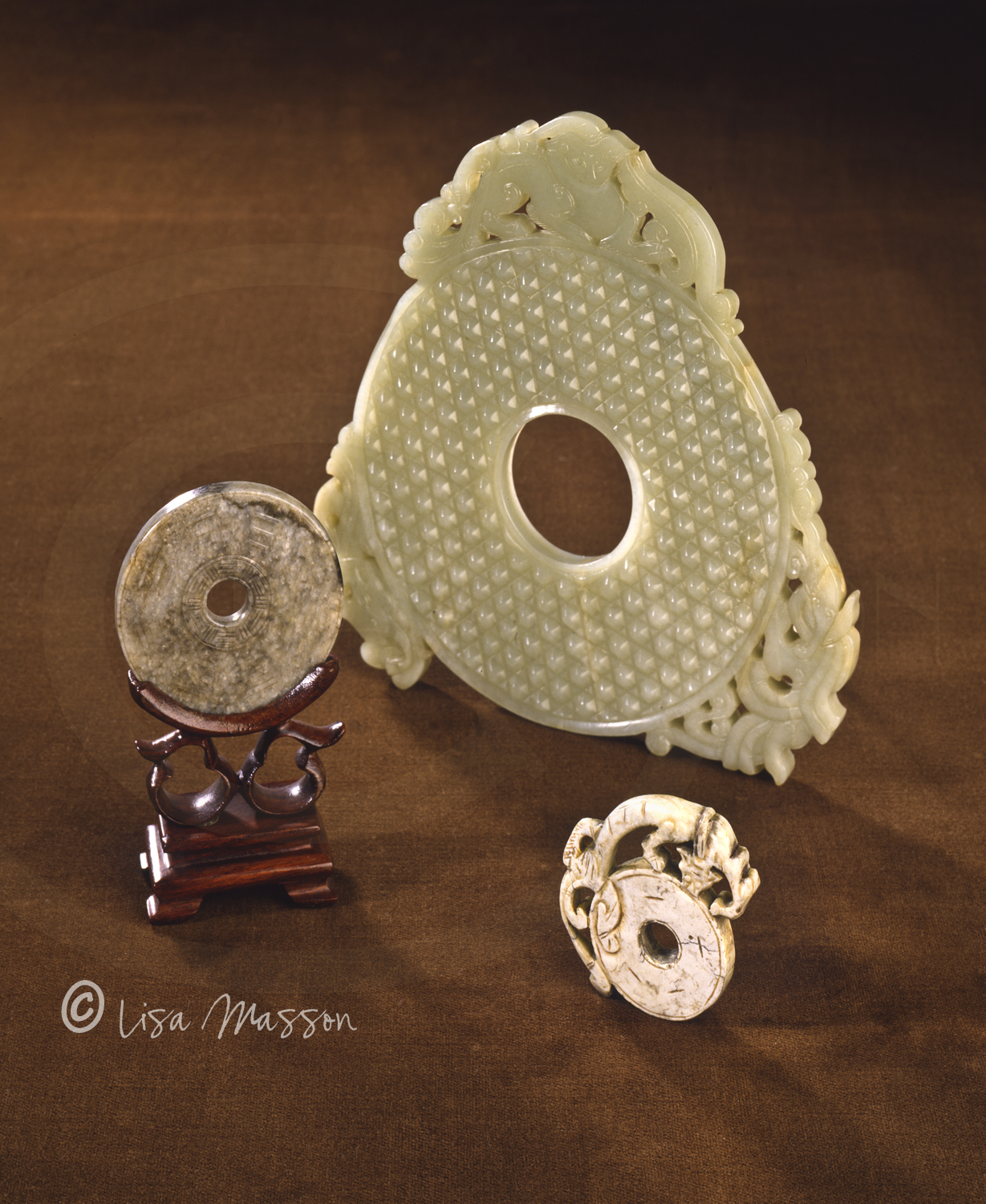
From the dawn of their civilization, emperors of China spoke to the heaven through the pi. The most scared of all Chinese religious symbols, the pi was comparable to the cross or crucifix of Christendom. A temple coin on the left is carved in the pi form and dates back to the Ming period (A.D.1368-1644), but the grey nephrite piece is a copy of a much earlier Han dynasty coin (206 B.C to A.D. 220). The center pi is covered with hexagonal pyramids and bizarre archaistic animals on the rim. The ancient pi amulet on the right was carved with a baby dragon called a chilong. This nephrite jade was exposed to fire, resulting in the particular shade termed “chicken-bone” white.
The Trapp Jade Collection, photographed for Southern Accents Magazine in Lexington, Kentucky. Text by Lucy Putnam Post
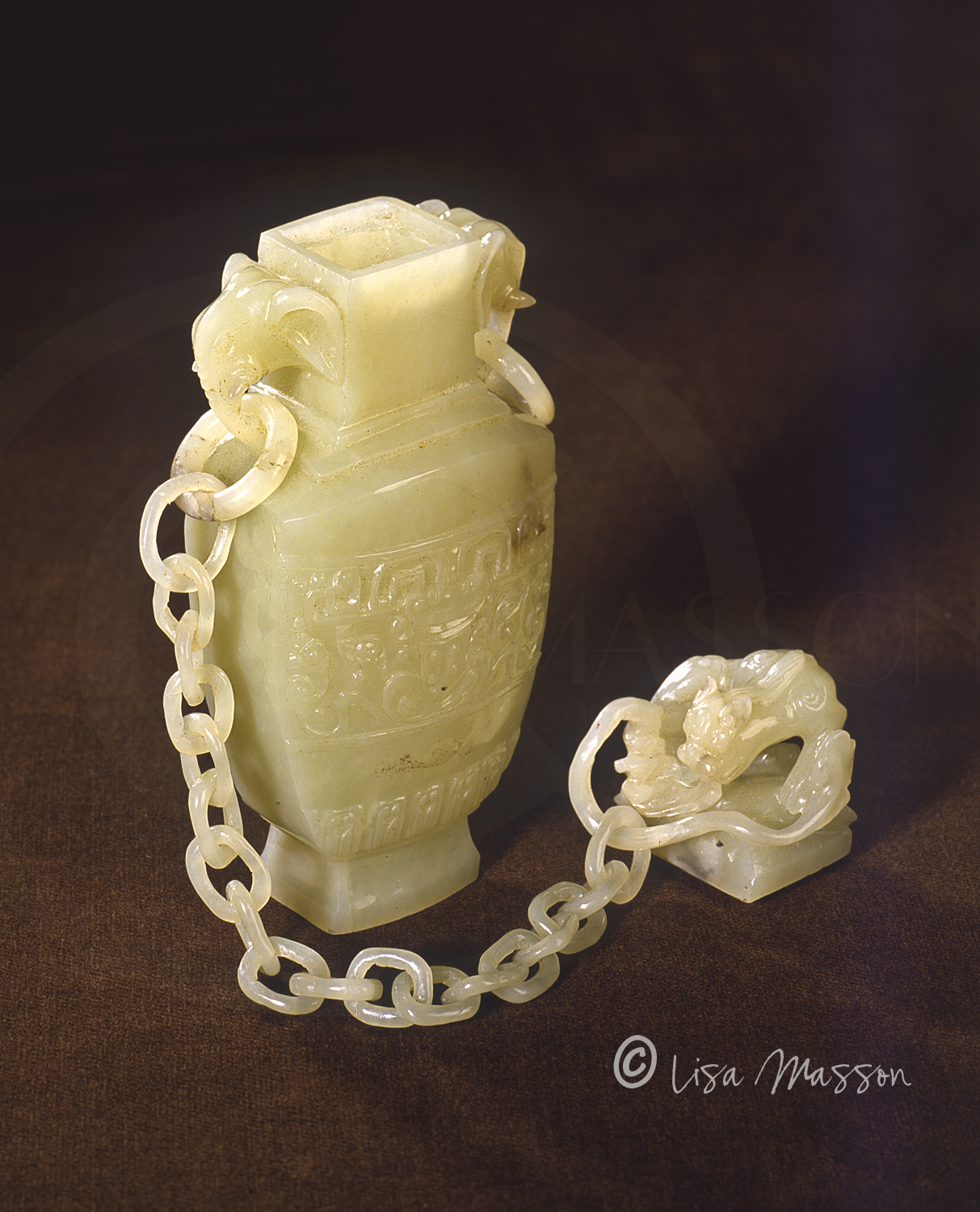
Carved form a single, undivided block of nephrite, this exquisite 20-century urn with its intricate cover and 18-link chain is a tribute to the rare skills of the artists and workmen involved.
The Trapp Jade Collection, photographed for Southern Accents Magazine in Lexington, Kentucky. Text by Lucy Putnam Post

The patience, dedication, and expertise vital to a superior jade collection is borne out in the group of early nephrite carvings always associated with the desk of the artist, calligrapher, or scholar.
A delicate nephrite fragment from the Han dynasty (2006 B.C to A.D. 220); an artist’s brush pot, carved in the early years of the nineteenth century, together with a celadon jadeite wrist rest and two jadeite hand scroll weights from the same era; a nephrite water dropper from the 1700s; a brush washer from the era of Emperor Qian Long (A.D. 1736-1795); a nephrite brush rest and ink stone from the eighteenth century are all part of this collection within this collection.
The Trapp Jade Collection, photographed for Southern Accents Magazine in Lexington, Kentucky. Text by Lucy Putnam Post
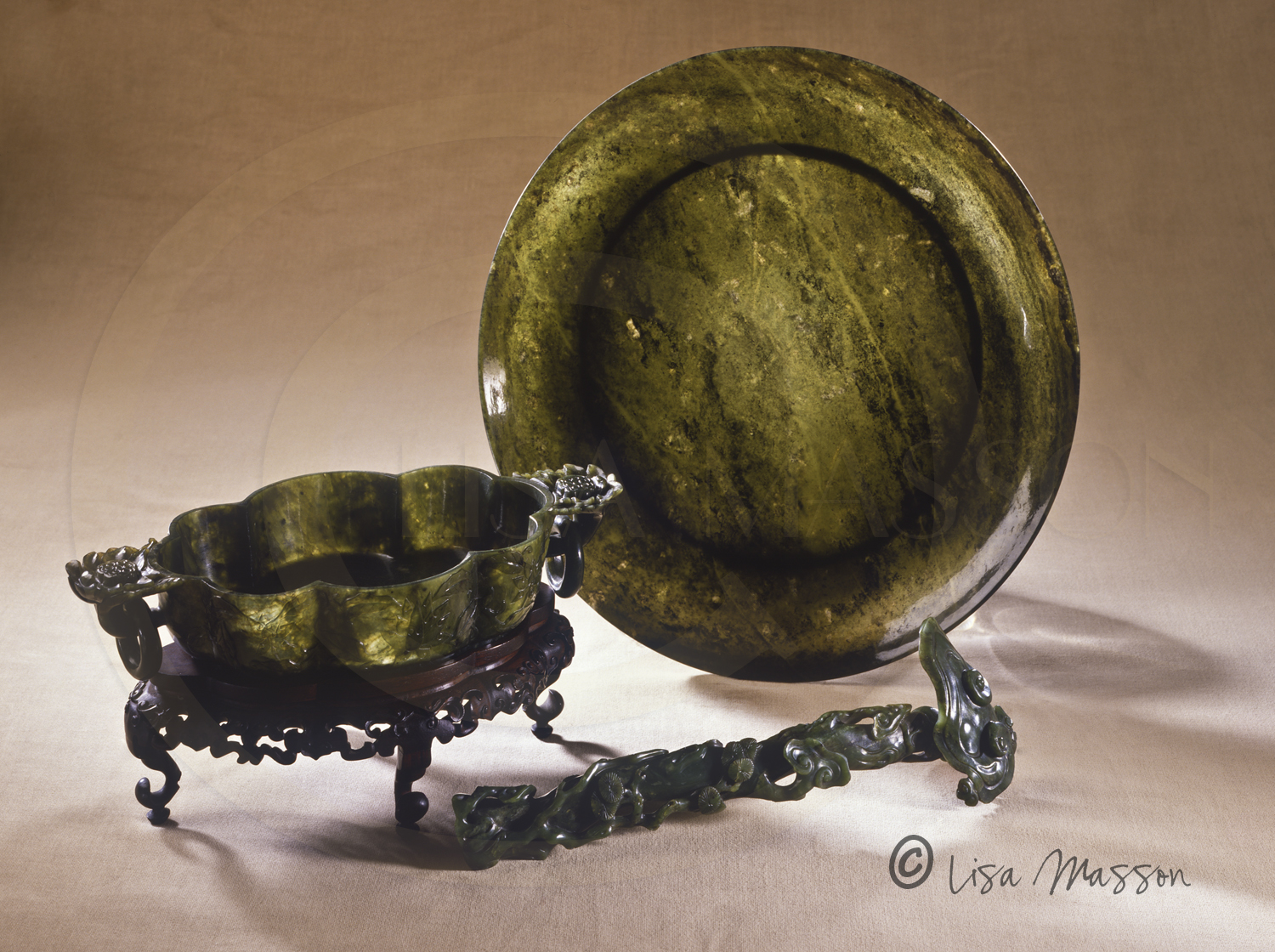
Three centuries- the 18th, 19th, and 20th- are spanned by this triad of spinach jade. The contemporary plate in the background is a superb example of this unusual jade color, so called because of the black flecks and translucent quality. The late 19th-century marriage bowl on the right was carved from one solid block of Siberian nephrite taken form the Lake Baikal region of the USSR. Dating back to the 1700s, the ruyi scepter in the foreground is an imperial emblem that was traditionally displayed before the emperors’s throne.
The Trapp Jade Collection, photographed for Southern Accents Magazine in Lexington, Kentucky. Text by Lucy Putnam Post
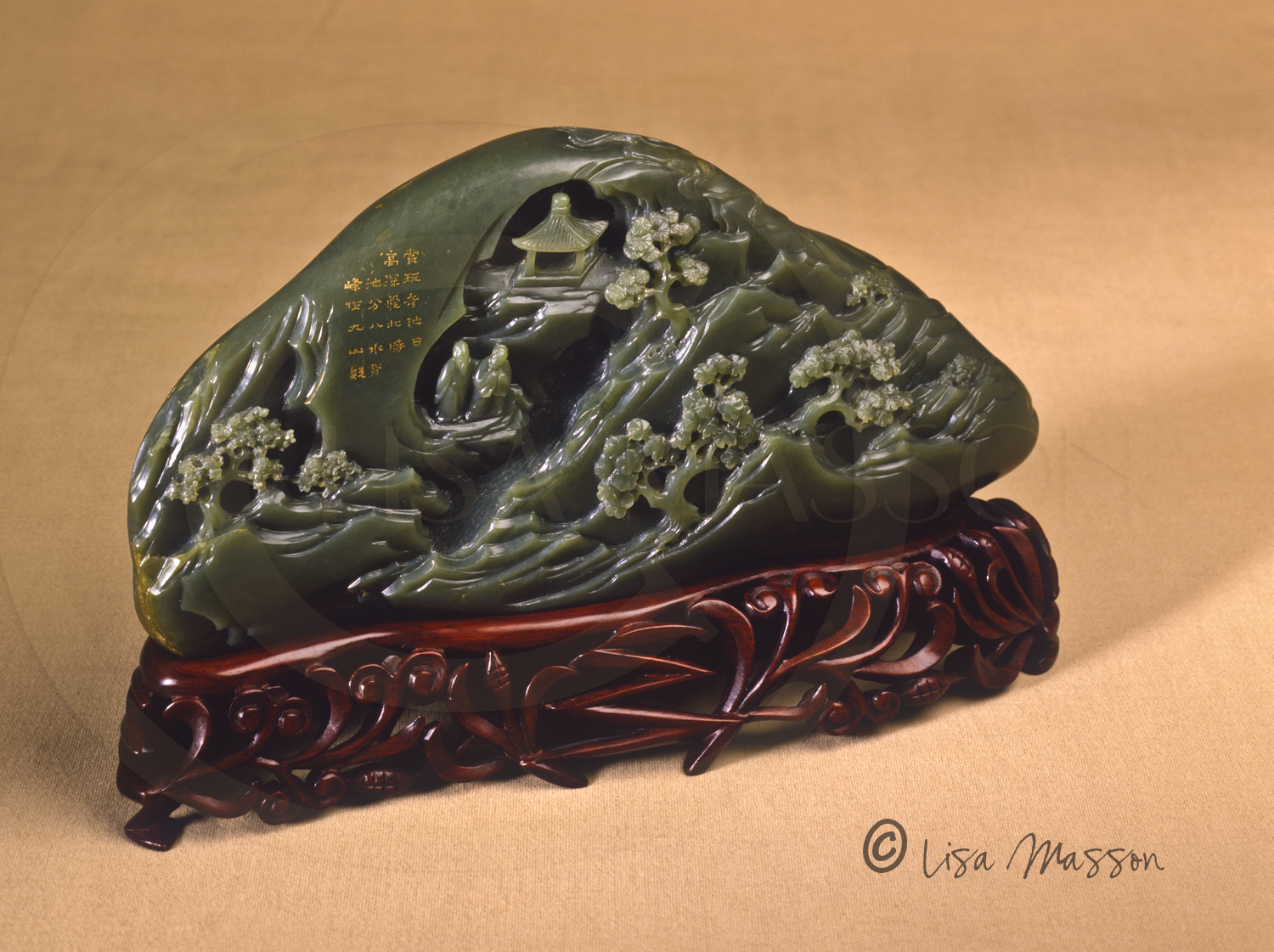
The raison d’e´tre for Jade Mountain was inspirational to the viewer, mediation for the artist, calligrapher, and scholar. Carved from a single chunk of jade in the 1700s, the intricate design portrays two sages on a rocky ledge overlooking a river gorge. Chinese emperors had a passion for poetry and often inscribed their verse in gold on the surface of a large jade piece. (Note the area above the two figures.
The Trapp Jade Collection, photographed for Southern Accents Magazine in Lexington, Kentucky. Text by Lucy Putnam Post

The Trapp Jade Collection, photographed for Southern Accents Magazine in Lexington, Kentucky.

The Trapp Jade Collection, photographed for Southern Accents Magazine in Lexington, Kentucky.
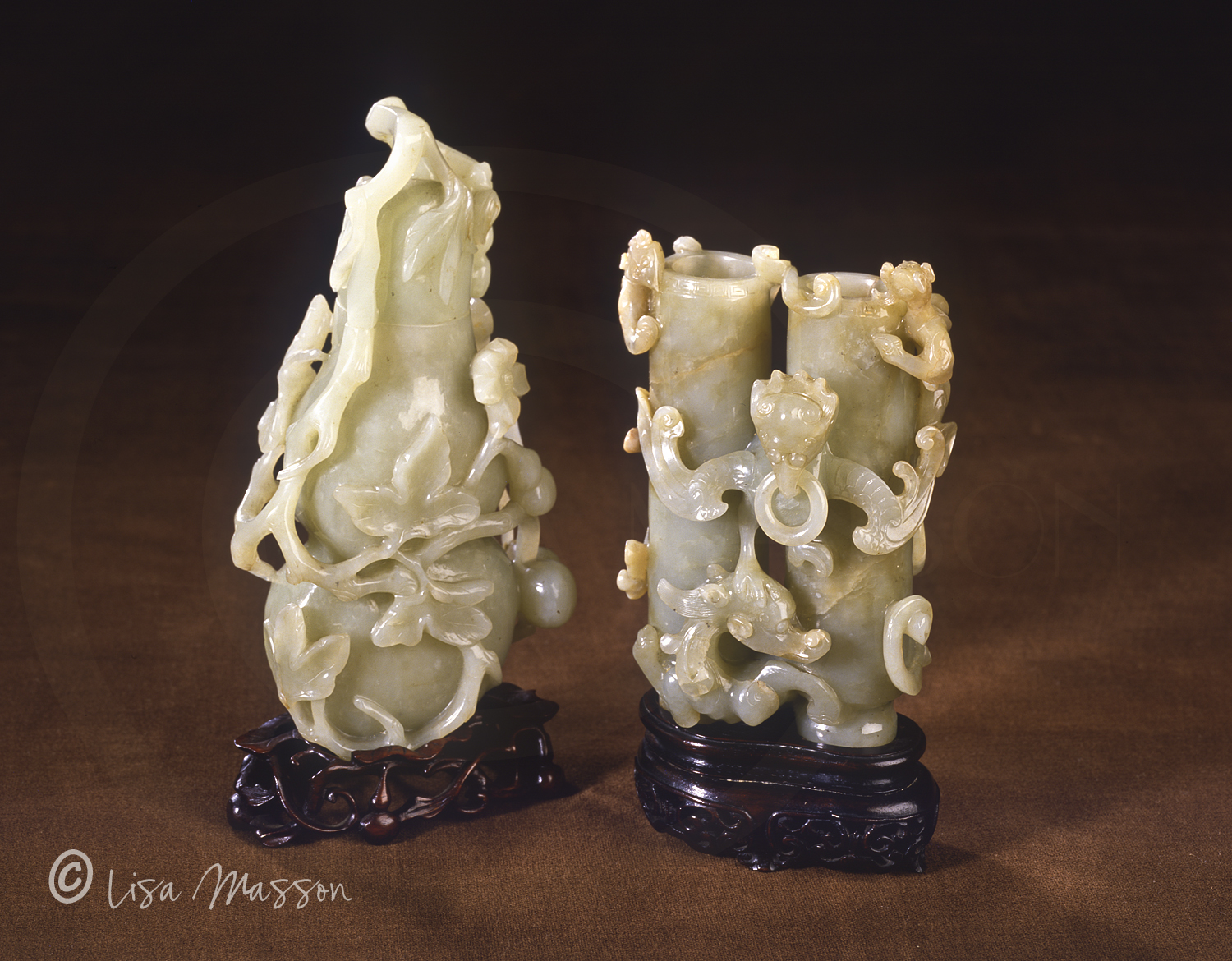
The Trapp Jade Collection, photographed for Southern Accents Magazine in Lexington, Kentucky.
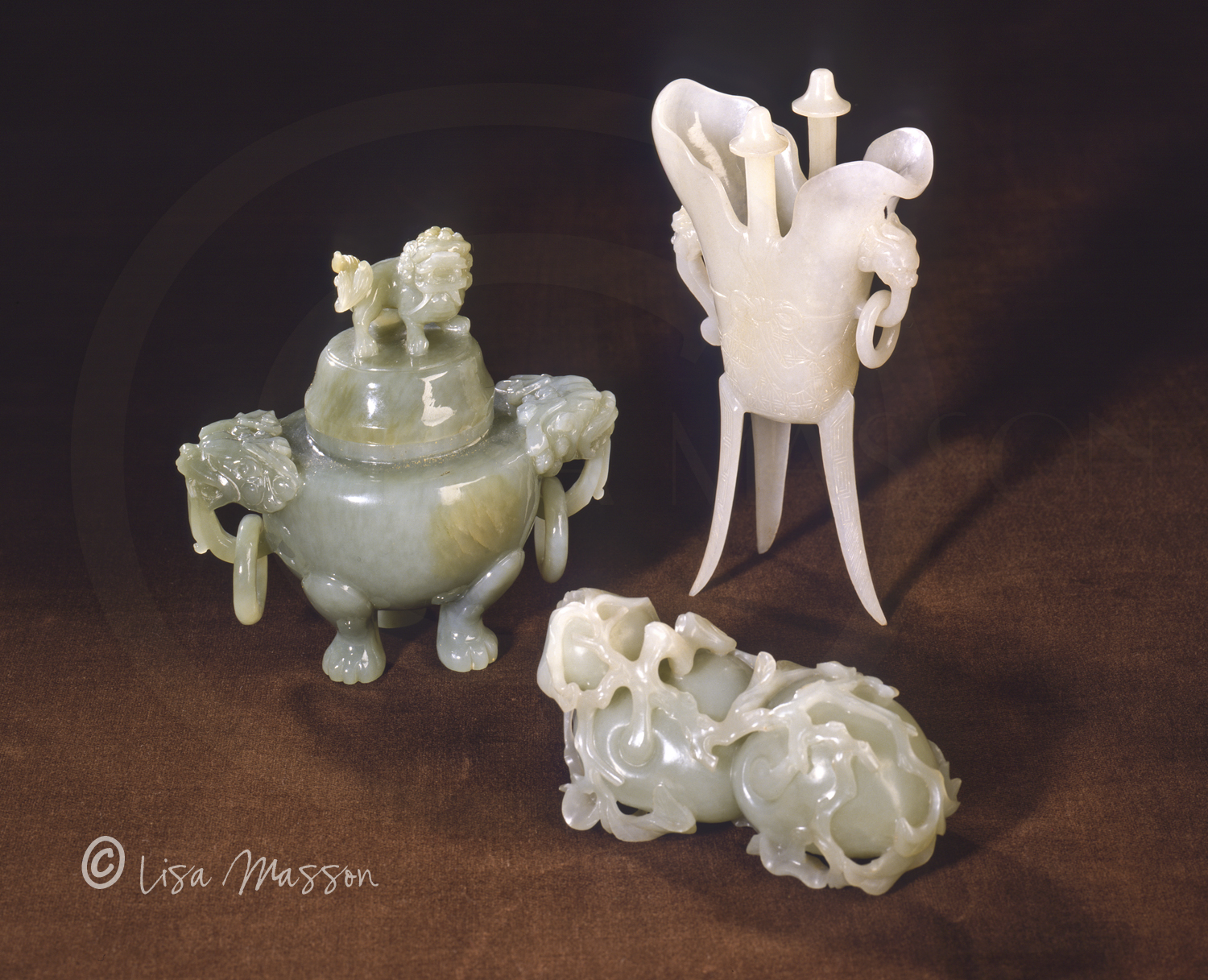
The Trapp Jade Collection, photographed for Southern Accents Magazine in Lexington, Kentucky.
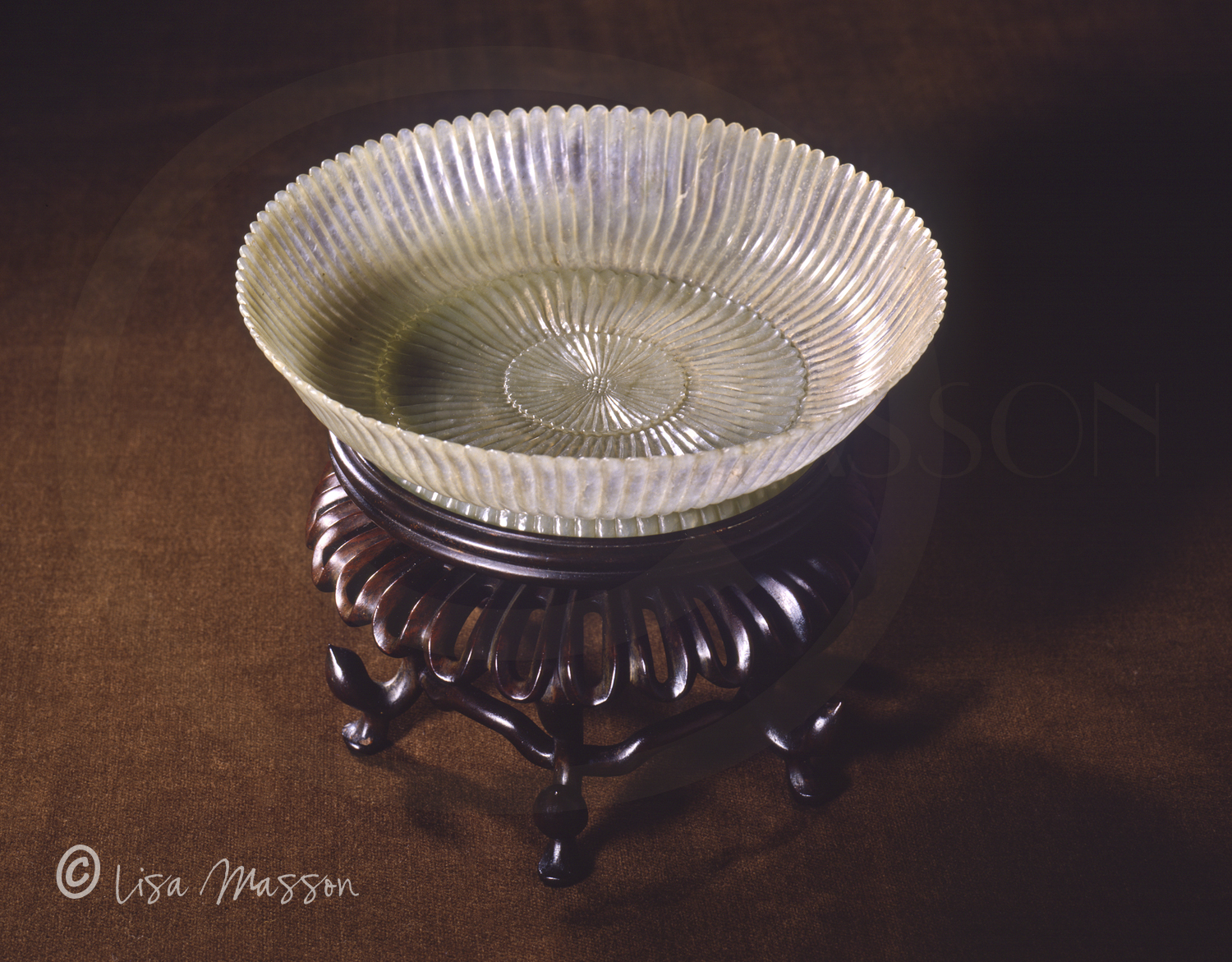
The Trapp Jade Collection, photographed for Southern Accents Magazine in Lexington, Kentucky.
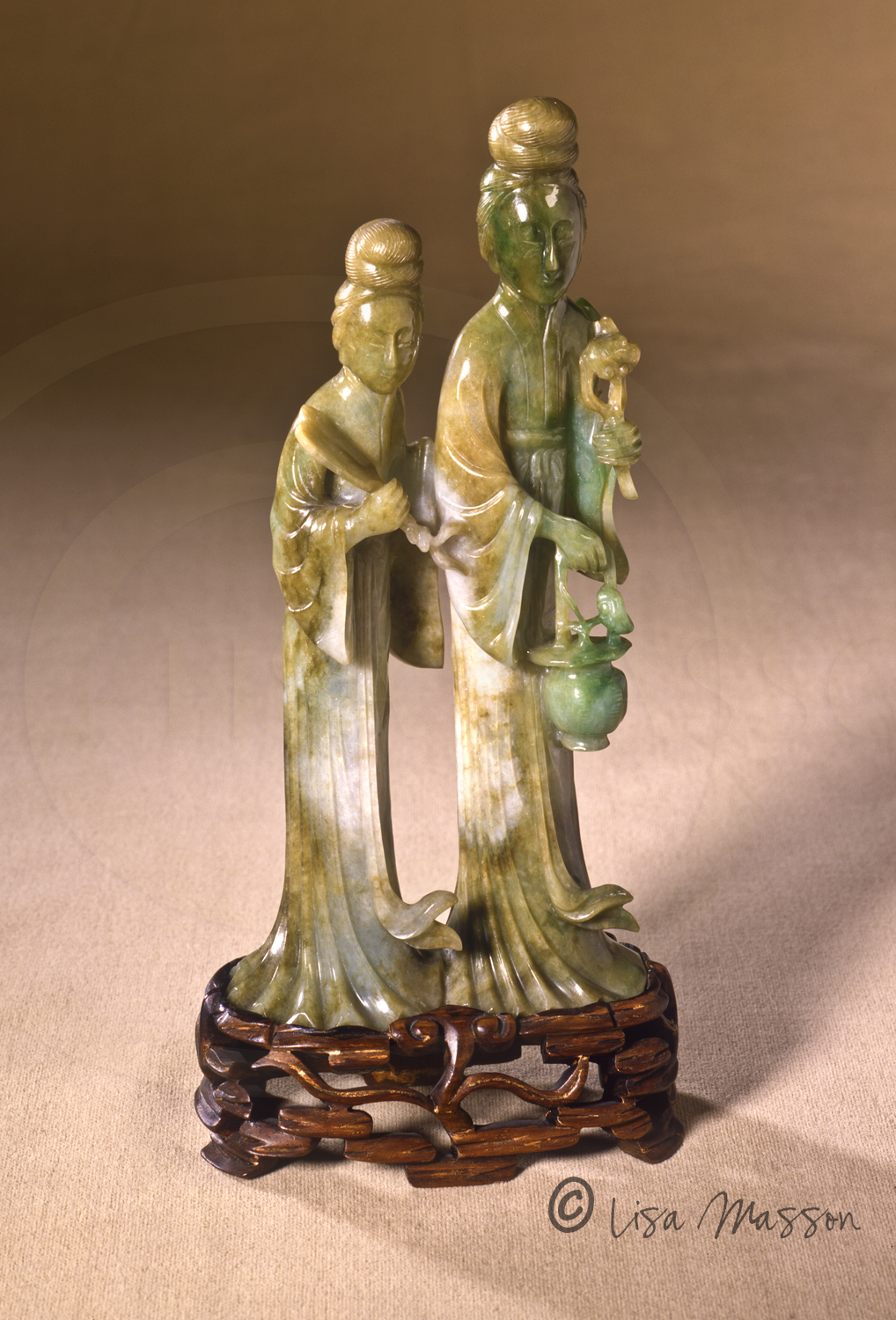
The Trapp Jade Collection, photographed for Southern Accents Magazine in Lexington, Kentucky.
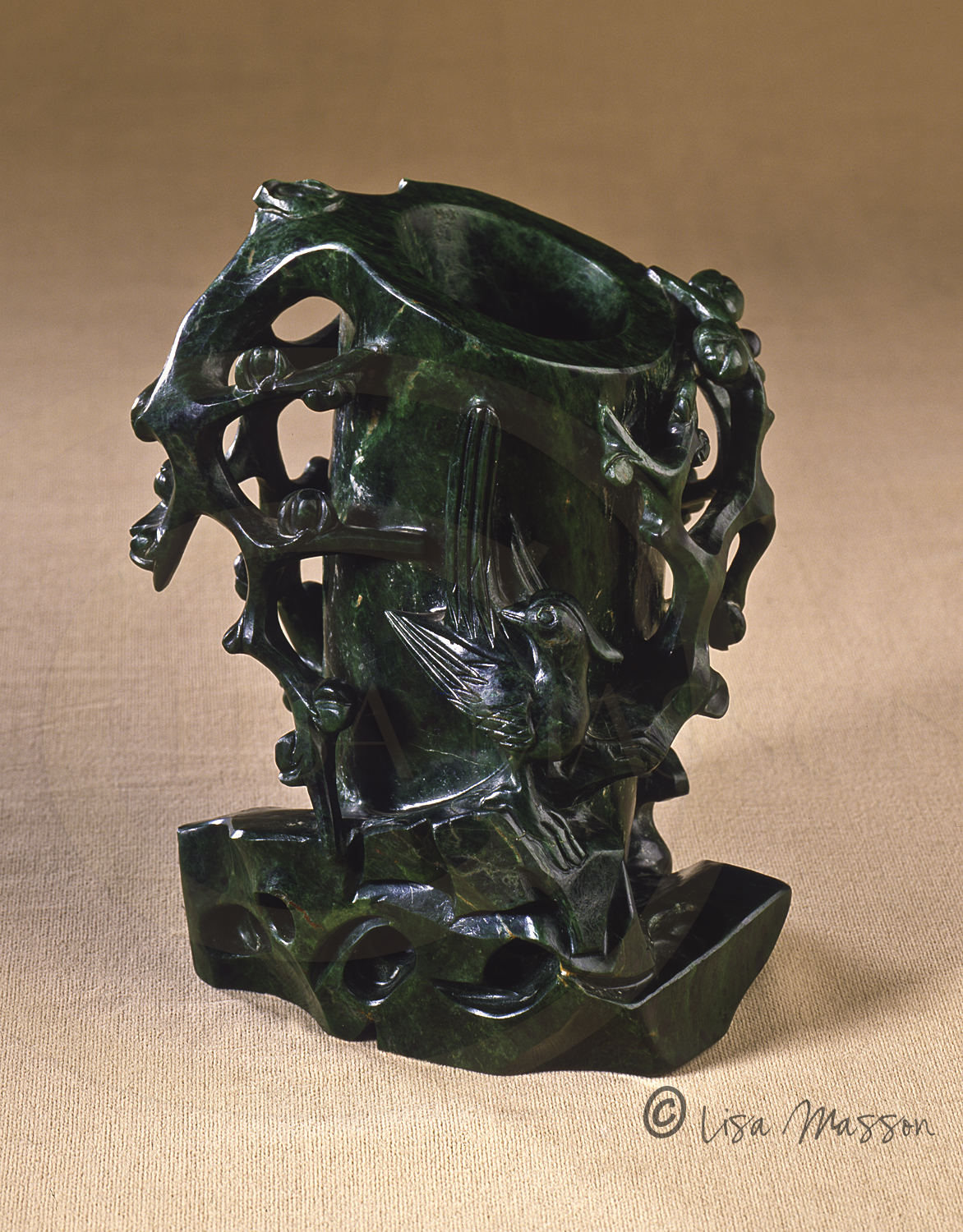
The Trapp Jade Collection, photographed for Southern Accents Magazine in Lexington, Kentucky.
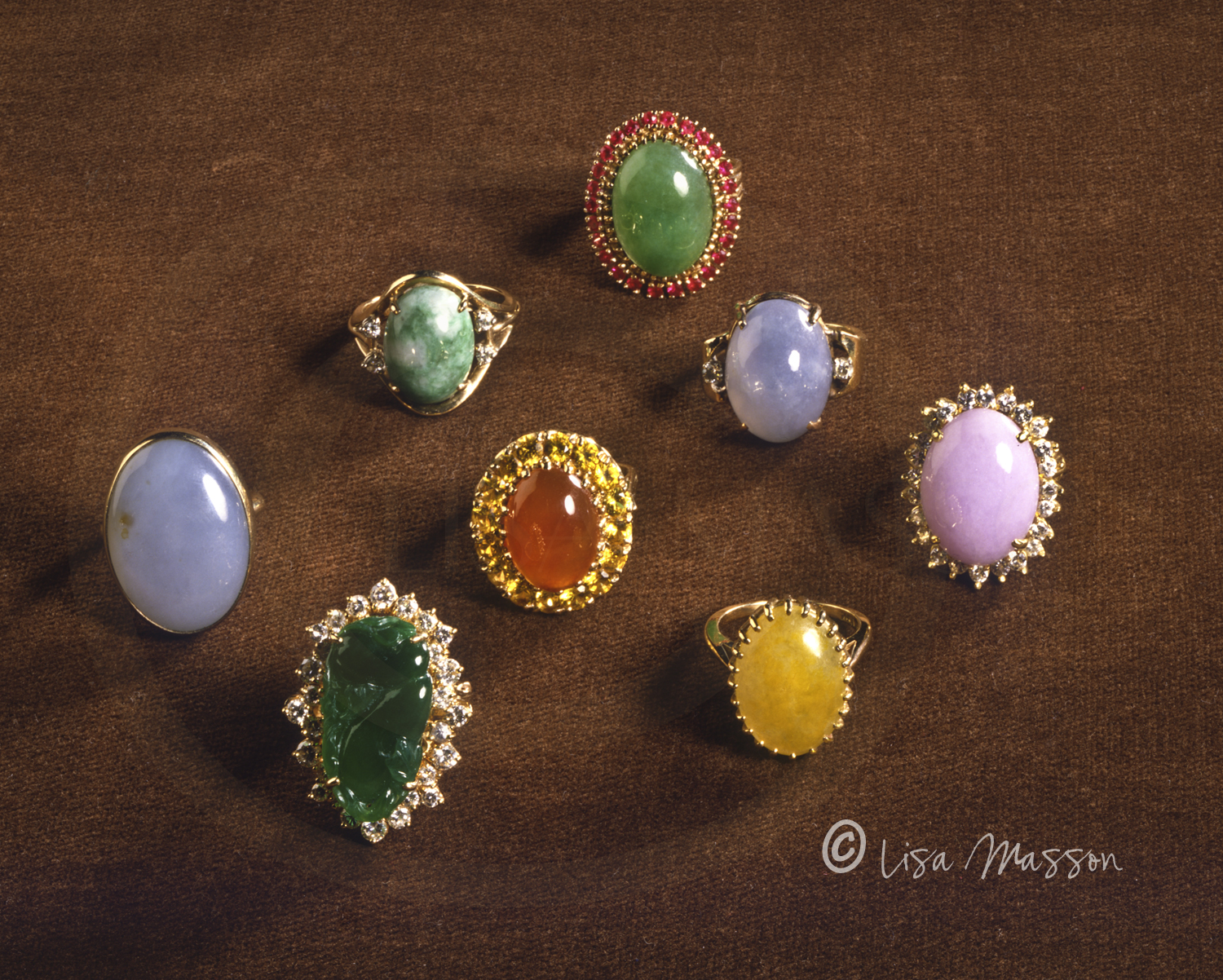
The Trapp Jade Collection, photographed for Southern Accents Magazine in Lexington, Kentucky.
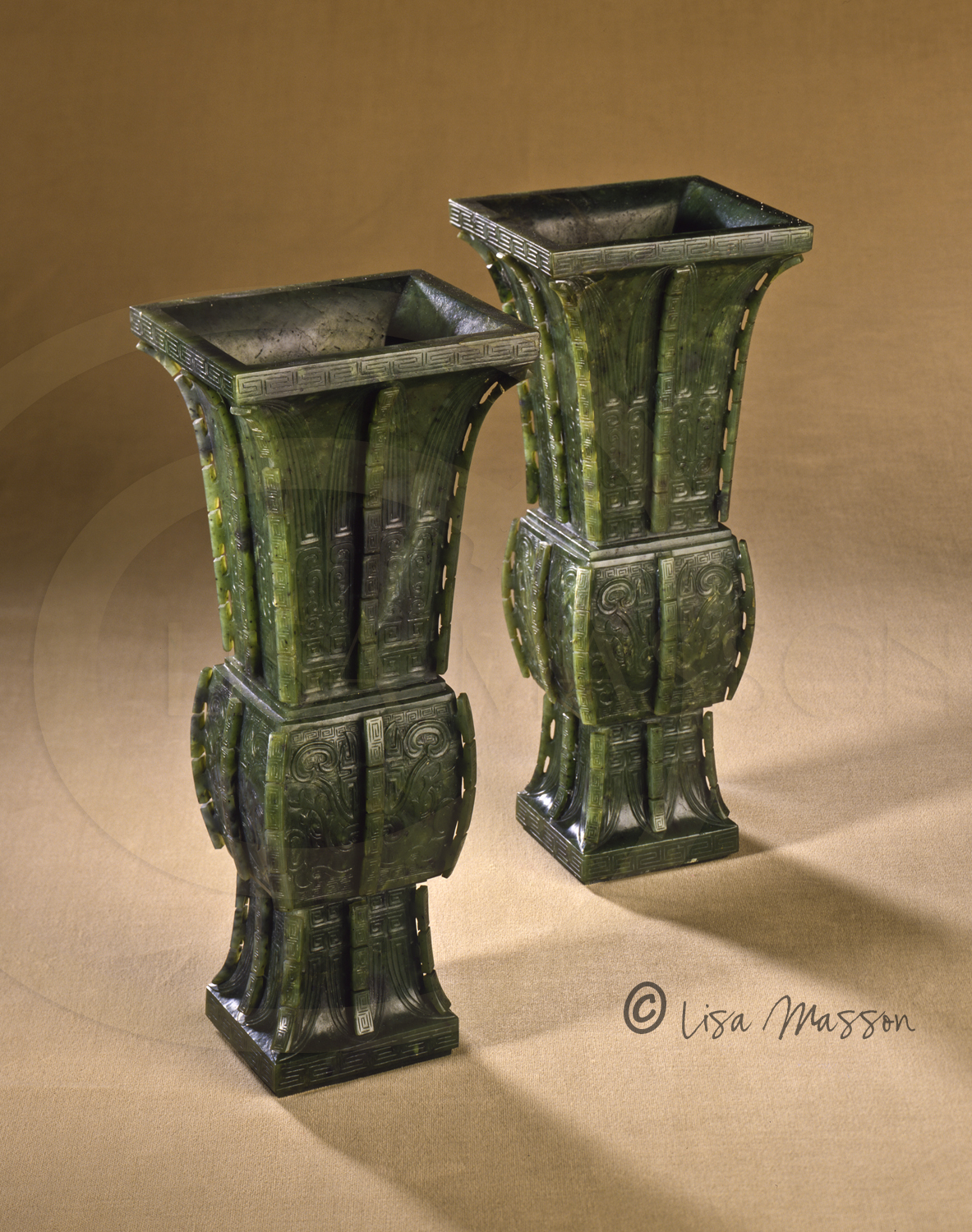
The Trapp Jade Collection, photographed for Southern Accents Magazine in Lexington, Kentucky.
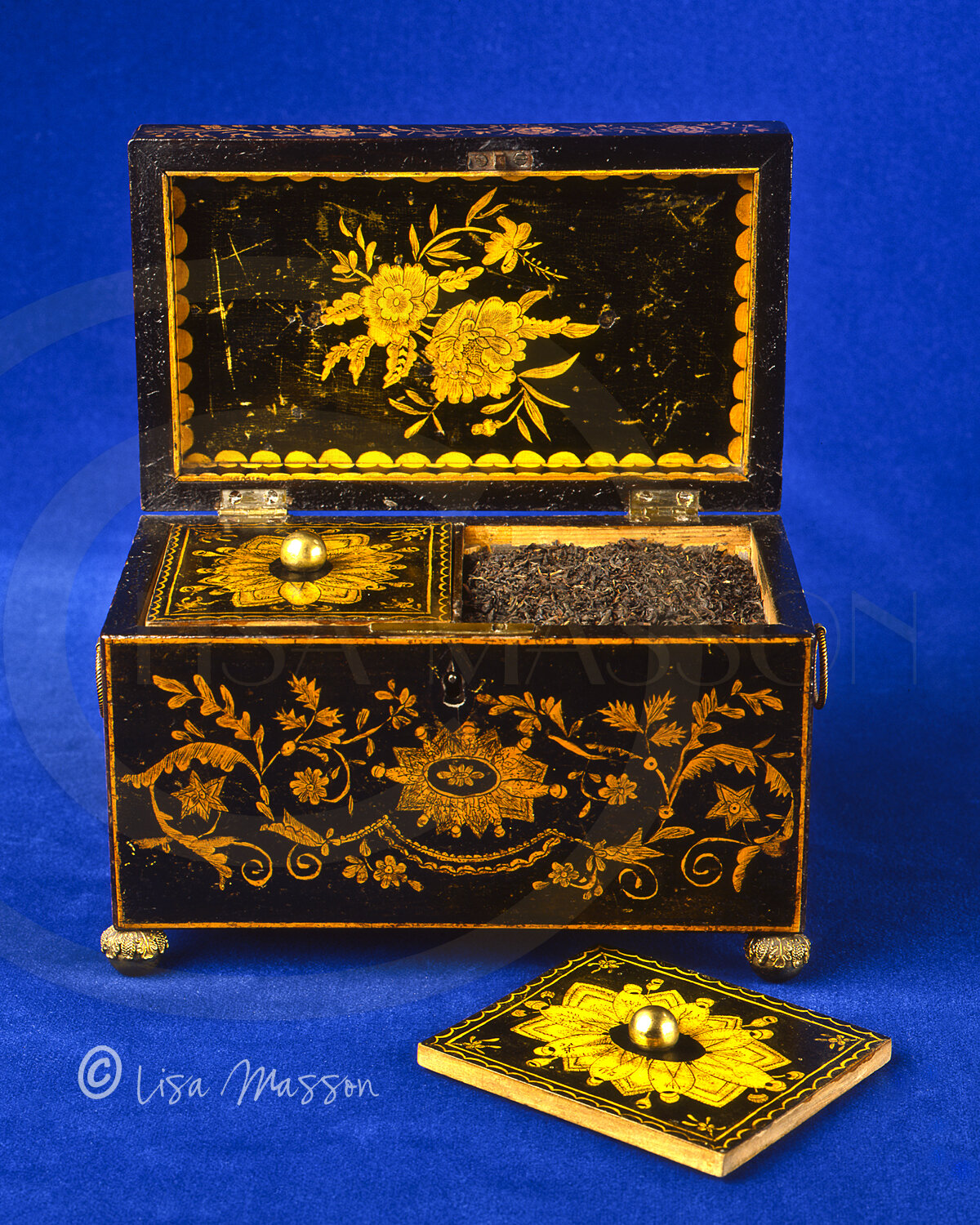
India ink was used to darken the light-colored wood around the floral designs of this English caddy, 1810.
The Cockrell Tea Caddy collection, photographed for Southern Accents Magazine. Text by Palmer Graham
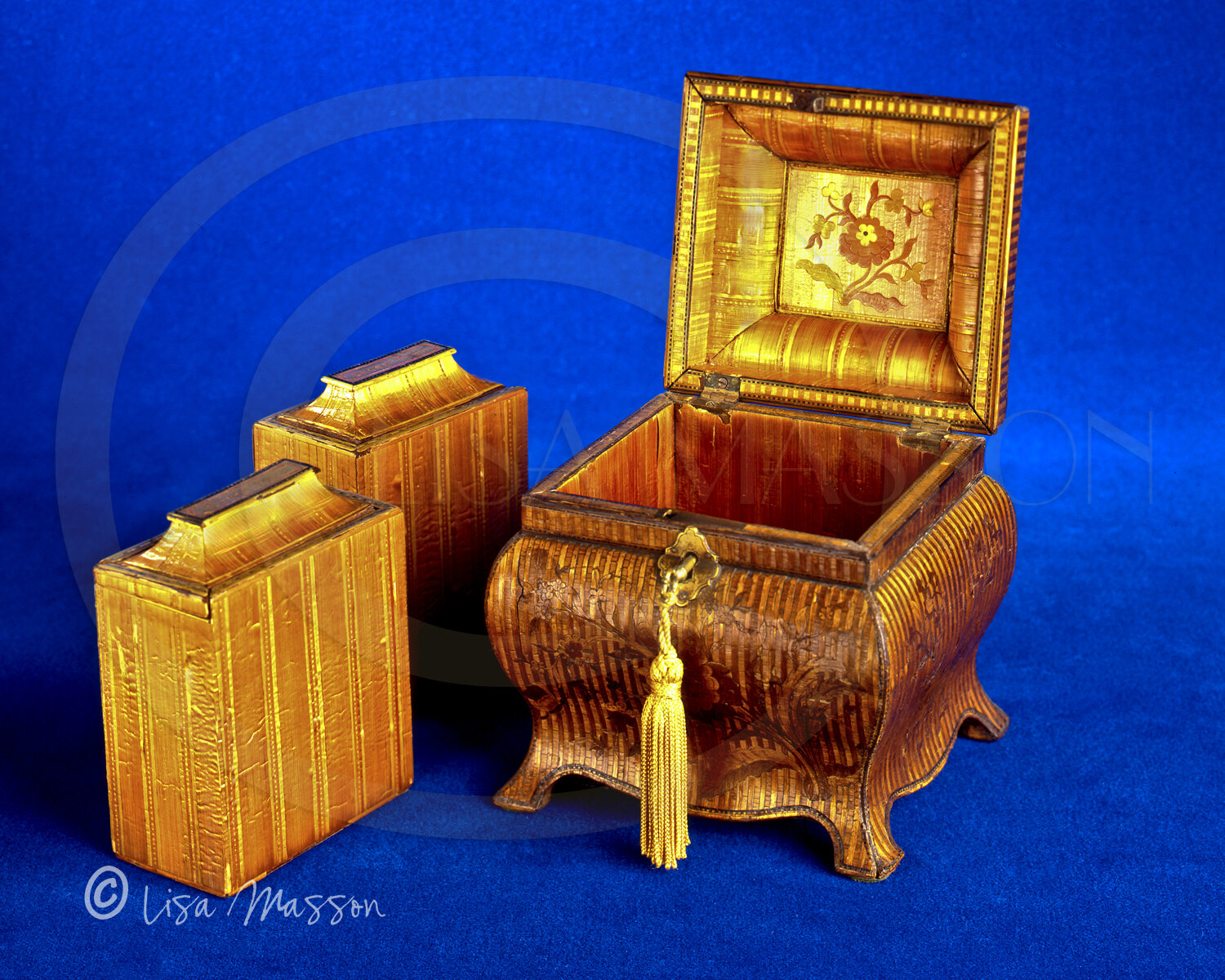
Covered with split and colored straw, this wooden bombe´ English chest, circa 1800, holds two tea boxes. Many such chests and caddies were made in England during the Napoleonic War by French prisoners, who were paid for their upkeep by selling their products in local markets.
The Cockrell Tea Caddy collection, photographed for Southern Accents Magazine. Text by Palmer Graham
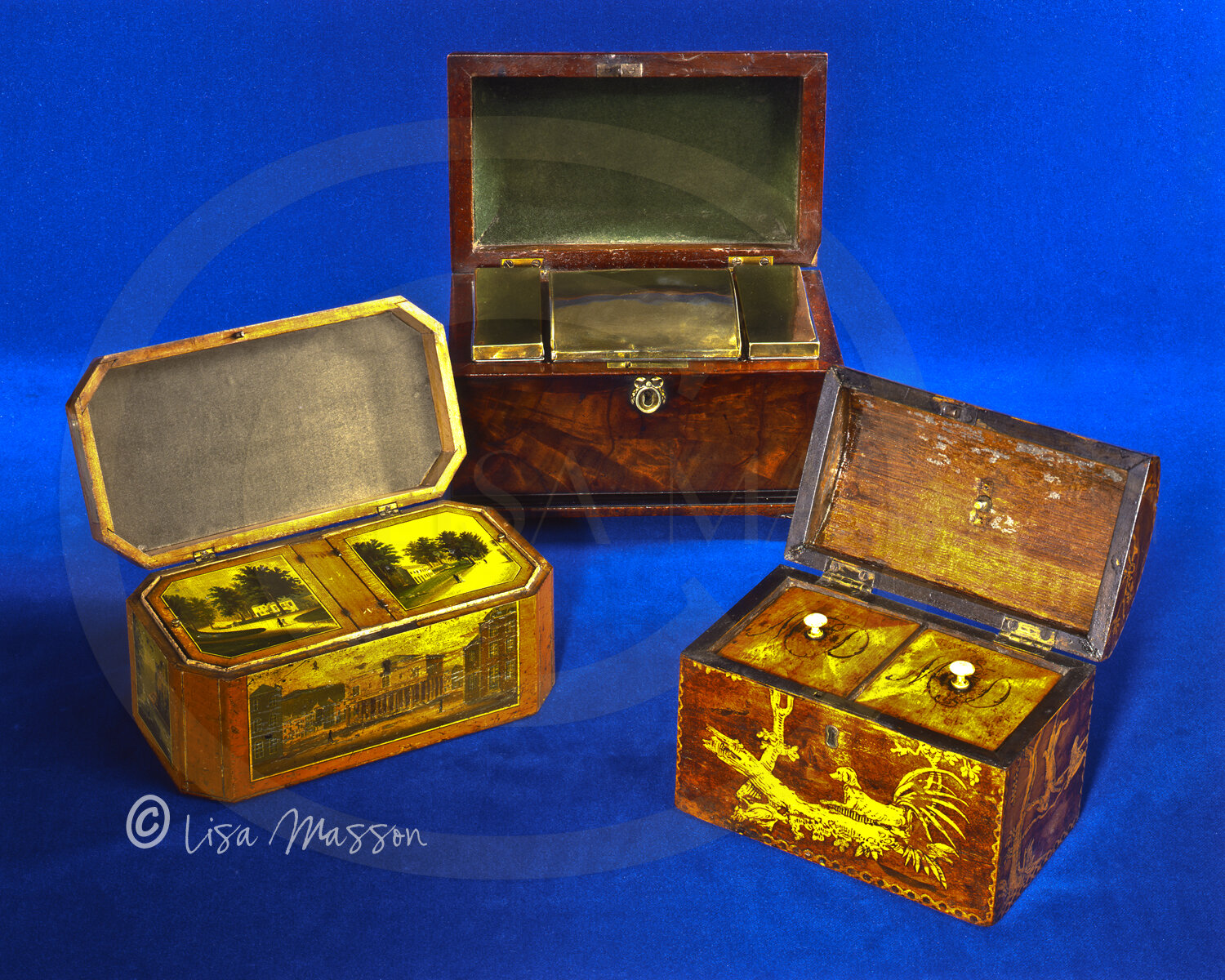
At center an English chest, circa 1770, contains removable canisters and sugar box. The flanking caddies have separate compartments for different teas but no removable containers. At left, the French caddy, circa 1820, features hand-painted scenes on maple, at right, the English caddy, 1830, was decorated by a wax-resist method.
The Cockrell Tea Caddy collection, photographed for Southern Accents Magazine. Text by Palmer Graham
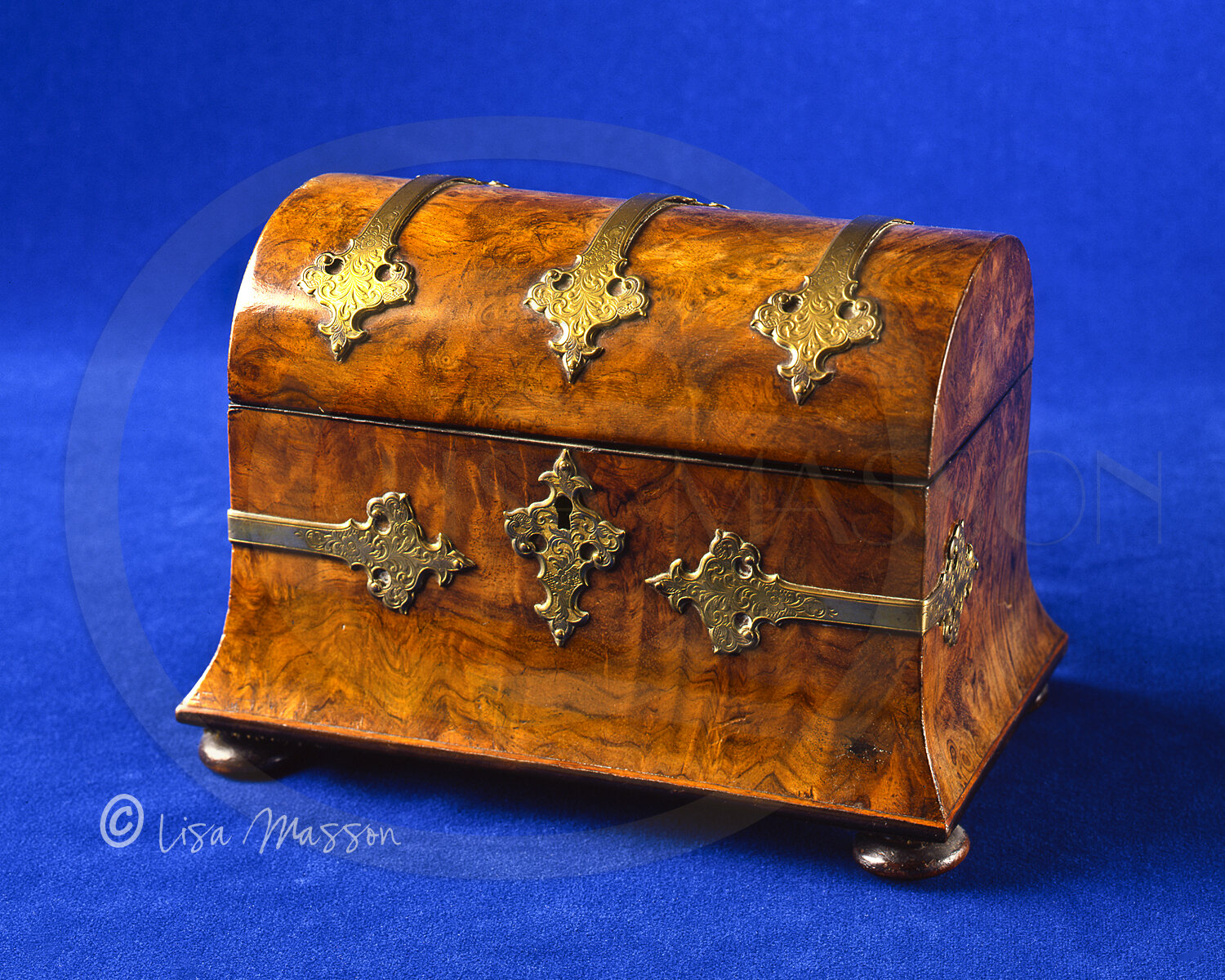
Engraved brass embellished a trunk-shaped burled walnut English caddy, circa 1860.
The Cockrell Tea Caddy collection, photographed for Southern Accents Magazine. Text by Palmer Graham
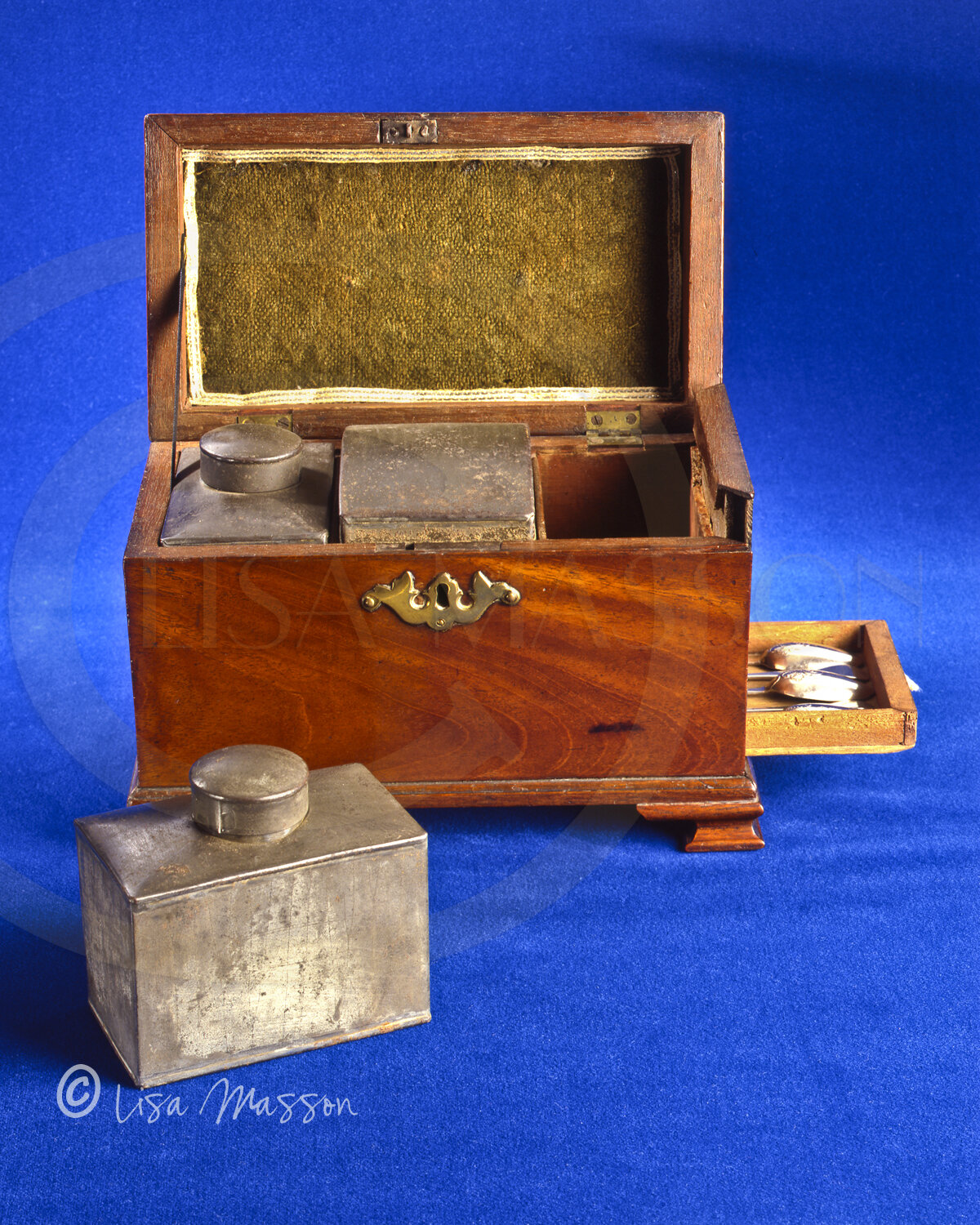
Three tin canisters - two for tea and one for sugar- fit into an English mahogany chest, circa 1750. A secret drawer can be opened by removing a canister and lifting the side panel, The six spoons were made in London by John Lautier in 1776.
The Cockrell Tea Caddy collection, photographed for Southern Accents Magazine. Text by Palmer Graham
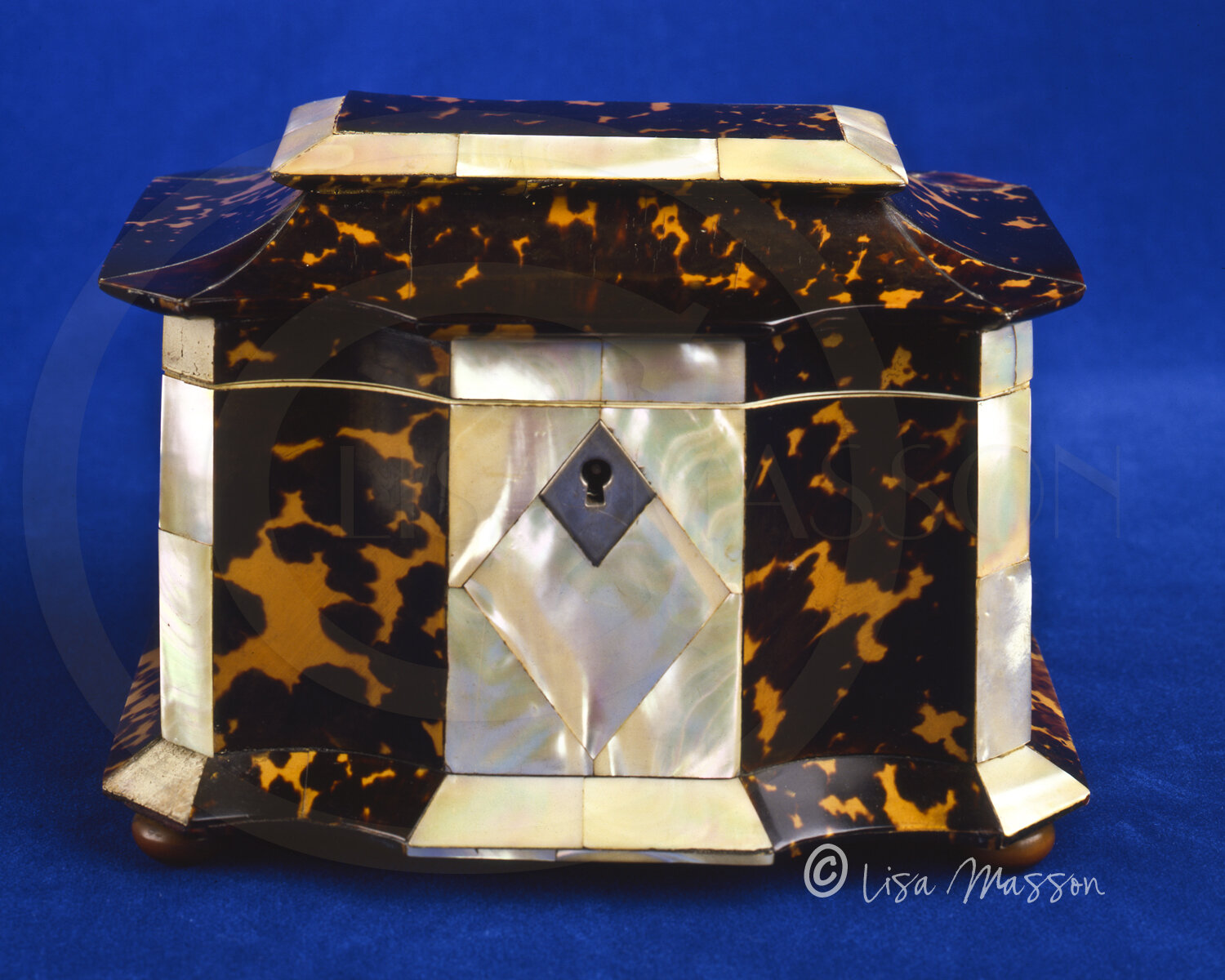
A pagoda-shaped English caddy of ivory, mother-of-pearl, and tortoiseshell, circa 1830, suggests the Eastern origins of tea and its containers.
The Cockrell Tea Caddy collection, photographed for Southern Accents Magazine. Text by Palmer Graham
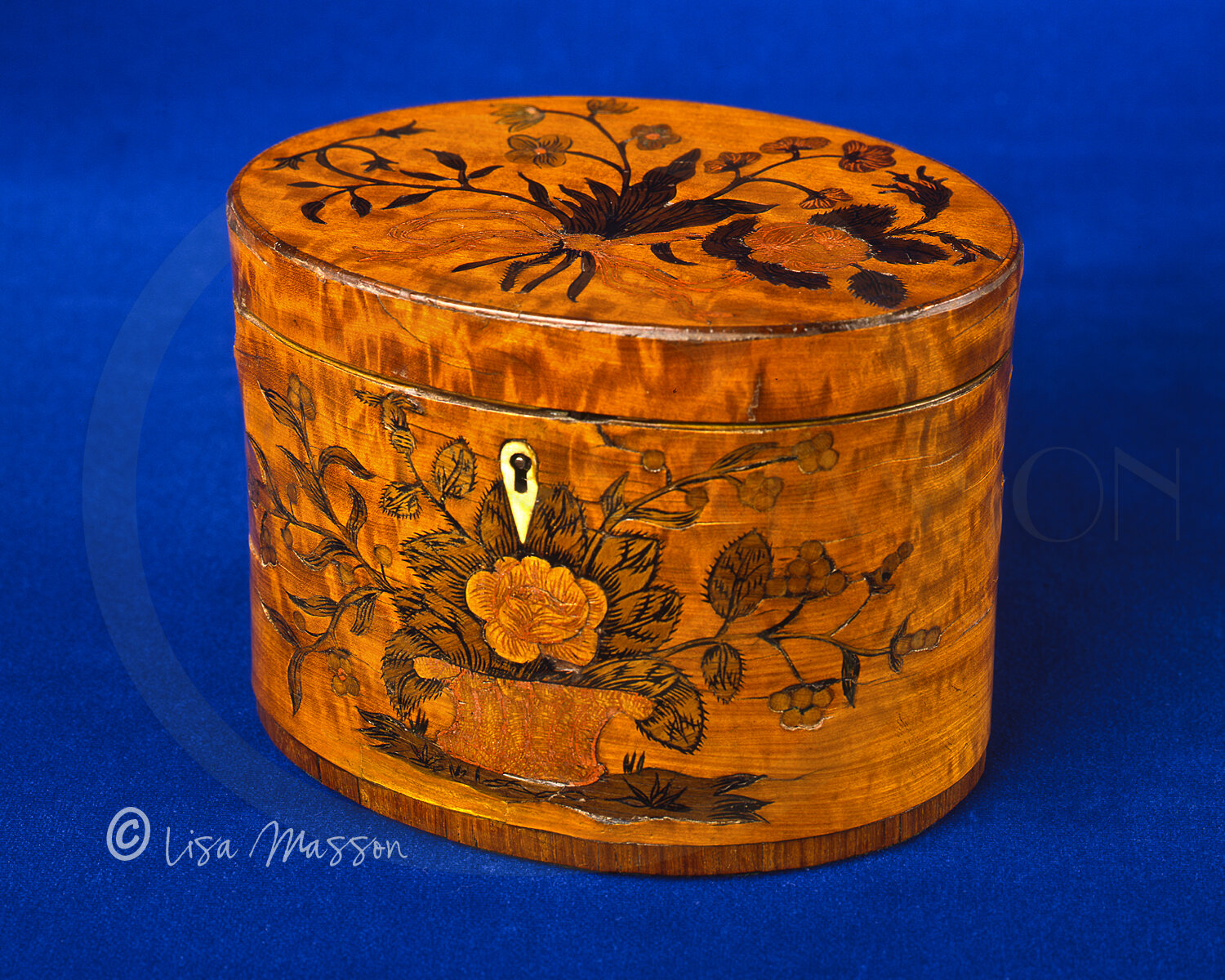
A combination of inlay and etching decorates an oval satinwood caddy, made in England circa 1810.
The Cockrell Tea Caddy collection, photographed for Southern Accents Magazine. Text by Palmer Graham
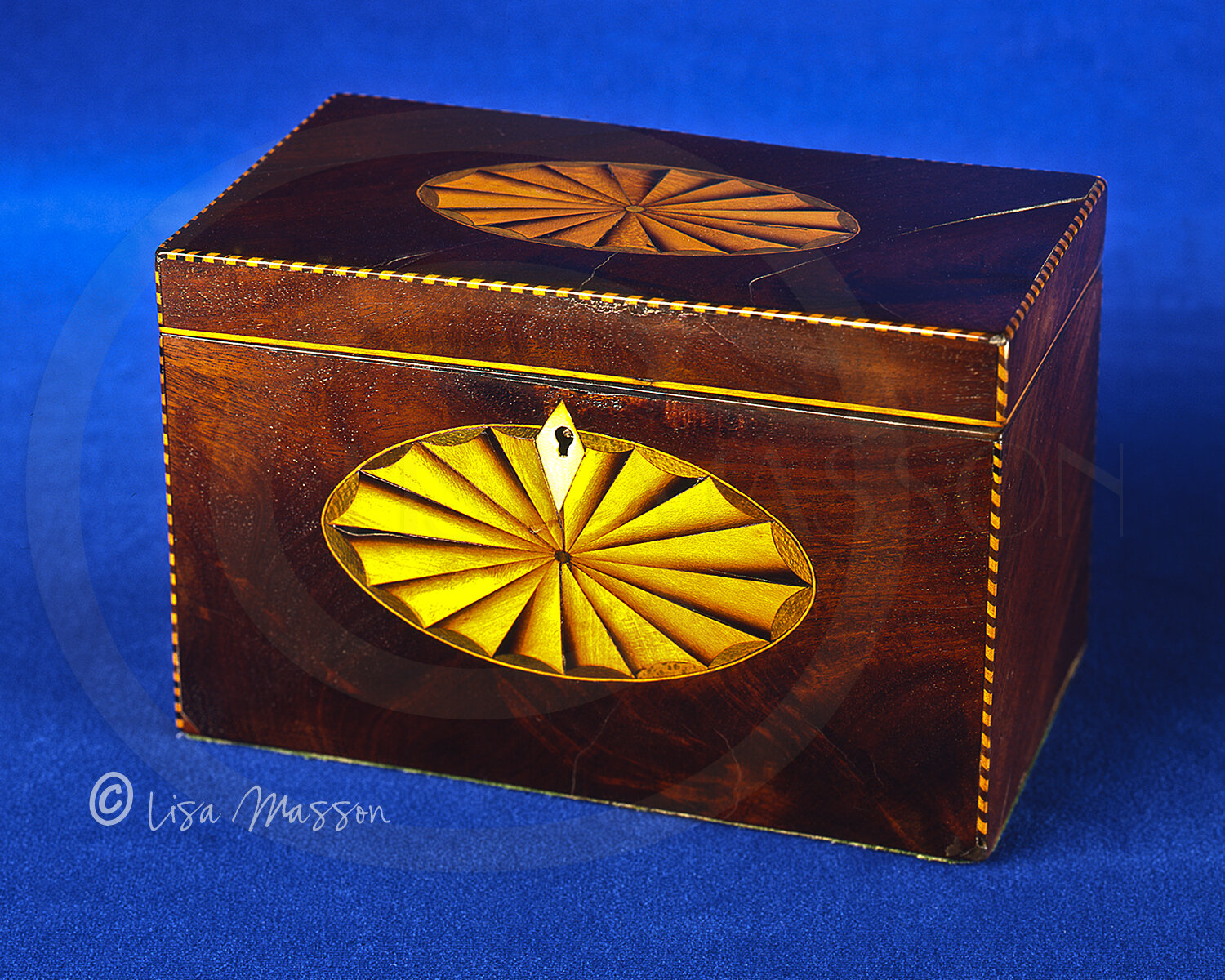
The Cockrell Tea Caddy collection, photographed for Southern Accents Magazine.
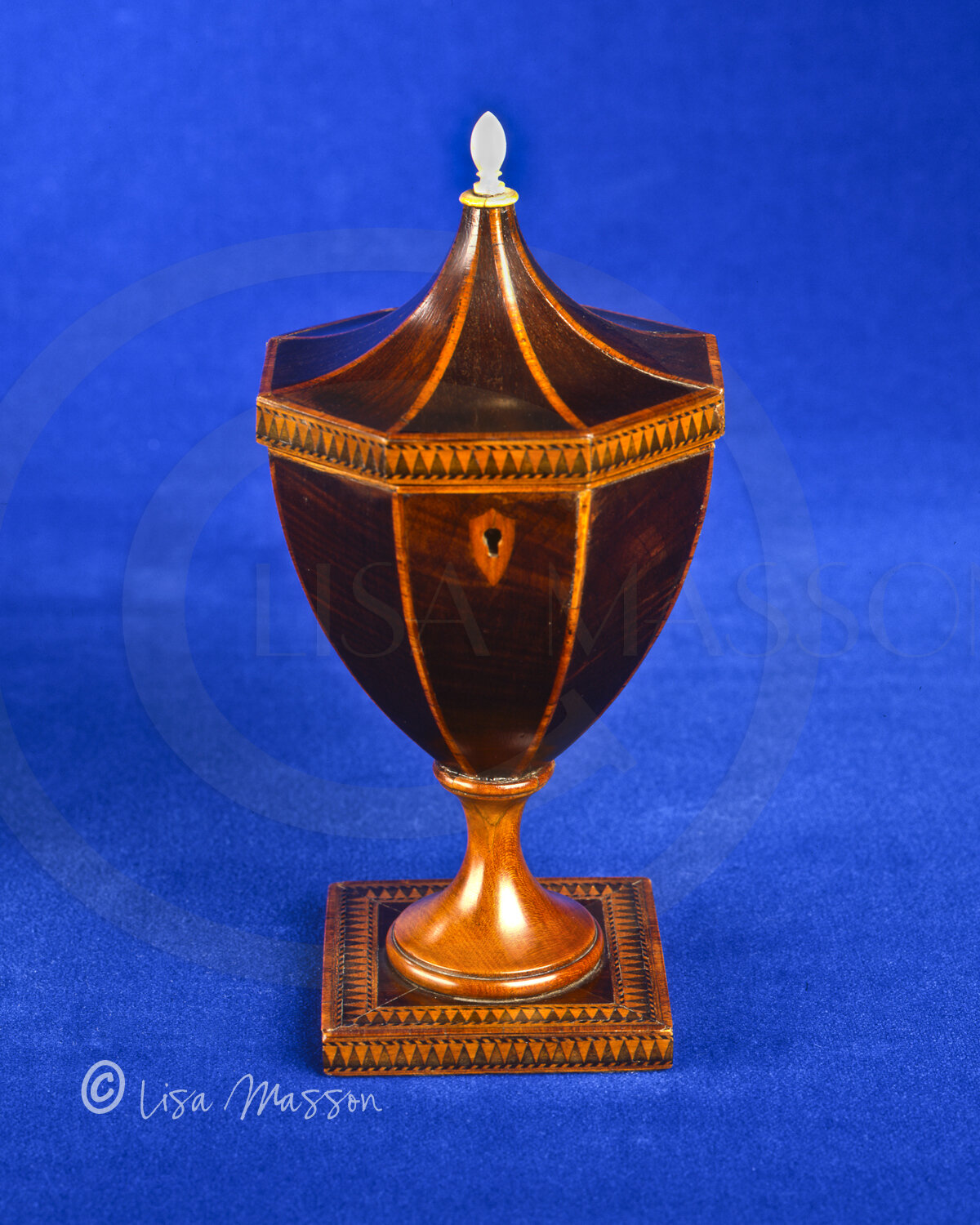
The Cockrell Tea Caddy collection, photographed for Southern Accents Magazine.
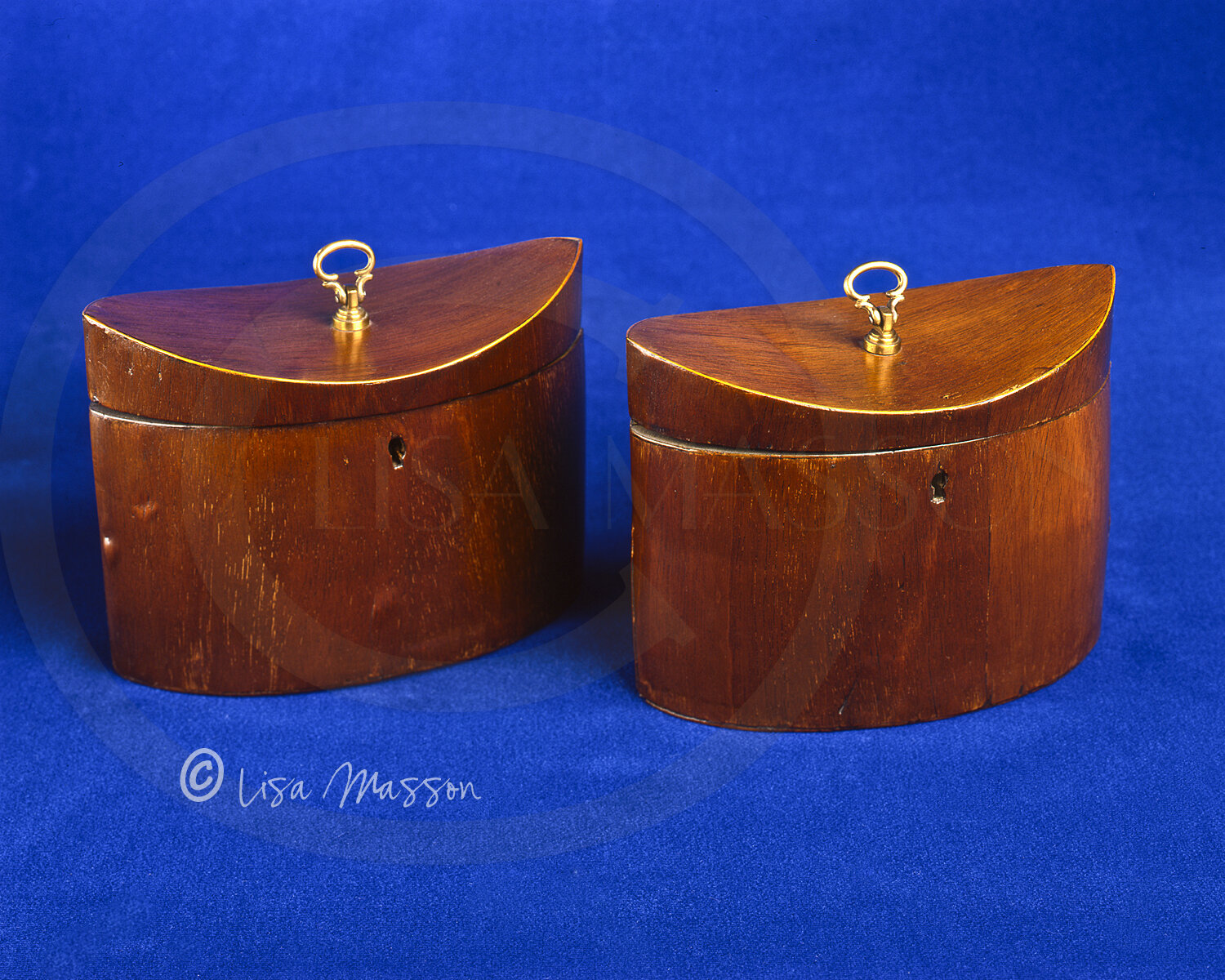
The Cockrell Tea Caddy collection, photographed for Southern Accents Magazine.
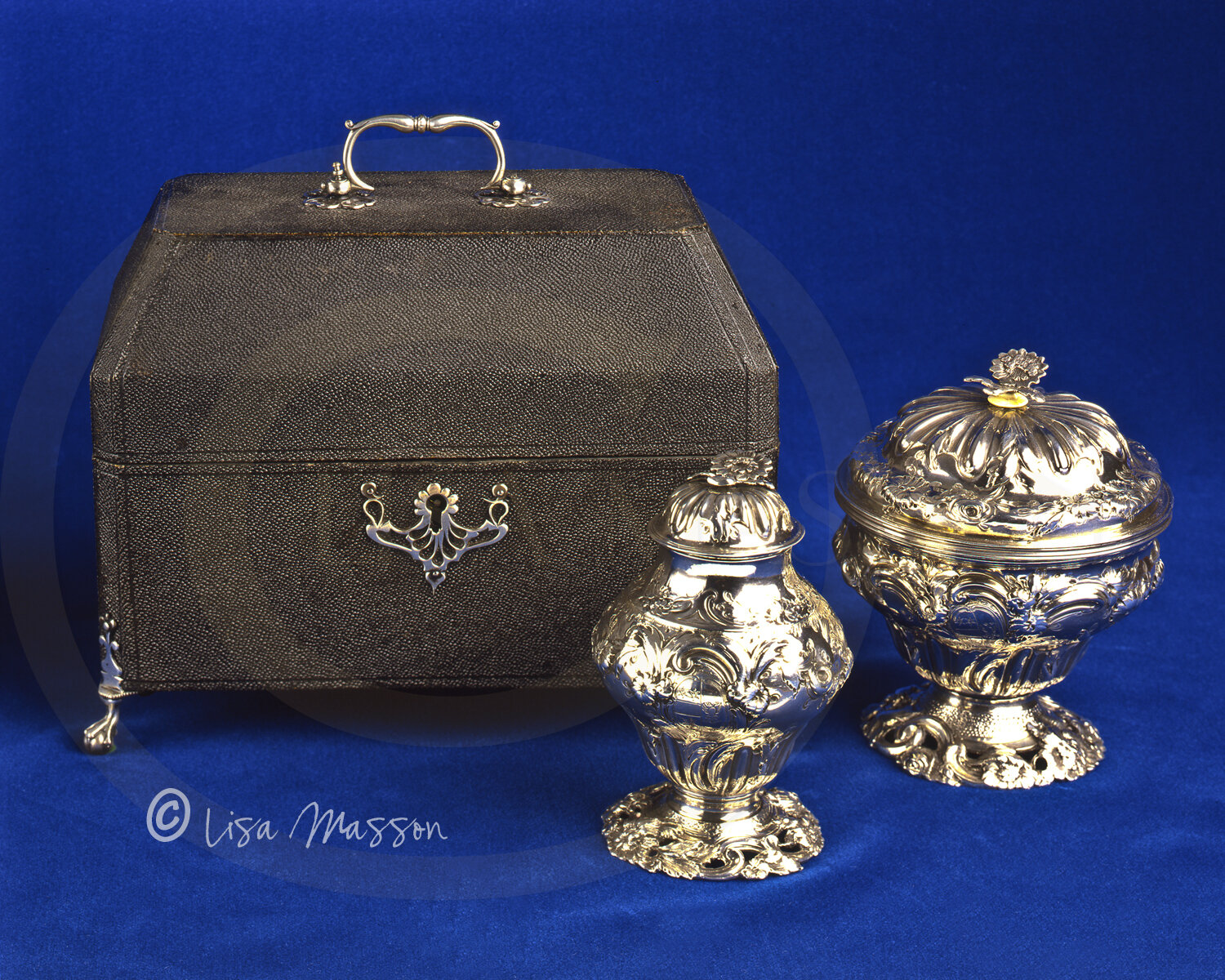
The Cockrell Tea Caddy collection, photographed for Southern Accents Magazine
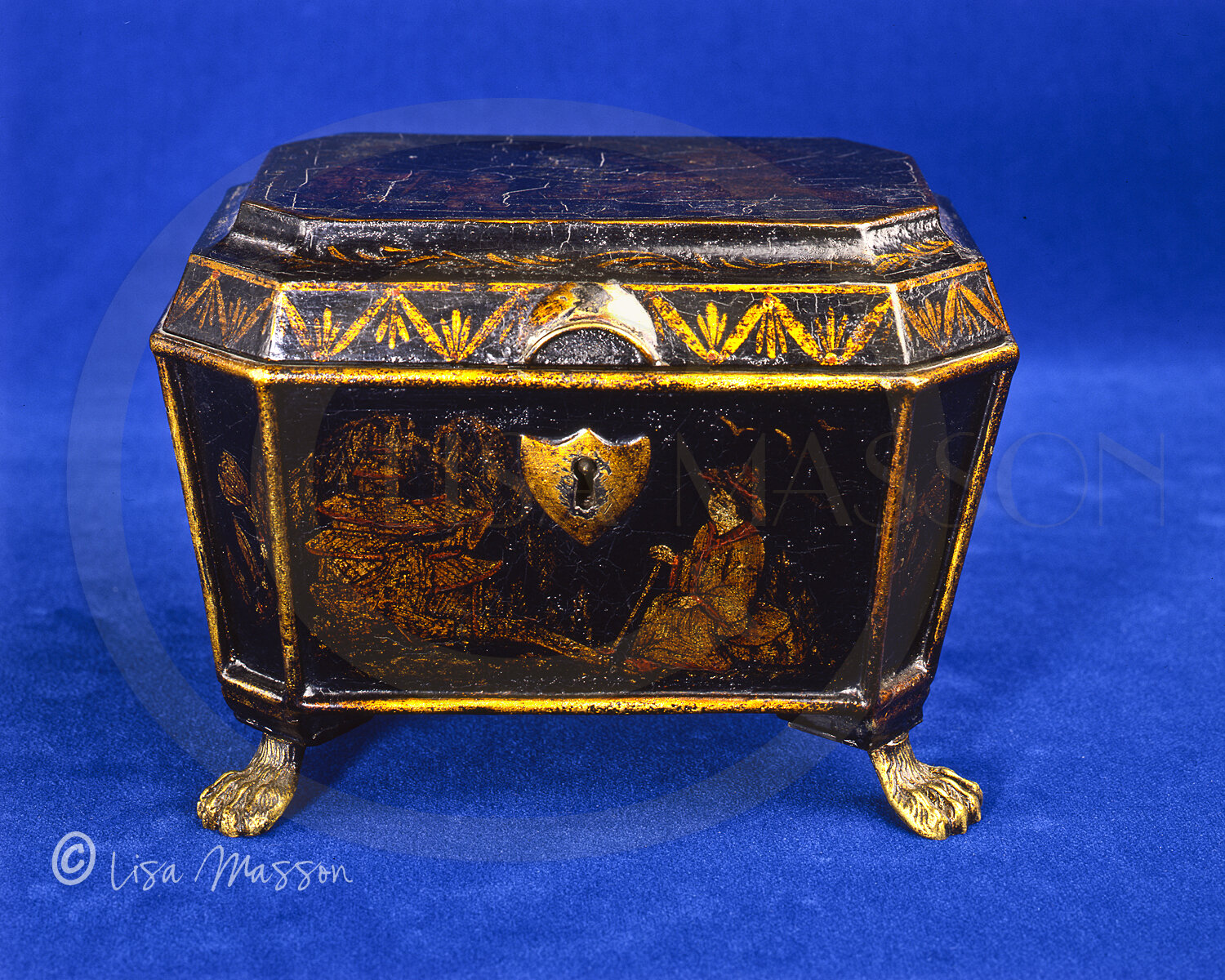
The Cockrell Tea Caddy collection, photographed for Southern Accents Magazine
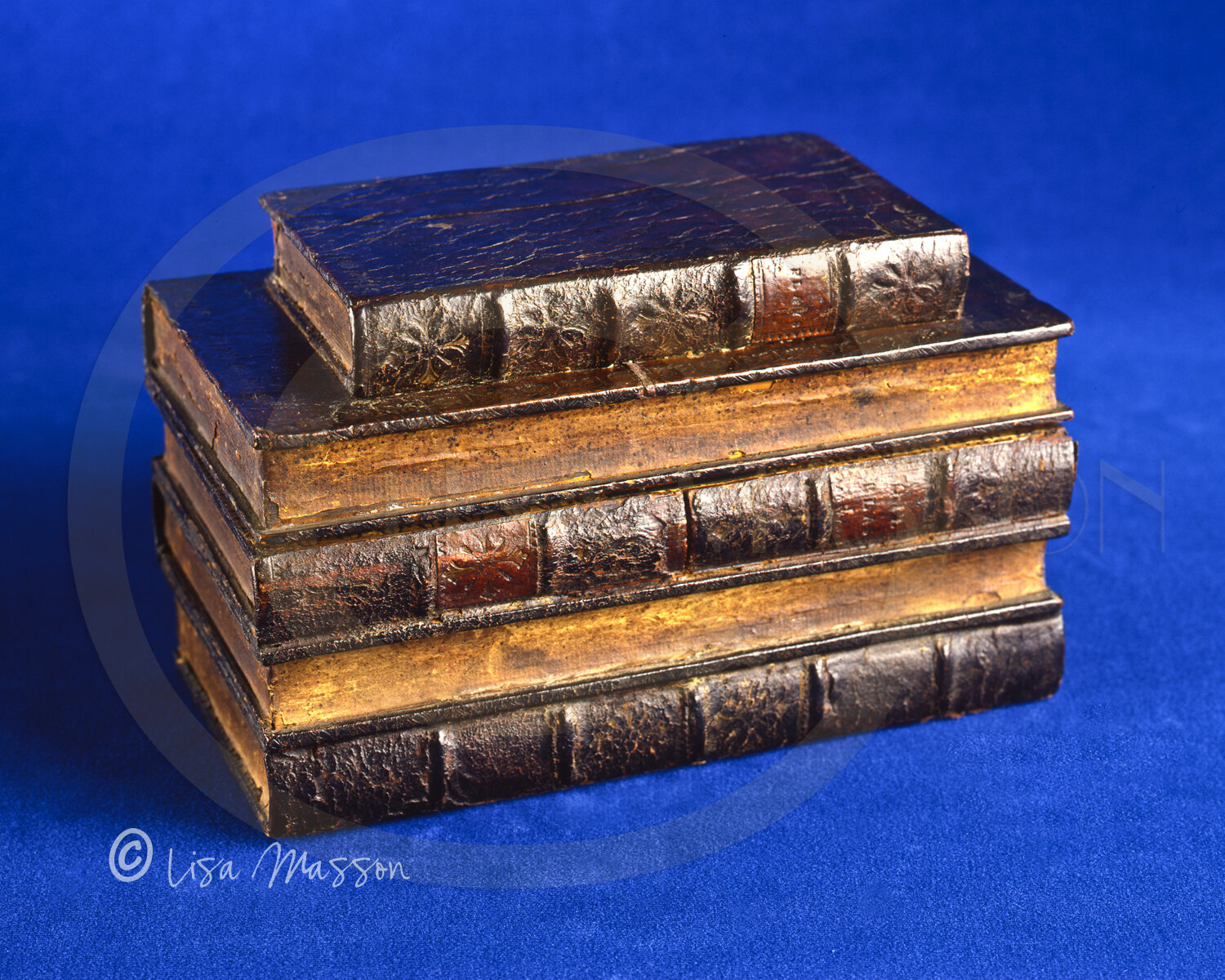
Stack of Books Tea Caddy
The Cockrell Tea Caddy collection, photographed for Southern Accents Magazine.
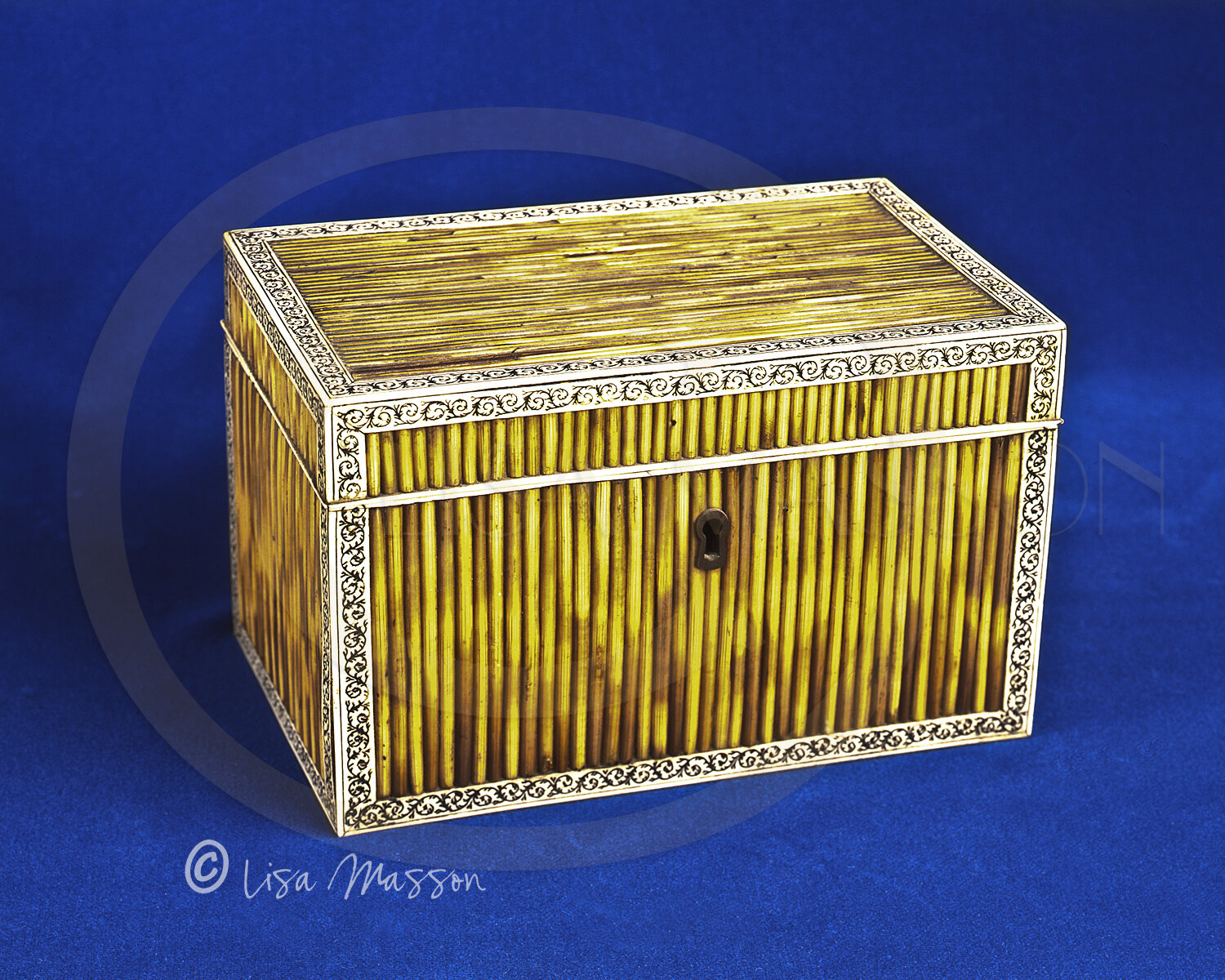
Bamboo Tea Caddy
The Cockrell Tea Caddy collection, photographed for Southern Accents Magazine.
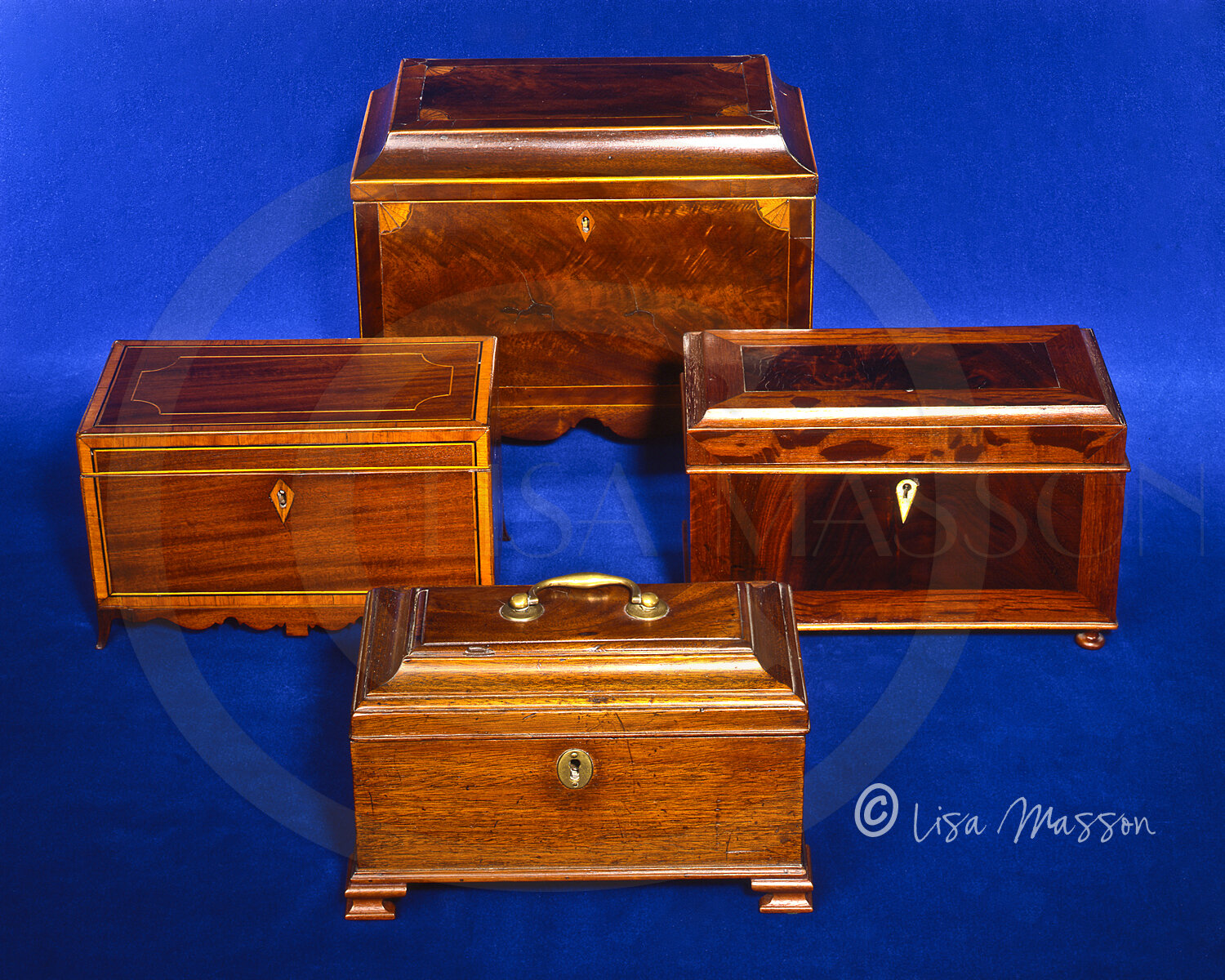
The Cockrell Tea Caddy collection, photographed for Southern Accents Magazine.
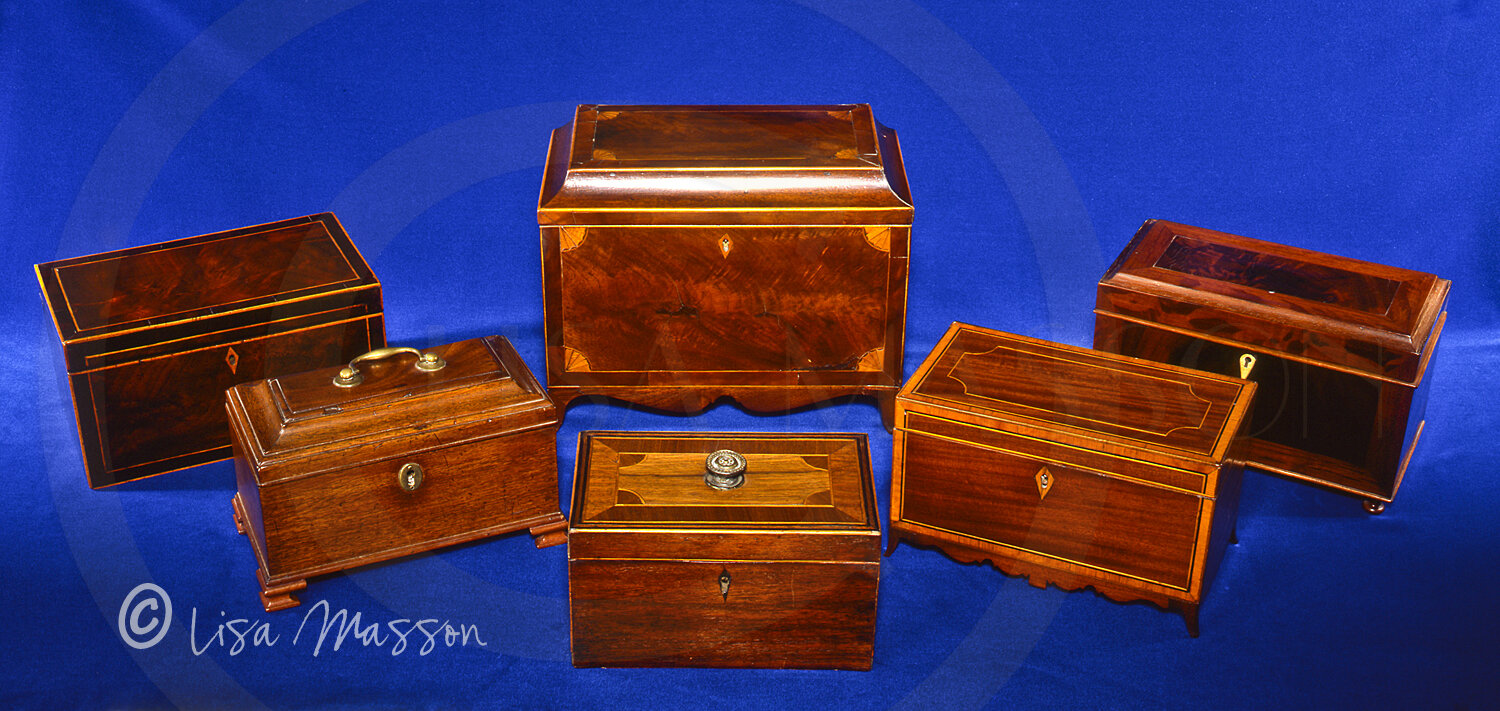
The Cockrell Tea Caddy collection, photographed for Southern Accents Magazine.




























































The silver fruit bowl, cruet stand, and salt cellars are the work of London silversmith Paul Storr circa 1798. A great-great-aunt executed the silk and wool needlework of flowers, fruits, and leaves.
Originally photographed for Southern Accents Magazine, in Maryland., text by Susan Stiles Dowell.
A large George lll silver waiter, engraved with family armorials, was made in London circa 1754. Handsomely wrought female heads adorn the pierced grapevine border. Family legend recounts how a newborn son was proffered on this three-foot tray as a birthday present to his twenty-one-year old father in 1800.
Originally photographed for Southern Accents Magazine, in Maryland., text by Susan Stiles Dowell.
A large George lll silver waiter, engraved with family armorials, was made in London circa 1754. Handsomely wrought female heads adorn the pierced grapevine border. Family legend recounts how a newborn son was proffered on this three-foot tray as a birthday present to his twenty-one-year old father in 1800.
Originally photographed for Southern Accents Magazine, in Maryland., text by Susan Stiles Dowell.
A hot water urn made in London circa 1770 by Charles Wright complements a tea service from the family of Francis Scott Key that was used at his wedding. The teapot, engraved with the crest and motto of the Key family, was made in London in 1799 by Robert and David Hennell, The circa 1796 cream pitcher and sugar bowl are the work of English silversmith John Schofield. The early 19th-Century export porcelain came from a Pittsburgh ancestress.
Originally photographed for Southern Accents Magazine, in Maryland., text by Susan Stiles Dowell.
Named for the large lobed leaves in the background, tobacco leaf export china, made in China circa 1760, also displays a characteristic red peony-type flower in the foreground. The owners’ set, inherited from the wife’s mother and aunt, includes covered vegetable dishes, platters and small compotes.
Originally photographed for Southern Accents Magazine, in Maryland., text by Susan Stiles Dowell.
Named for the large lobed leaves in the background, tobacco leaf export china, made in China circa 1760, also displays a characteristic red peony-type flower in the foreground. The owners’ set, inherited from the wife’s mother and aunt, includes covered vegetable dishes, platters and small compotes.
Originally photographed for Southern Accents Magazine, in Maryland., text by Susan Stiles Dowell.
A grouping of silver made in London during the reign of George lll indicates a family preference for English silver that persisted through the Revolution. Daniel Smith and Robert Sharp made the rococo sauceboat, two handled covered cup, sugar bowl, and scissor like sugar tongs circa 1768. The Chinese export charger is blue Fitzhugh. The dish cross beneath the Naking punch bowl includes its original lamp and dates to about 1796.
Originally photographed for Southern Accents Magazine, in Maryland., text by Susan Stiles Dowell.
Dining Room with generations of heirlooms.
Originally photographed for Southern Accents Magazine, in Maryland..
Dining room with generations of heirlooms.
Originally photographed for Southern Accents Magazine, in Maryland.
Blue Fitzhugh Chinese export covered cups.
Originally photographed for Southern Accents Magazine, in Maryland.
A miniature portrait on ivory surrounded by seed pearls, painted by celebrated miniaturist Richard Cosway circa 1774, depicts a bright young lady of London society who was a collateral ancestor of the owners.
Originally photographed for Southern Accents Magazine, in Maryland., text by Susan Stiles Dowell.
Ceres, the Roman goddess of agriculture, bears the family coat of arms on this bread basket intricately wrought with fruits and implements of the harvest. Among the wealthiest landowners in the South until the civil war, the owners’ ancestors had switched from tobacco to wheat cultivation well before the revolution. The large silver basket, made in London by John Wirgman, circa 1754, manifest both the source and magnitude of the family’s wealth.
Originally photographed for Southern Accents Magazine, in Maryland., text by Susan Stiles Dowell.
The Kirk Family acquired this 1818 Empire-Style Tea Set in the 188os for its collection. The original sugar bowl had been lost, and another was made to match the set in 18882. Dolphin handles and sea serpent spouts suggest Baltimore's maritime orientation, while the embossed acorns demonstrate an emergent interest in increased ornamentation, a development that would later lead to Kirk's repousse style.
Originally photographed for Southern Accents Magazine, at Maryland Historical Society, Baltimore, MD., text by Susan Stiles Dowell.
Original design drawing for this custom-made repousse coffeepot, circa 1890, survives from among the Maryland Historical Society's Kirk Archives. Design changes instituted between the inception and realization of the piece, probably used as a steeplechase trophy, are illustrated in the finial and the reversal of the jumping horses.
Originally photographed for Southern Accents Magazine, at Maryland Historical Society, Baltimore, MD., text by Susan Stiles Dowell.
The tureen, pitcher and cup are typical of Samual Kirk's repousse. The 1870 tureen with an arm-holding-sword finial exhibits a Turkish influence. The size and shape of the tall pitcher, circa 1860, are characteristic of his and, later, the firm's repousse stlye between 1830 and World War ll. The 1828 two-handled cup is one of the first know examples of use of the technique.
Originally photographed for Southern Accents Magazine, at Maryland Historical Society, Baltimore, MD., text by Susan Stiles Dowell.
in 1855, at a time when most porcelain made in the West copied silver pieces, Samuel Kirk produced an exquisite silver copy parian porcelain ewer. The grapes and vines handworked and applied to the ewer indicate its use for wine.
Originally photographed for Southern Accents Magazine, at Maryland Historical Society, Baltimore, MD., text by Susan Stiles Dowell.
Three examples of Kirk's work, commissioned by wealthy New York clients, diverge remarkably from the repousse style commonly associated with him. A naturalistic sugar basket was made for Thomas Fortune Ryan, founder of the New York Stock Exchange: a dinner plate bearing the crest and monogram of William Vincent Astor was made in the 1860's as part of a mammoth dinner service.
Originally photographed for Southern Accents Magazine, at Maryland Historical Society, Baltimore, MD., text by Susan Stiles Dowell.
Few examples of the small items of the silversmith's trade have survived the passage of time. The silver spectacles were made around 1815 in the infancy of Kirk's Baltimore business. A pair of 1880 shears, unusual in American silver, were probably used for clipping bunches of grapes at the dessert table. the 1915 flask re-creates a design taken from botanical engravings. The traveling candlestick and snuffer, circa 1850, is one of a pair that fits together when collapsed.
Originally photographed for Southern Accents Magazine, at Maryland Historical Society, Baltimore, MD., text by Susan Stiles Dowell.
Kirk's late 19th-century interpretation of what Oriental metalwork might look like appears in a square coffee pot with tall, thin.legs, a naturalistic repousse surface, and a Chinese coolie finial.
Originally photographed for Southern Accents Magazine, at Maryland Historical Society, Baltimore, MD., text by Susan Stiles Dowell.
Possibly made to hold syrup, an imaginative and finely wrought pitcher, circa 1840, sports a wyvern handle and harpy figure, beneath a shell spout.
Originally photographed for Southern Accents Magazine, at Maryland Historical Society, Baltimore, MD., text by Susan Stiles Dowell.
19th century; repousse style; artisan; coffee pot with a botanical motif
Originally photographed for Southern Accents Magazine, at Maryland Historical Society, Baltimore, MD.
Kirk silver pitcher with goats and an angel.
Originally photographed for Southern Accents Magazine, at Maryland Historical Society, Baltimore, MD.
Kirk Silver Pot with wooden handle, covered urn, botanical repousse.
Originally photographed for Southern Accents Magazine, at Maryland Historical Society, Baltimore, MD.
Kirk silver creamer, small bowl and wine goblet.
Kirk silver, on the left, among the earliest extant examples of Kirk’s work. made after he moved from Philadelphia to Baltimore, is an 1840 horse racing trophy
Originally photographed for Southern Accents Magazine, at Maryland Historical Society, Baltimore, MD.
This image is the “krasny kut” or “beautiful corner” that contains the Laurence A. Steinhardt icon collection. Enhanced by the vermillion setting originally discovered by Ambassador Steinhardt’s daughter in a Moscow mansion, icons completely cover the four walls from ceiling to floor. The grandeur of the Directoire furniture, in the family for five generations, adds a classic touch to the old-world scene. Among the significant treasures on the buffet are 19th-century bronzes of Czar Mikhail Theodoivich and Czar Alexei Mikhailovich, a handsome royal caviar server once presented to the czar, and a pair of French Empire urns.
Photographed for Southern Accents Magazine in Washington, DC. Text by Lucy Putnam Post.
In this important 18th-m century carved ivory icon, a central scene of the Resurrection is surrounded by the 12 feast days of the Orthodox Church. Past ambassador to Russia, Jack F. Matlock, Jt., was amazed to see this “very rare” icon outside a museum.
Photographed for Southern Accents Magazine in Washington, DC. Text by Lucy Putnam Post.
This rare icon depicting Our Lady Tichvinskaya dates from the early 1700s and is covered with a gesso, carved riza (metal surround), and gold leaf overlay.
Photographed for Southern Accents Magazine in Washington, DC. Text by Lucy Putnam Post.
Our Lady of Intercession is a very special image to the religious devotee of the Russian Orthodox Church. This Icon with silver basma (decorative metal border) and carved, gilded frame in byzantine style depicts six feasts of the Orthodox Church
Photographed for Southern Accents Magazine in Washington, DC. Text bu Lucy Putnam Post.
The Mother of God of Smolensk centers this mid-17th-century triptych. The left wing of the triptych depicts the Resurrection, Annunciation, and the Crucifixion of Christ, while the right wing carries a painting of the Decollation of Saint John the Baptist with Christ Emmanuel.
Photographed for Southern Accents Magazine in Washington, DC. Text bu Lucy Putnam Post.
Dating back to the early 1800s and a focal point in Steinhardt icon room is this glorious image of Saint Nicholas, the Miracle Worker. the painted border simulates enamel. Christ and Mother of God float in the clouds on each side of Saint Nicholas.
Photographed for Southern Accents Magazine in Washington, DC. Text by Lucy Putnam Post.
This menological icon, or all-saints calendar is recorded to be from the 17th-century School of Stroganov. The upper border is centered by a painting of the Old Testament Trinity. The register below the border shows Christ enthroned and flanked by the Mother of God and Saint John the baptist. Lower registers depict church fathers and various saints.
Photographed for Southern Accents Magazine in Washington, DC. Text bu Lucy Putnam Post.
Photographed for Southern Accents Magazine in Washington, DC.
Dating from the early 1600s, this icon depicting the Annunciation has a silver and gilt basma with an exquisite border of pearls.
Photographed for Southern Accents Magazine in Washington, DC. Text by Lucy Putnam Post.
Russian Icon
Photographed for Southern Accents Magazine in Washington, DC
The mother of God of Kazan is depicted in the provincial 19th-century icon on the left. A Russian triptych with Saint Nicholas, the Miracle Worker, is in the center surrounded by scenes from his life; wings of the triptych show eight other life scenes, four on each wing, The extremely popular Saint Elijah is seen in the small icon on the right, circa 1900 with a silver and gilt riza.
Photographed for Southern Accents Magazine in Washington, DC. Text by Lucy Putnam Post.
Russian Icons
Photographed for Southern Accents Magazine in Washington, DC
A Russian triptych with Saint Nicholas, the Miracle Worker, is in the center surrounded by scenes from his life; wings of the triptych show eight other life scenes, four on each wing.
Photographed for Southern Accents Magazine in Washington, DC. Text by Lucy Putnam Post.
Russian Icon
Photographed for Southern Accents Magazine in Washington, DC
Photographed for Southern Accents Magazine in Washington, DC
Photographed for Southern Accents Magazine in Washington, DC
Russian Icons
Photographed for Southern Accents Magazine in Washington, DC
Russian Icon
Photographed for Southern Accents Magazine in Washington, DC
Russian Icons
Photographed for Southern Accents Magazine in Washington, DC.
The extremely popular Saint Elijah is seen in this small icon, circa 1900 with a silver and gilt riza.
Photographed for Southern Accents Magazine in Washington, DC. Text by Lucy Putnam Post.
The mother of God of Kazan is depicted in the provincial 19th-century icon
Photographed for Southern Accents Magazine in Washington, DC. Text by Lucy Putnam Post.
Photographed for Southern Accents Magazine in Washington, DC
Russian Icon Mother and Child.
Photographed for Southern Accents Magazine in Washington, DC
Photographed for Southern Accents Magazine in Washington, DC
A high-ranking Chinese government official gave this animal carving of Serbian jade to a young naval officer who was on temporary duty in China during the last year of World War ll. That navy officer was Lieutenant Claude Trapp, and this early 20-century carving began his lifelong enchantment with jade. Some 30 years later, Dr Trapp asked the late George Headley to to design a setting for this jade beauty with a jeweled cage of diamonds and rubies, plus a nephrite plaque.
The Trapp Jade Collection, photographed for Southern Accents Magazine in Lexington, Kentucky. Text by Lucy Putnam Post
The sacrificial wine cup in the left foreground is from the Sung dynasty (A.D.960-1279). Buried in a royal tomb for centuries, the nephrite jade has discolored, a characteristic of tomb jades left in contact with the earth over a long period of time. The tiny nephrite amulet in the right foreground is carved as a fish and dates back to the Zhou dynasty (1050 B.C. to A.D. 256). Like many ancient jades, the Han dynasty bracelet-like burial piece (206 B.C. to A.D. 220) has been difficult to identify with certainty.
The Trapp Jade Collection, photographed for Southern Accents Magazine in Lexington, Kentucky. Text by Lucy Putnam Post
From the dawn of their civilization, emperors of China spoke to the heaven through the pi. The most scared of all Chinese religious symbols, the pi was comparable to the cross or crucifix of Christendom. A temple coin on the left is carved in the pi form and dates back to the Ming period (A.D.1368-1644), but the grey nephrite piece is a copy of a much earlier Han dynasty coin (206 B.C to A.D. 220). The center pi is covered with hexagonal pyramids and bizarre archaistic animals on the rim. The ancient pi amulet on the right was carved with a baby dragon called a chilong. This nephrite jade was exposed to fire, resulting in the particular shade termed “chicken-bone” white.
The Trapp Jade Collection, photographed for Southern Accents Magazine in Lexington, Kentucky. Text by Lucy Putnam Post
Carved form a single, undivided block of nephrite, this exquisite 20-century urn with its intricate cover and 18-link chain is a tribute to the rare skills of the artists and workmen involved.
The Trapp Jade Collection, photographed for Southern Accents Magazine in Lexington, Kentucky. Text by Lucy Putnam Post
The patience, dedication, and expertise vital to a superior jade collection is borne out in the group of early nephrite carvings always associated with the desk of the artist, calligrapher, or scholar.
A delicate nephrite fragment from the Han dynasty (2006 B.C to A.D. 220); an artist’s brush pot, carved in the early years of the nineteenth century, together with a celadon jadeite wrist rest and two jadeite hand scroll weights from the same era; a nephrite water dropper from the 1700s; a brush washer from the era of Emperor Qian Long (A.D. 1736-1795); a nephrite brush rest and ink stone from the eighteenth century are all part of this collection within this collection.
The Trapp Jade Collection, photographed for Southern Accents Magazine in Lexington, Kentucky. Text by Lucy Putnam Post
Three centuries- the 18th, 19th, and 20th- are spanned by this triad of spinach jade. The contemporary plate in the background is a superb example of this unusual jade color, so called because of the black flecks and translucent quality. The late 19th-century marriage bowl on the right was carved from one solid block of Siberian nephrite taken form the Lake Baikal region of the USSR. Dating back to the 1700s, the ruyi scepter in the foreground is an imperial emblem that was traditionally displayed before the emperors’s throne.
The Trapp Jade Collection, photographed for Southern Accents Magazine in Lexington, Kentucky. Text by Lucy Putnam Post
The raison d’e´tre for Jade Mountain was inspirational to the viewer, mediation for the artist, calligrapher, and scholar. Carved from a single chunk of jade in the 1700s, the intricate design portrays two sages on a rocky ledge overlooking a river gorge. Chinese emperors had a passion for poetry and often inscribed their verse in gold on the surface of a large jade piece. (Note the area above the two figures.
The Trapp Jade Collection, photographed for Southern Accents Magazine in Lexington, Kentucky. Text by Lucy Putnam Post
The Trapp Jade Collection, photographed for Southern Accents Magazine in Lexington, Kentucky.
The Trapp Jade Collection, photographed for Southern Accents Magazine in Lexington, Kentucky.
The Trapp Jade Collection, photographed for Southern Accents Magazine in Lexington, Kentucky.
The Trapp Jade Collection, photographed for Southern Accents Magazine in Lexington, Kentucky.
The Trapp Jade Collection, photographed for Southern Accents Magazine in Lexington, Kentucky.
The Trapp Jade Collection, photographed for Southern Accents Magazine in Lexington, Kentucky.
The Trapp Jade Collection, photographed for Southern Accents Magazine in Lexington, Kentucky.
The Trapp Jade Collection, photographed for Southern Accents Magazine in Lexington, Kentucky.
The Trapp Jade Collection, photographed for Southern Accents Magazine in Lexington, Kentucky.
India ink was used to darken the light-colored wood around the floral designs of this English caddy, 1810.
The Cockrell Tea Caddy collection, photographed for Southern Accents Magazine. Text by Palmer Graham
Covered with split and colored straw, this wooden bombe´ English chest, circa 1800, holds two tea boxes. Many such chests and caddies were made in England during the Napoleonic War by French prisoners, who were paid for their upkeep by selling their products in local markets.
The Cockrell Tea Caddy collection, photographed for Southern Accents Magazine. Text by Palmer Graham
At center an English chest, circa 1770, contains removable canisters and sugar box. The flanking caddies have separate compartments for different teas but no removable containers. At left, the French caddy, circa 1820, features hand-painted scenes on maple, at right, the English caddy, 1830, was decorated by a wax-resist method.
The Cockrell Tea Caddy collection, photographed for Southern Accents Magazine. Text by Palmer Graham
Engraved brass embellished a trunk-shaped burled walnut English caddy, circa 1860.
The Cockrell Tea Caddy collection, photographed for Southern Accents Magazine. Text by Palmer Graham
Three tin canisters - two for tea and one for sugar- fit into an English mahogany chest, circa 1750. A secret drawer can be opened by removing a canister and lifting the side panel, The six spoons were made in London by John Lautier in 1776.
The Cockrell Tea Caddy collection, photographed for Southern Accents Magazine. Text by Palmer Graham
A pagoda-shaped English caddy of ivory, mother-of-pearl, and tortoiseshell, circa 1830, suggests the Eastern origins of tea and its containers.
The Cockrell Tea Caddy collection, photographed for Southern Accents Magazine. Text by Palmer Graham
A combination of inlay and etching decorates an oval satinwood caddy, made in England circa 1810.
The Cockrell Tea Caddy collection, photographed for Southern Accents Magazine. Text by Palmer Graham
The Cockrell Tea Caddy collection, photographed for Southern Accents Magazine.
The Cockrell Tea Caddy collection, photographed for Southern Accents Magazine.
The Cockrell Tea Caddy collection, photographed for Southern Accents Magazine.
The Cockrell Tea Caddy collection, photographed for Southern Accents Magazine
The Cockrell Tea Caddy collection, photographed for Southern Accents Magazine
Stack of Books Tea Caddy
The Cockrell Tea Caddy collection, photographed for Southern Accents Magazine.
Bamboo Tea Caddy
The Cockrell Tea Caddy collection, photographed for Southern Accents Magazine.
The Cockrell Tea Caddy collection, photographed for Southern Accents Magazine.
The Cockrell Tea Caddy collection, photographed for Southern Accents Magazine.
